

Previous Awards Recipients
Bill Dennis Award
2025 Canadian Malartic Exploration Team
For the discovery of the East Gouldie Deposit in Malartic, Quebec.
The Canadian Malartic Exploration Team was selected for the 2025 Bill Dennis Award for their extraordinary discovery of the East Gouldie gold deposit at Agnico Eagle Mines Limited’s Odyssey mine at the Canadian Malartic complex in Quebec’s Abitibi region. This discovery, made in 2018, represents a major milestone in Canadian mineral exploration due to its size, geological significance and economic value.
The East Gouldie deposit was uncovered by the Canadian Malartic General Partnership (a joint venture in which Agnico Eagle and Yamana Gold Inc. each owned a 50% interest until Agnico Eagle acquired Yamana’s Canadian assets in March 2023) through a deep drilling program that targeted unexplored areas 600 metres south of the historically mined East Malartic deposit and 1.5 kilometres east of the open pits at Canadian Malartic. This effort marked a bold but calculated risk, as the team drilled beyond known mineralization in search of new gold zones at significant depth. The first discovery hole intersected substantial high-grade gold mineralization over a long width, revealing the existence of a previously unknown large gold-bearing structure. Follow-up drilling firmly established the discovery as a major new deposit. The aggressive drilling program completed over the next six years showcased the deposit’s remarkable continuity in grade, thickness, and lateral and vertical extents, as well as a favourable shape for underground bulk mining — all of which significantly enhanced East Gouldie’s economic potential and mining feasibility.
The geological significance of the East Gouldie deposit lies in its unique location, 700 metres south of the major Cadillac Larder Lake deformation zone that has historically hosted the region’s major gold deposits. The discovery opens up the potential to make new discoveries within the region’s extensive but underexplored metasedimentary rock units.
By the end of 2023, the East Gouldie deposit boasted 5.2 million ounces gold in mineral reserves, 240,000 ounces in indicated mineral resources and 3.3 million ounces in inferred mineral resources. Moreover, East Gouldie’s high grades have enhanced the economic viability of the Odyssey mine’s East Malartic and Odyssey gold deposits that will now be entering production in stages alongside East Gouldie.
The discovery of the East Gouldie deposit has been the key driver of the Odyssey mine project, which is transitioning the Canadian Malartic complex from one of Canada’s largest open pit mines to Canada’s largest underground operation.

The Odyssey mine’s proximity to existing infrastructure, including the Canadian Malartic mill, has allowed for rapid and cost-effective mine development, with shaft sinking underway in March 2023, along with first production from the Odyssey South zone via a new ramp. By mid-2024, the ramp had reached the upper levels of East Gouldie, with first production from the deposit expected in 2026.
The Odyssey mine is expected to produce an average of 558,000 ounces of gold annually from 2029 to 2041, ensuring its place as one of the world’s largest gold mines. The rapid development timeline is a testament to the effective collaboration between mining engineers and the exploration team, who have worked tirelessly to translate their exploration success into tangible economic and operational outcomes.
The exploration team’s perseverance, technical expertise, and commitment to innovation have been central to the success of this discovery. The team’s ability to integrate historical mining data with modern exploration techniques, coupled with their deep understanding of the region’s geology, played a pivotal role in uncovering East Gouldie. The economic impact of the East Gouldie discovery is immense, not only for Agnico Eagle but also for the surrounding communities in Quebec's Abitibi region, providing long-term employment, business opportunities, and revenue.
2024 John Burzynski and the Osisko Mining Inc. Exploration Team
For the discovery and ongoing expansion of the Windfall deposit’s Lynx gold zone located in the Abitibi greenstone belt, Eeyou Istchee James Bay, Québec.
The Canadian Malartic Exploration Team was selected for the 2025 Bill Dennis Award for their extraordinary discovery of the East Gouldie gold deposit at Agnico Eagle Mines Limited’s Odyssey mine at the Canadian Malartic complex in Quebec’s Abitibi region. This discovery, made in 2018, represents a major milestone in Canadian mineral exploration due to its size, geological significance and economic value.
The East Gouldie deposit was uncovered by the Canadian Malartic General Partnership (a joint venture in which Agnico Eagle and Yamana Gold Inc. each owned a 50% interest until Agnico Eagle acquired Yamana’s Canadian assets in March 2023) through a deep drilling program that targeted unexplored areas 600 metres south of the historically mined East Malartic deposit and 1.5 kilometres east of the open pits at Canadian Malartic. This effort marked a bold but calculated risk, as the team drilled beyond known mineralization in search of new gold zones at significant depth. The first discovery hole intersected substantial high-grade gold mineralization over a long width, revealing the existence of a previously unknown large gold-bearing structure. Follow-up drilling firmly established the discovery as a major new deposit. The aggressive drilling program completed over the next six years showcased the deposit’s remarkable continuity in grade, thickness, and lateral and vertical extents, as well as a favourable shape for underground bulk mining — all of which significantly enhanced East Gouldie’s economic potential and mining feasibility.
The geological significance of the East Gouldie deposit lies in its unique location, 700 metres south of the major Cadillac Larder Lake deformation zone that has historically hosted the region’s major gold deposits. The discovery opens up the potential to make new discoveries within the region’s extensive but underexplored metasedimentary rock units.
By the end of 2023, the East Gouldie deposit boasted 5.2 million ounces gold in mineral reserves, 240,000 ounces in indicated mineral resources and 3.3 million ounces in inferred mineral resources. Moreover, East Gouldie’s high grades have enhanced the economic viability of the Odyssey mine’s East Malartic and Odyssey gold deposits that will now be entering production in stages alongside East Gouldie.
The discovery of the East Gouldie deposit has been the key driver of the Odyssey mine project, which is transitioning the Canadian Malartic complex from one of Canada’s largest open pit mines to Canada’s largest underground operation.
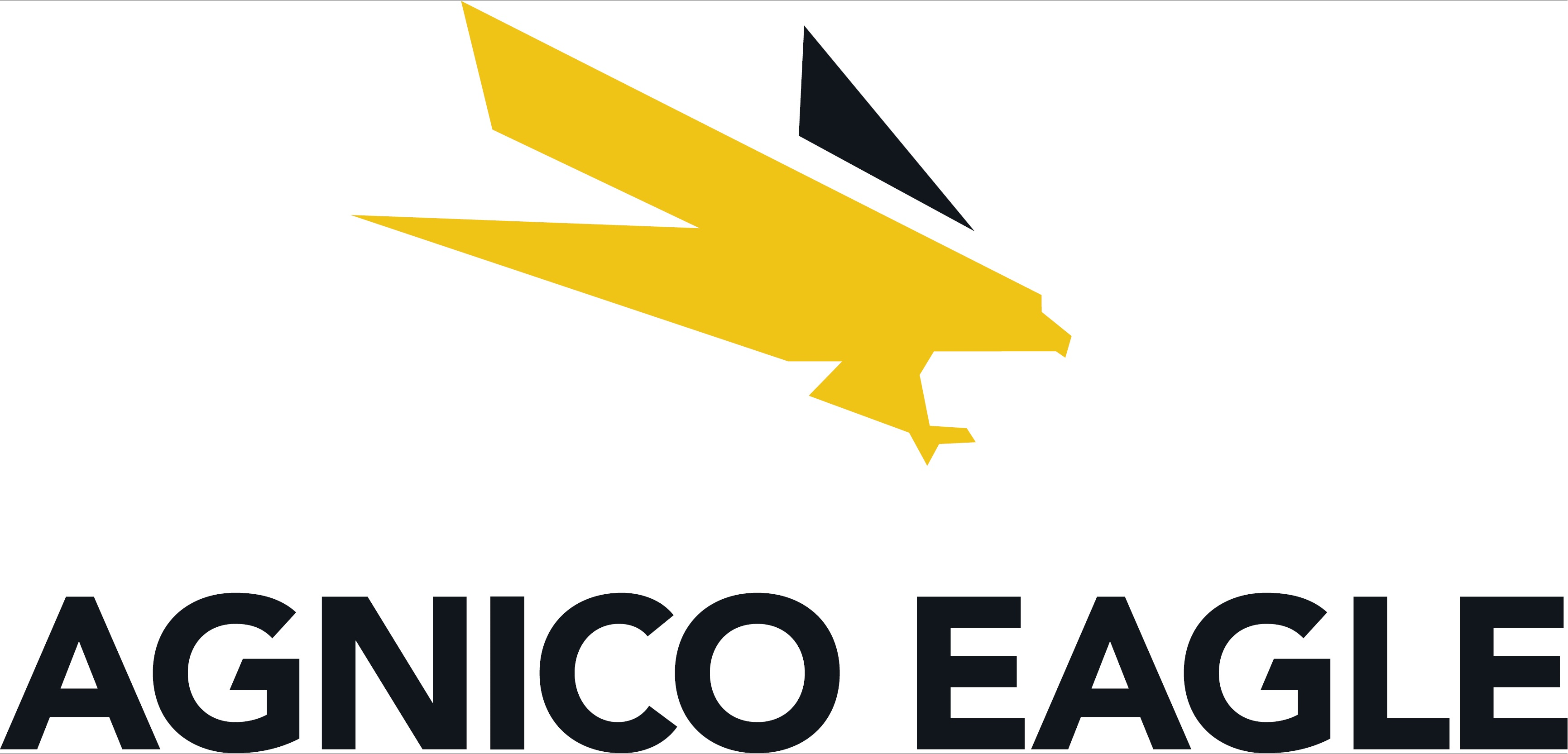
The Odyssey mine’s proximity to existing infrastructure, including the Canadian Malartic mill, has allowed for rapid and cost-effective mine development, with shaft sinking underway in March 2023, along with first production from the Odyssey South zone via a new ramp. By mid-2024, the ramp had reached the upper levels of East Gouldie, with first production from the deposit expected in 2026.
The Odyssey mine is expected to produce an average of 558,000 ounces of gold annually from 2029 to 2041, ensuring its place as one of the world’s largest gold mines. The rapid development timeline is a testament to the effective collaboration between mining engineers and the exploration team, who have worked tirelessly to translate their exploration success into tangible economic and operational outcomes.
The exploration team’s perseverance, technical expertise, and commitment to innovation have been central to the success of this discovery. The team’s ability to integrate historical mining data with modern exploration techniques, coupled with their deep understanding of the region’s geology, played a pivotal role in uncovering East Gouldie. The economic impact of the East Gouldie discovery is immense, not only for Agnico Eagle but also for the surrounding communities in Quebec's Abitibi region, providing long-term employment, business opportunities, and revenue.
2023 Chris Taylor and the Great Bear Resources Exploration Team
For the discovery of the Dixie gold deposit when others believed all the multi-million ounce deposits in Ontario's Red Lake camp had been found.
The Dixie project in the Red Lake gold camp of northern Ontario has been subject to intermittent exploration since 1985. Industry consensus was that whatever potential existed there had been investigated and found wanting.
But Great Bear Resources CEO, Chris Taylor and VP Exploration, Bob Singh figured there was a lot more gold to be discovered, starting with the previously identified Dixie Limb zone. They used a wealth of historical data, including a suite of more than 150 drill holes, to construct a new model of mineralization. Chris, a structural geologist, was so convinced previous explorers had misinterpreted the geology that he used his personal line of credit to finance early exploration.
Their educated gamble paid off. The Great Bear team made its first major discovery – the Hinge zone – in August 2018 by targeting a regional fold axis. Shallow drill intersections, such as 16.4 metres grading 27 grams per tonne gold, caught the market's attention and allowed the company to raise $10 million for further work.

Subsequent exploration and structural interpretation led to more discoveries in rapid succession. During 2019, Great Bear found the Bear-Rimini, Yuma, Auro, Yauro, Viggo and Gap zones. Follow-up drilling confirmed these discoveries were part of a larger continuous zone of gold mineralization later called the LP Fault Zone. Unlike the vein-hosted gold mineralization typical of Red Lake, the mineralization was sheet-like, containing high-grade zones within lower grade haloes.
In February 2022, Kinross Gold purchased Great Bear for $1.8 billion, or $29 per share, even before the technical team had a chance to estimate resources for Dixie. The senior gold producer plans to develop the project into a top tier, long-life mine. As an added bonus, Great Bear’s discovery has reinvigorated exploration in the Red Lake camp, where geoscientists now have access to a new model of mineralization to find more gold.
2022 Charlie Greig
For the discovery of the Saddle North gold-rich copper porphyry deposit and the Saddle South vein gold-silver zone in the Golden Triangle region of British Columbia.
Charlie Greig, Vice-President of Exploration at GT Gold, and his fellow explorers were ecstatic when they drilled soil anomalies at the Tatogga project in 2017 and intersected high grade gold. The GT Gold team had uncovered a brand new epithermal gold-silver vein system they called Saddle South in the prolific Golden Triangle camp of northwestern BC.
But the best was yet to come. The team launched a separate drill program about 1.5 kilometres northeast of the precious metals discovery to test a coincident soil geochemical and geophysical anomaly, partially underlain by strong alteration visible in subcrop. In September 2018 they intersected 430 metres of 0.7 grams per tonne (gpt) gold and 0.4% copper. More impressive intercepts followed. Newmont invested in GT Gold and subsequently raised its stake from 10% to 15% via an $8.3 million private placement, a sure sign the world’s largest gold producer had faith in GT Gold’s new finds.
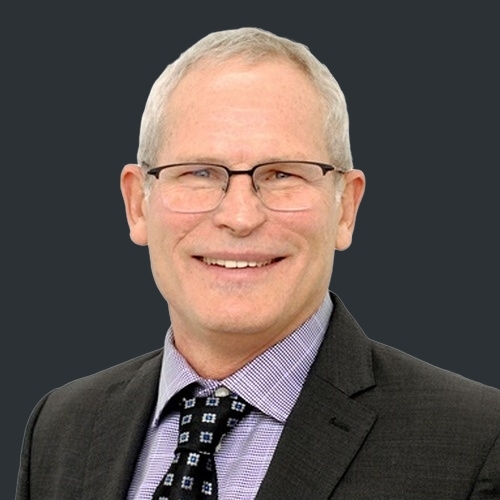
A maiden estimate for Saddle North completed in 2020 calculated indicated resources of 298 million tonnes grading 0.28% copper, 0.36 gpt gold and 0.8 gpt silver, and inferred resources of 543 million tonnes at 0.25% copper, 0.31 gpt gold and 0.7 gpt silver.
In mid-2021 Newmont paid $393 million to acquire full ownership of GT Gold, stating that the "Tatogga project, including the primary Saddle North deposit, has the potential to contribute significant gold and copper annual production at attractive all-in sustaining costs over a long mine life. In addition to the known deposits at Saddle North, there are further exploration opportunities throughout the land package."
2021 Phillip Walford & Sherry Dunsworth
For the discovery and delineation of Valentine, the largest undeveloped gold resource in Atlantic Canada.
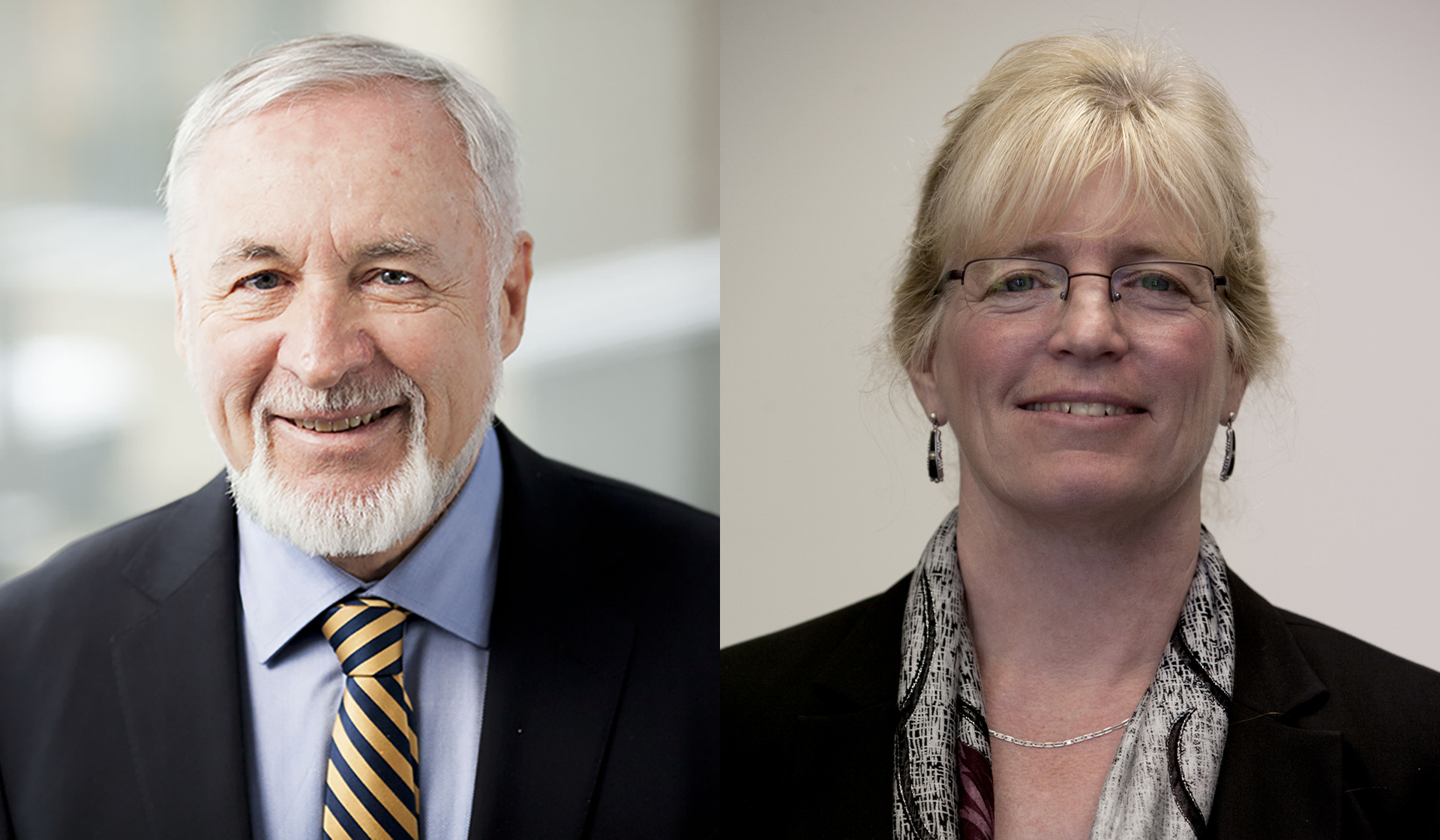
After 25 years of sporadic exploration, the Valentine gold project in Newfoundland was growing stale. There seemed little hope of improving on a sub-economic non-compliant resource of less than half a million ounces announced in 2004.
Everything changed in 2010 when Phillip Walford and Sherry Dunsworth arrived on the scene looking for a multi-million ounce gold acquisition. The two experienced geologists determined that the controls on gold mineralization were poorly understood at Valentine. They developed a new orogenic model that allowed their company, Marathon Gold, to delineate the largest undeveloped gold resource in Atlantic Canada and one of the leading gold development projects in North America.
The first four years were tough. The markets were still recovering from the recession of 2007-2009 and the gold price was just beginning to climb above US$1,000 per ounce. Financing was hard to come by. Yet the team persevered, led by Phill as President and Sherry as Vice-President of Exploration. The more they explored, the more they learned about the structural controls on existing gold zones. This growing understanding of the geological model led to the discovery of satellite deposits along a 20-kilometre strike length of the Valentine Lake Shear Zone.
The breakthrough came in 2014 when the team discovered the plus-three-million-ounce Marathon deposit by following up historical soil anomalies. More discoveries would follow, changing the landscape of geological thinking in Eastern Canada and highlighting Newfoundland and Labrador as a top jurisdiction for global exploration spending.
The April 22, 2020 press release of the updated technical report and pre-feasibility study on the Valentine Gold Project states that the Proven and Probable Reserves are 1.87 million ounces (41.05 million tonnes at 1.41 grams per tonne gold). These reserves are included in the mineral resources which are measured and indicated resources of 3.09 million ounces (54.9 million tonnes at 1.75 grams per tonne gold) and inferred resources containing 0.96 million ounces (16.77 million tonnes at 1.78 grams per tonne gold).
2020 Rudy Wahl
For his enduring perseverance as a prospector and the discovery of several precious metal, diamond and rare earth occurrences in northwestern Ontario.
Rudy Wahl has made several significant discoveries in Ontario. A self-taught master of ore deposit models and exploration techniques, he has inspired others to pursue prospecting as a career and generously shared his knowledge of the craft.
Known as one of the most productive prospectors in Ontario, Rudy has optioned more than 30 of his properties to companies eager to invest in further exploration. His discoveries represent a diverse range of commodities and deposit types, including gold, uranium, rare earth elements, diamonds and niobium.
For his exceptional accomplishments, he received an Honorary Doctorate Degree in Science from Lakehead University in Thunder Bay in 2017. A year later, he was elected to the Northwestern Ontario Prospectors Association’s (NWOPA) Board of Directors, and in 2019 he was elected to Vice President.

2019 Peregrine Diamonds Ltd. and BHP, Chidliak Discovery Team
For the discovery of the Chidliak diamond district on Baffin Island, Nunavut.
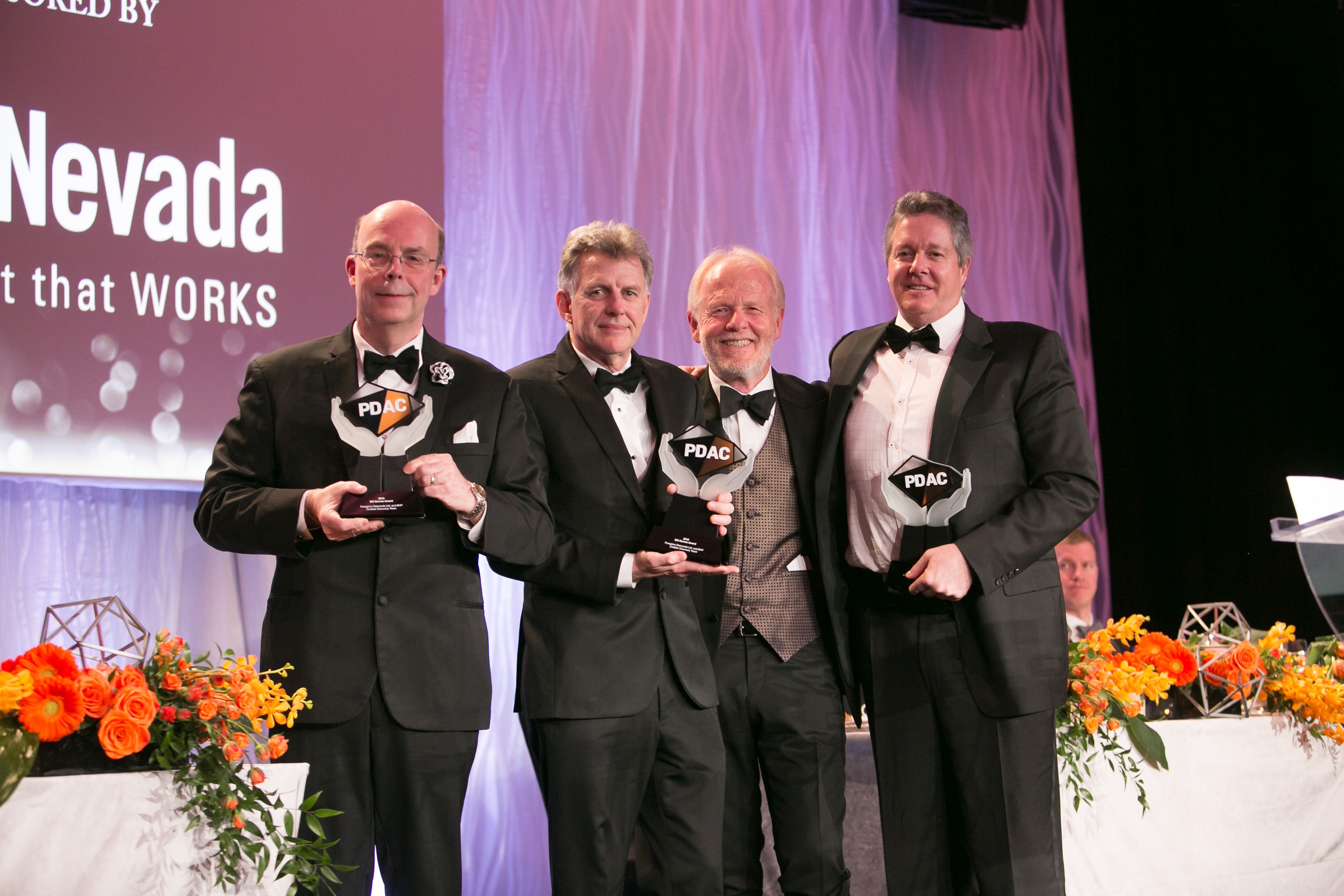
In 2008, the Peregrine Diamonds and BHP exploration team made the grassroots discovery of the Chidliak Diamond District, near Iqaluit on Baffin Island, Nunavut--Canada’s second largest kimberlite district.
Exploration programs and engineering studies completed between 2008 and 2018 led to the discovery of 74 kimberlites, one of which has a 17.96 million carat inferred mineral resource with an average grade of 2.41 carats per tonne and average diamond value of US$151 per carat, with six other kimberlites having economic potential.
A 2018 Preliminary Economic Assessment outlined an open pit mine with a 13-year mine life and post-tax NPV of CAD$668.7 million and IRR of 31.2%. Peregrine was acquired by De Beers Canada in 2018, and it is anticipated that Chidliak will become Canada’s next diamond mine.
2018 NexGen Energy Ltd.
For the discovery of the Arrow uranium deposit in the Athabasca Basin of Saskatchewan, Canada.

NexGen Energy discovered the Arrow uranium deposit in 2014, less than a year after listing on the TSX-V. Subsequent drilling established Arrow as the largest undeveloped uranium deposit in the Athabasca Basin, and one of the most prolific uranium camps globally. Based on a maiden Preliminary Economic Assessment released in 2017, Arrow will conceptually be the world’s largest uranium mine.
Arrow was a blind discovery by NexGen Energy on their Rook I property. The team employed leading-edge geophysical and geochemical surveys, as well as integrated results with reams of historical data to determine drill targets. After the initial discovery, NexGen hit some of the best intersections in the history of uranium exploration on the basis of core length and grade.
In 2017, a resource estimate calculated indicated resources of 1.18 million tonnes grading 6.88% U3O8 (or 179.5 million pounds U3O8) and inferred resources of 4.25 million tonnes grading 1.3% U3O8 (or 122.1 million pounds U3O8).
2017 Val d’Or Exploration Team, Agnico Eagle Mines Limited
For the discovery of the Amaruq gold deposit between 2013 and 2016.
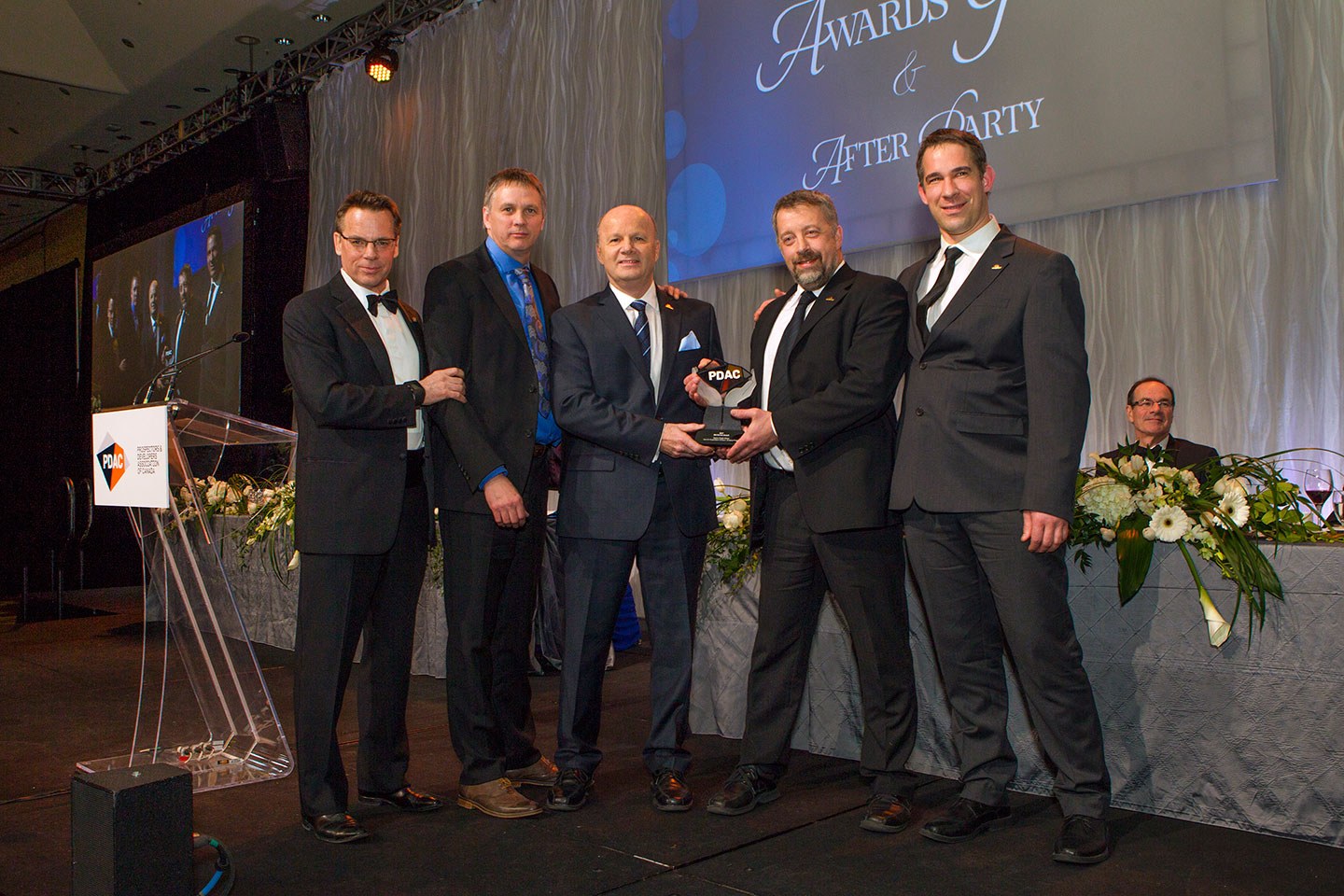
Agnico Eagle Mines Limited’s (Agnico) Val d’Or Exploration Team is the recipient of the 2017 Bill Dennis Award for the discovery of the Amaruq gold deposit between 2013 and 2016. The discovery was made while prospecting a virtually unexplored part of the Woodburn Lake Belt in Nunavut and is one of the few significant and recent finds in Canada.
Amaruq is an area made up of 1,147 square kilometres. Inferred resources were estimated at 16.9 million tonnes at 6.05 grams of gold per tonne, for a total of 3.3 million ounces of high-grade gold mineralization. Ore-grade drill results include an intersection of 47.6 metres, with an estimated true width grading 5.9 grams of gold per tonne at 288 metre depth.
Excitement surrounding the discovery is heightened by its timing. Reserves at Meadowbank Gold Mine (Meadowbank)—Agnico’s largest gold producer—are expected to be depleted by 2018. Meadowbank is conveniently located just 50 kilometres northwest of Amaruq, meaning much of the essential infrastructure for a producing mine is already in place.
2016 Bruce Channel Discovery Team
For the Bruce Channel gold discovery at the Red Lake gold camp in northwestern Ontario.

Robert Cudney, Stephen Roman and John Whitton are the recipients of this year’s Bill Dennis Award for the Bruce Channel gold discovery at the Red Lake gold camp in northwestern Ontario. In May 2007, an internal estimate of the deposit size was 14.1 to 16.5 million tonnes of mineralized rock at a grade of roughly 20 to 25 grams per tonne gold for a total of between 9 and 13.3 million ounces of gold. The impressive discovery was located in the middle of Ontario’s third largest precious metals camp, with almost all of the required transportation and infrastructure at its doorstep.
An exploration program began, including a hole drilled vertically from the ice in the middle of the Bruce Channel in the winter of 2004—the first indication of a new deeper gold deposit. The main discovery hole was completed in August 2005, indicating a potentially high-grade gold deposit.
This discovery was described as being the most structurally complex in the Red Lake camp, sitting, as they do, at the junction of three deformation zones—one trending westward, another northeast, and the third southeast. It was given the “Discovery of the Year Award” by the Ontario Northwestern Prospectors Association in 2008.
2015 David Palmer, Probe Mines Limited
For his discovery of the Borden Gold Project located near Chapleau Ontario.
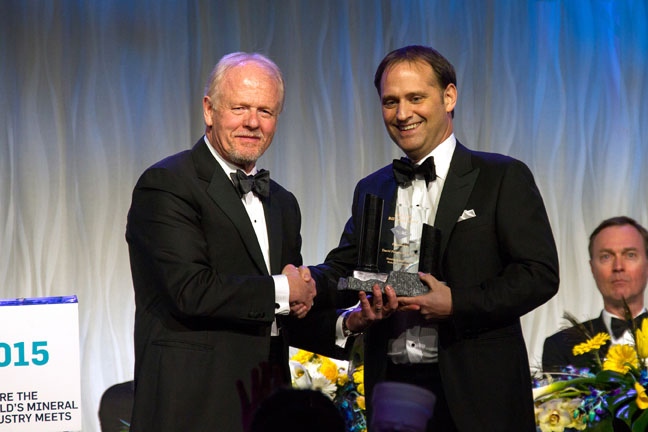
David Palmer, President and Chief Executive Officer of Probe Mines Limited, is the recipient of this year’s Bill Dennis Award for a Canadian mineral discovery or prospecting success. David Palmer is receiving the award for the Borden Gold Project, a discovery located near Chapleau, Ontario.
The Borden Gold Project is an exciting and important new gold discovery that continues to evolve, grow and improve with continued exploration. Located in a previously unexplored area of Ontario, the discovery could potentially be the beginning of a significant new gold district in Canada.
The company’s June 2014 Technical Report estimated a high-grade gold resources with potential for underground extraction in the Borden Gold Project totalling 1.60 million ounces of gold in the indicated resource category (9.3 million tonnes grading 5.39 grams of gold per tonne), and 0.43 million ounces of gold in the Inferred Resource category (3 million tonnes grading 4.37 grams of gold per tonne) at a 2.5 g/t Au cut-off. The deposit still remains open for expansion.
The Borden Gold Project in Canada is significant to the industry, especially with the dwindling number of significant gold discoveries globally and could be the birth of Canada’s next gold district. Probe Mines has also identified potential for new discoveries within the Borden and associated belts that extend to the northeast of the Borden gold zone, and the company recently acquired over 350 square kilometres of additional unexplored ground comprising the East Limb Property.
2014 Ross McElroy
For leading Fission’s team of geologists in the one of the most significant discoveries in the Athabasca Basin in recent years.
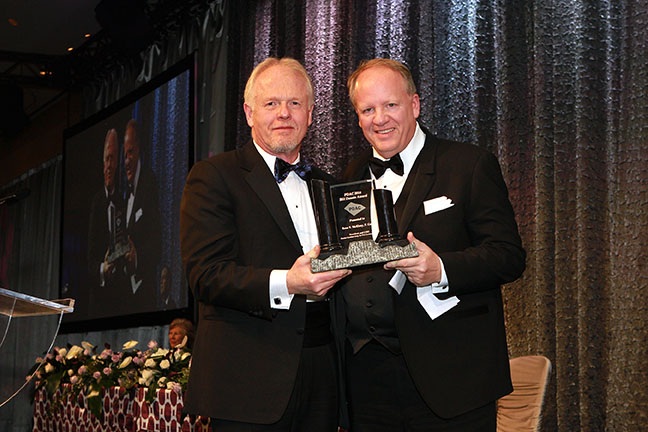
Patterson Lake South property is a high-grade shallow-depth uranium discovery located on the south-western margin of the Athabasca Basin in northern Saskatchewan. In the summer of 2011, a team of Fission geologists, led by Ross McElroy, discovered a large radioactive boulder field. The team used a new airborne surveying technology specifically designed for radioactive deposits to make the discovery.
A Radon survey of the site was completed, following the discovery, to assist the team in identifying drill targets. Drilling in 2012 and 2013 resulted in the discovery of high-grade, shallow, thick uranium intersections which quickly launched the Patterson Lake South property to the top of analysts watch lists. Over the past 10 months the discovery has grown from a single hole to five mineralized zones on-trend along a strike length of 1.03km.
Under the leadership of Ross McElroy, Fission’s uranium discovery has rejuvenated the entire exploration industry in the Athabasca Basin. Previously ignored by the uranium exploration sector, the western side of the Athabasca Basin now has multiple programs being launched by other uranium junior miners in the area.
Ross McElroy has over 30 years experience as a professional geologist. He has been instrumental in five of the last nine major discoveries in the Athabasca Basin, and has made two major discoveries in the past three years including Patterson Lake South, and Fission Energy’s J-Zone discovery.
2013 Pretium Resources
For advancing the Brucejack Property’s Valley of the Kings.
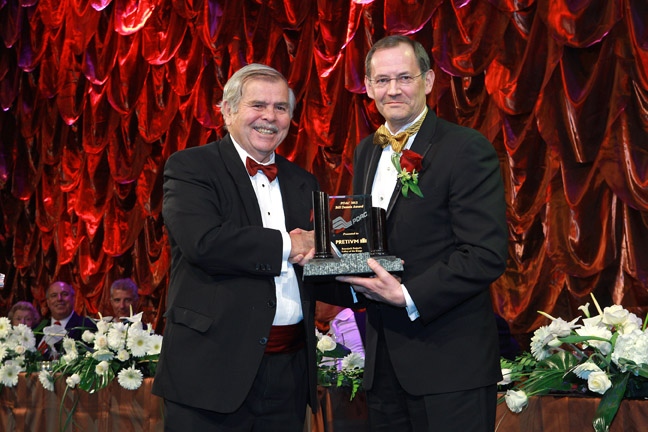
Pretium Resources is the recipient of this year’s Bill Dennis Award for a Canadian mineral discovery or prospecting success. Pretium is receiving the award for advancing the Brucejack Property’s Valley of the Kings, which was first discovered in 2009, into a world-class, high-grade gold deposit. Since 2011, Pretium’s successful exploration program has seen the high-grade Indicated Mineral Resource Base for the Valley of the Kings grow to the current 8.5 million ounces of gold.
2012 Gerald Panneton
For his leadership of the team that has advanced the Detour Lake property in northern Ontario into a world-class, low-grade, high tonnage gold deposit
Gerald Panneton, president and CEO of Detour Gold Corp., for his leadership of the team that has advanced the Detour Lake property in northern Ontario into a world-class, low-grade, high tonnage gold deposit. Panneton spearheaded the initial acquisition and subsequent evaluation of what is now determined to be Canada’s largest undeveloped gold deposit.
Recognizing the potential of Detour Lake in 2006, Panneton commissioned a large-scale drilling and re-sampling program that, by 2010, had increased the resource base of the property from 1 million ounces of gold to a global, measured and indicated resource of 17.7 million ounces. Detour Gold Corp. is now moving ahead with the development of the project.
2011 Shawn Ryan
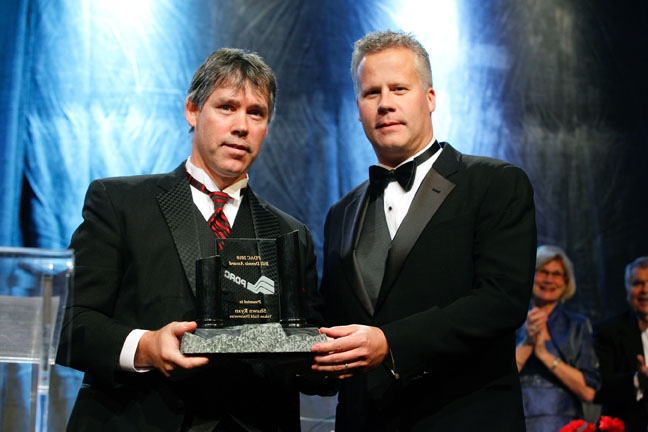
This Yukon-based prospector worked for close to 15 years to locate the source of the alluvial gold found in the Klondike gold fields. In 2004, Ryan identified the anomaly that led Underworld Resources to its White Gold deposit and a subsequent $138-million takeover by Kinross. Ryan’s efforts and eventual success have had a positive impact on exploration in the Yukon, with a six-fold increase in exploration spending from $30 million at the beginning of this decade to an estimated $183 million in 2010. Ryan’s nomination for this award is supported by the Yukon Chamber of Mines.
2010 Ring of Fire discovery
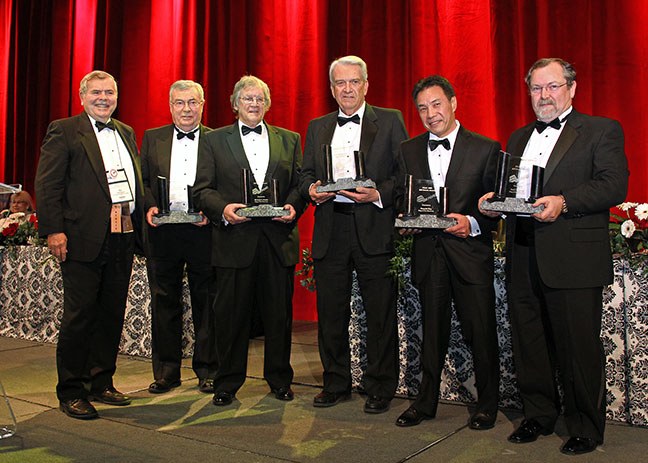
The chromite Ring of Fire discovery in the James Bay Lowlands is said to be one of the largest in the world and the only one in North America, and has opened up a previously overlooked area of the country to new exploration activity. As a result of a number of significant discoveries in the region since the 1990s, the award recognizes former Noront Resources’ president Richard Nemis and exploration manager John Harvey; Mac Watson, president, and Don Hoy, exploration manager, Freewest Resources Canada; and Neil Novakof Spider Resources.
2009 HudBay Minerals Inc.
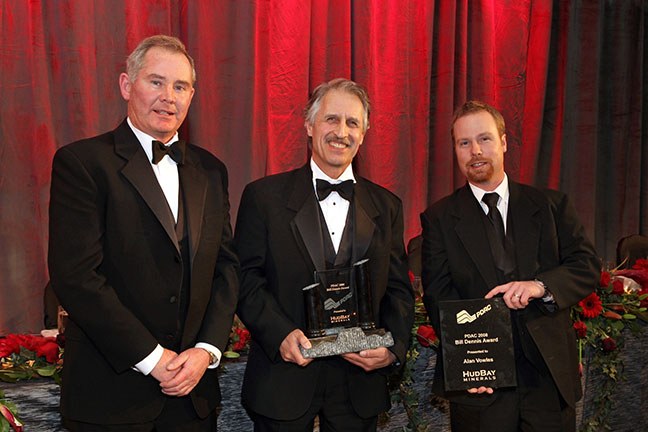
HudBay Minerals Inc. is being recognized for its Lalordiscovery near Snow Lake, Manitoba. In turn, the company is recognizing Alan Vowles and Kelly Gilmore, the respective heads of HudBay’s geophysics and exploration teams, for their roles in the discovery.
In a 1980 report, Geological Survey of Canada geologist Don Sangster had outlined prospects for the Flin Flon greenstone belt in Manitoba and wrote that he believed “the largest deposit in the Snow Lake area is, as yet, undiscovered.”
With HudBay’s Chisel Lake mine in the Snow Lake area nearing the end of its reserves in the 1980s, HudBay began working to prove that Sangster’s view was correct.
It began a major exploration program. By 2002, well over a decade after it began, the company was moving to deeper and deeper parts of the basin and the exploration team agreed that it needed to develop an accurate method for targeting deep holes.
Project geophysicist Alan Vowles agreed to conduct a geophysical experiment that he had developed with former chief geophysicist Bob Frazer to see if they could detect the Chisel North mine 600 metres below the surface employing new technology.
Using Crone Geophysics’ deep penetrating EM system, Vowles plotted the layout of a large loop of wire for a survey that would carry the electrical current over a two-square-kilometre area above the mine.
He had a joking wager with Ed Yarrow, then HudBay’s vice president of exploration, that if the experiment showed that equipment was able to detect the existing mine, the company would invest in the necessary upgrades to do more testing.
Vowles hired local contractor Dave Koop of Koop Geotechnical Services to lay out the wire. Vowles says Koop is an adventurous, enthusiastic professional who thrives on the excitement of making new discoveries.
Although the zinc at Chisel and Lalor is not conductive, it is associated with minerals that are. As a result, Vowles anticipated that extraordinary measures would need to be taken to detect deposits significantly deeper than the 300-metre depth for which the equipment was certified.
With the instrument that detects conductive minerals set for the test, they threw the switch on the transmitter and the current flowed through more than 10 kilometres of wire.
But instead of the conventional practice of letting the receiver run for about 30 seconds to test to the technology’s proven depth of 300 metres, Vowles pushed it to a new level.
He left the current on to record thousands of readings while he and the team went for lunch! When they returned the readings confirmed the mine was clearly in evidence 600 metres below the surface.
The results meant that HudBay could use the technology to search for deep deposits all around their numerous mine sites in the Flin Flon area.
Working with project geologist Chris Roney, who has since left the company,Vowles identified two potential sites for the next test, one near an existing mine and the other spanning an area identified by senior geologist Jerry Kitzler at a depth of 1,100 metres.
In 2003, Vowles and Roney designed a plan for the next step. They laid out huge loops of even more wire to test an area more than 800 metres deep.
When the data were plotted on a map, the anomalies looked like two bull’s eyes at a depth of about 900 metres.
Later that year they drilled a single hole into the first of the targets.
Unfortunately, the copper and zinc grades in that single sample were not economic. But the technology had worked and they had proved they could find mineralization 800 metres down.
Economics and then weather conditions intervened and delayed more drilling. By 2007 senior geologist Craig Taylor was in charge of the project. He and Gilmore, who is now chief exploration geologist, were ready to drill the second target, again 800 metres down.
At last, four years after the anomalies were first identified, drilling resumed.The results were immediately obvious. The core box was unusually heavy and just by looking at the samples, the distinctive Lalor ‘Black Jack’ zinc was evident.
Since then drilling has continued steadily, and the company has subsequently announced its discovery of a new gold zone that significantly enhances the potential of the deposit.
So HudBay Minerals is continuing on its quest to track down the even bigger deposit that Don Sangster predicted.
2008 Osisko Exploration Ltd.
This award honours individuals who have made an important contribution to prospecting and exploration in Canada.
Osisko Exploration has had its share of good fortune outlining more than 8.4 million ounces of gold on its Canadian Malartic property in Malartic, Quebec. But the company’s innovative approach to a mature gold camp is what ultimately won the day.
Osisko was formed in 1998 by geologist Robert Wares but with commodity prices in the tank, and little capital, the company remained a one-man show until 2003 -- when John Burzynski and Sean Roosen entered the picture.
Roosen and Burzynski, along with Walter and Norman Storm, were co-founders of EurAsia Holding AG, a venture capital fund consisting of equity from wealthy German investors, many of whom were lured by the idea of finding oil and gas in Kazakhstan -- not gold in Quebec. But Roosen believed that gold was about to move into a long-term bull run and it was time for EurAsia to diversify. The fund bought its first stake in Osisko in 2003 for $1.5 million.
Osisko had some greenfield exploration properties in Quebec but little else. By the fall of 2004, after a foray into Brazil, little had changed. And investors were getting restless.
The company would soon focus on the Abitibi greenstone belt in an effort to find bulk-tonnage, open-pit, gold targets, a concept that eschewed the region’s long-held wisdom that the Abitibi only offered underground, high-grade, vein deposits.
After drilling several properties and finding few ounces, Osisko moved on. Meanwhile, Robert Wares quietly sifted through Quebec’s digital database of drill results, home to information on almost every hole drilled in the province since the 1920s. Wares and his technical team, who are geologists with Cygnus Consulting Inc. in Montreal, designed programs to comb the data for holes that had long intercepts at low grades. It wasn’t long before they outlined the roughly 1,000 surface holes drilled into Canadian Malartic and decided it was a bulk-tonnage target.
The old Canadian Malartic mine operated from 1935-1965 and yielded one million ounces of gold at a head grade of 3.3 grams per tonne -- making it the lowest grade gold operation in eastern Canada.
Armed with knowledge from the public drill-hole database, Osisko bought the Canadian Malartic claims from a liquidator for about $80,000. Now that Osisko had a high potential property, Roosen and Burzynski pitched EurAsia investors for more money – and got it.
As a result of the acquisition, Osisko received the former producer’s huge database as well as 65,000 metres of core drilled by Lac Minerals in the 1980s. In the spring of 2005, the Quebec government leased Osisko the former mine manager’s house on the East Malartic property and Wares’ team moved in and converted the garage to a core shack.
In an atmosphere not unlike a college dormitory, Wares and his team spent endless hours logging core and working the data into a comprehensive digital model. Lac Minerals had identified about 520,000 ounces of gold in a series of shallow open pits. Wares thought the deposit was much larger.
Osisko needed to know what it had and decided to drill right down the middle of the deposit -- an unusual tack that took until late summer 2005 to complete. The gold grades were low and consistent as would be expected in a porphyry-type system. Drill holes hit mineralization 52 times out of 56.
In September 2005 the company disclosed that it had evidence of a potential 3-million-ounce deposit, and that finally caught the market’s attention.
Almost two years later, in July 2007, and after a lot more drilling, consulting firm RSG Global pegged Canadian Malartic’s inferred resource at 8.4 million ounces from 286 million tonnes grading 0.92 gram gold per tonne, using a cutoff grade of 0.4 gram gold.
In January 2003, Osisko was trading at 5¢ per share and is now around $6.00. Osisko has brought a smile to the lips of many in Canada’s mining establishment by proving once again that Canada still holds world-class deposits, and that what it takes to find them is sometimes as simple as a new approach, faith in an idea, and a lot of persistence.
2007 Ted and Allan Keats
The four generations of this Newfoundland family have all been involved in prospecting. Ted, the father, was involved in the discovery of the Point Leamington, Burnt Pond and Tally Pond zones. Sons Al, Calvin, Fred, and Suley followed in their father’s footsteps. Al worked with his father on the Point Leamington and Tally Pond discoveries and also discovered Duck Pond and Winter Hill.
Calvin has worked all over the world, discovering South Golden Promise and numerous uranium showings in Labrador. Fred discovered a 36-ounce/ton VG boulder on the Appleton Linear for Noranda (now optioned to Paragon). Suley discovered the Beaver Brook deposit with Calvin and has been looking for uranium in Labrador. The following generations – grandsons and great grandsons – are all actively involved in prospecting.
Past Recipients
| 2006 | Virginia Gold Mines Inc. Exploration Team |
| 2005 | Falconbridge Limited Sudbury Exploration Team |
| 2004 | Wolfden Resources Inc. Team |
| 2003 | Alex Davidson |
| 2002 | Noranda Inc.’s Matagami Exploration Team |
| 2001 | Hudson Bay Exploration & Development Co. Ltd. Exploration Team |
| 2000 | D. Grenville Thomas |
| 1999 | Rio Algom Limited Chilean Exploration Team |
| 1998 | Mark Rebagliati |
| 1995 | Albert E. Chislett and Chris L. Verbiski |
| 1994 | Chet Idziszek |
| 1993 | D. Neil Hillhouse |
| 1992 | Charles E. Fipke |
| 1991 | Mackenzie I. Watson |
| 1990 | Ronald K. Netolitzky |
| 1989 | James W. Gill and Howard R. Stockford |
| 1988 | A. Lew Parres |
| 1987 | Walter N. Baker |
| 1986 | Merton S. Stewart |
| 1985 | Michael J. Knuckey |
| 1984 | James J. McDougall |
| 1983 | Eric F. Partridge |
| 1982 | David R. Bell, John P. Larche and Donald McKinnon |
| 1981 | A. L. Musselwhite and W. H. Musselwhite |
| 1980 | Robert J. Campbell |
| 1979 | Peter Ferderber |
| 1978 | Alex C. Mosher |
| 1977 | W. W. (Bill) Dennis |
Distinguished Service Award
2022 Keith N. Spence
For more than two decades of dedication to PDAC, ongoing leadership in Canada's mineral exploration and mining industry, and his contribution to developing CIMVAL, a globally recognized code for mining valuation.
Keith Spence combined his geology and finance expertise to develop new guidelines for determining the value of mineral projects after the Bre-X scandal rattled investor confidence in the sector. In 1999 he co-chaired the CIM committee that established the Canadian Mining Valuation Standards and Guidelines. CIMVAL became a globally recognized code to ensure a qualified person conducts valuations while disclosing all relevant information.
Keith is a well-known leader in the industry and beyond. He has helped shape important policy and programming directions at PDAC by serving on its board of directors and committees for more than two decades, including the convention planning and securities committees, as well as chairing the international affairs committee. He is often called upon to speak at international mining conferences and has represented PDAC at events in China, where he is renowned for introducing leading business practices in mining.

He was chair of the Mineral Economics Society and a board and committee member for CIM. He also served on the board of the Royal Ontario Museum and Ontario Place. He received the Queen Elizabeth II Diamond Jubilee Medal in 2012 and the Harry Jerome Award for Professional Excellence from the Black Business and Professional Association in 2017.
Keith earned his BSc Geology (Honours) from the University of Western Ontario where he was recognized as a Commonwealth Scholar. He went on to complete his MBA at Western’s Ivey School of Business and later graduated from Harvard University’s Global Management program. He started his career as a field geologist before turning his attention to capital markets and corporate finance and then to mineral economics and project valuation. He is CEO of Global Mining Capital, a firm that specializes in private equity and industry mergers and acquisitions.
For his dedication to establishing globally respected standards for mineral valuation and furthering PDAC’s international reputation for excellence, Keith is richly deserving of this prestigious service award.
2021 Dennis Jones
For the discovery of the Saddle North gold-rich copper porphyry deposit and the Saddle South vein gold-silver zone in the Golden Triangle region of British Columbia.
Charlie Greig, Vice-President of Exploration at GT Gold, and his fellow explorers were ecstatic when they drilled soil anomalies at the Tatogga project in 2017 and intersected high grade gold. The GT Gold team had uncovered a brand new epithermal gold-silver vein system they called Saddle South in the prolific Golden Triangle camp of northwestern BC.
But the best was yet to come. The team launched a separate drill program about 1.5 kilometres northeast of the precious metals discovery to test a coincident soil geochemical and geophysical anomaly, partially underlain by strong alteration visible in subcrop. In September 2018 they intersected 430 metres of 0.7 grams per tonne (gpt) gold and 0.4% copper. More impressive intercepts followed. Newmont invested in GT Gold and subsequently raised its stake from 10% to 15% via an $8.3 million private placement, a sure sign the world’s largest gold producer had faith in GT Gold’s new finds.
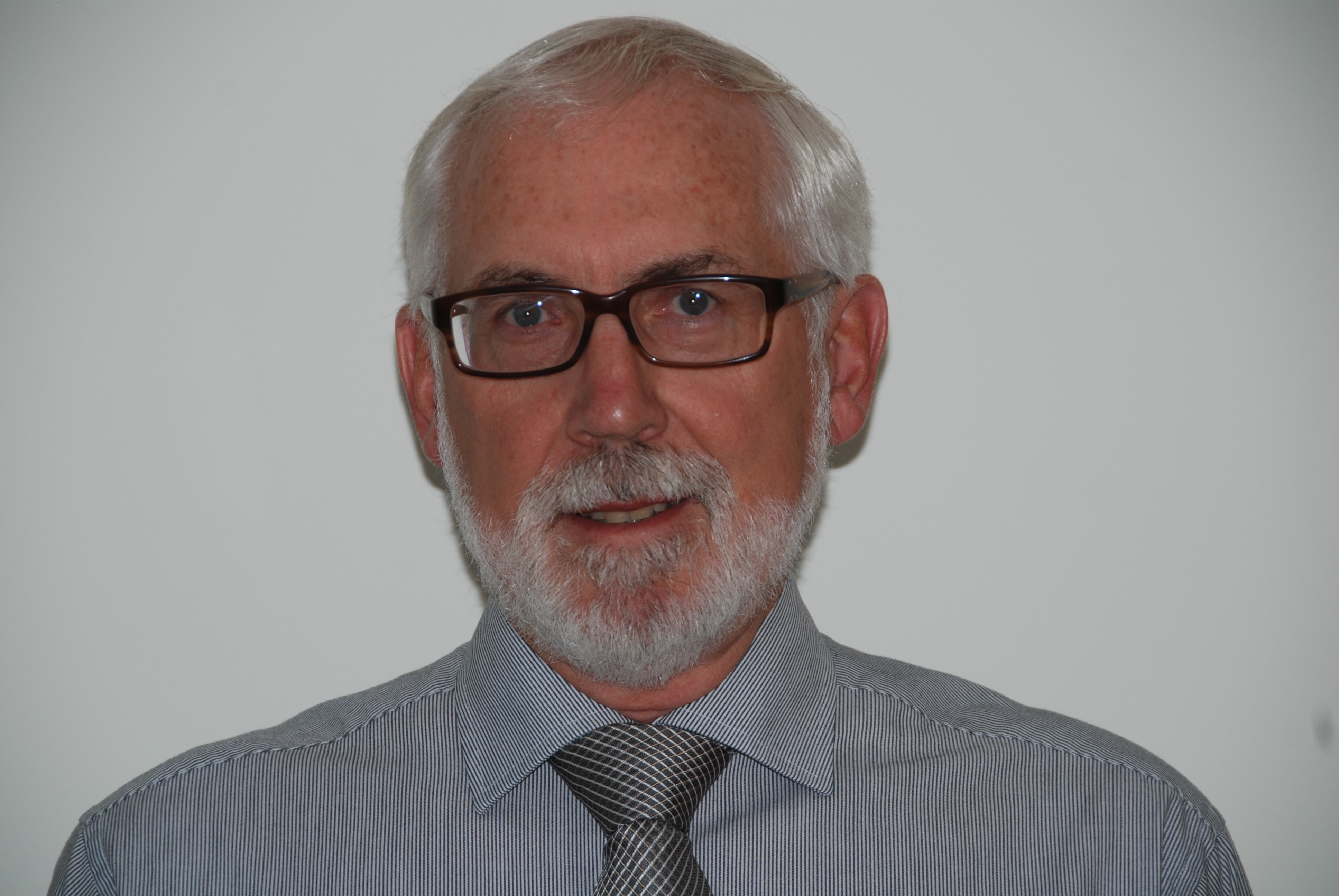
A maiden estimate for Saddle North completed in 2020 calculated indicated resources of 298 million tonnes grading 0.28% copper, 0.36 gpt gold and 0.8 gpt silver, and inferred resources of 543 million tonnes at 0.25% copper, 0.31 gpt gold and 0.7 gpt silver.
In mid-2021 Newmont paid $393 million to acquire full ownership of GT Gold, stating that the "Tatogga project, including the primary Saddle North deposit, has the potential to contribute significant gold and copper annual production at attractive all-in sustaining costs over a long mine life. In addition to the known deposits at Saddle North, there are further exploration opportunities throughout the land package."
2020 Lynda Bloom
For her leadership in the junior mining sector, her thousands of volunteer hours dedicated to PDAC, and her exploration geochemistry expertise.
Lynda Bloom has contributed to the mineral exploration sector as an officer and director of junior mining companies, a consultant, and a lobbyist. She has devoted extraordinary time and effort to PDAC as a director, committee chair, trailblazer of the Student-Industry-Mineral Exploration Workshop (S-IMEW), and as a frequent contributor to the PDAC Convention's Technical Program. She is considered one of the world's experts in geochemical sampling, assaying and quality control. Lynda has worked internationally as a forensic geochemist providing services for projects ranging from stream sediment surveys to laboratory audits. In 2013, she received the Queen's Diamond Jubilee Medal for her volunteer work on behalf of the mining industry. In 2016 BMO Capital Markets named her one of the Top 100 most inspirational women in mining globally.
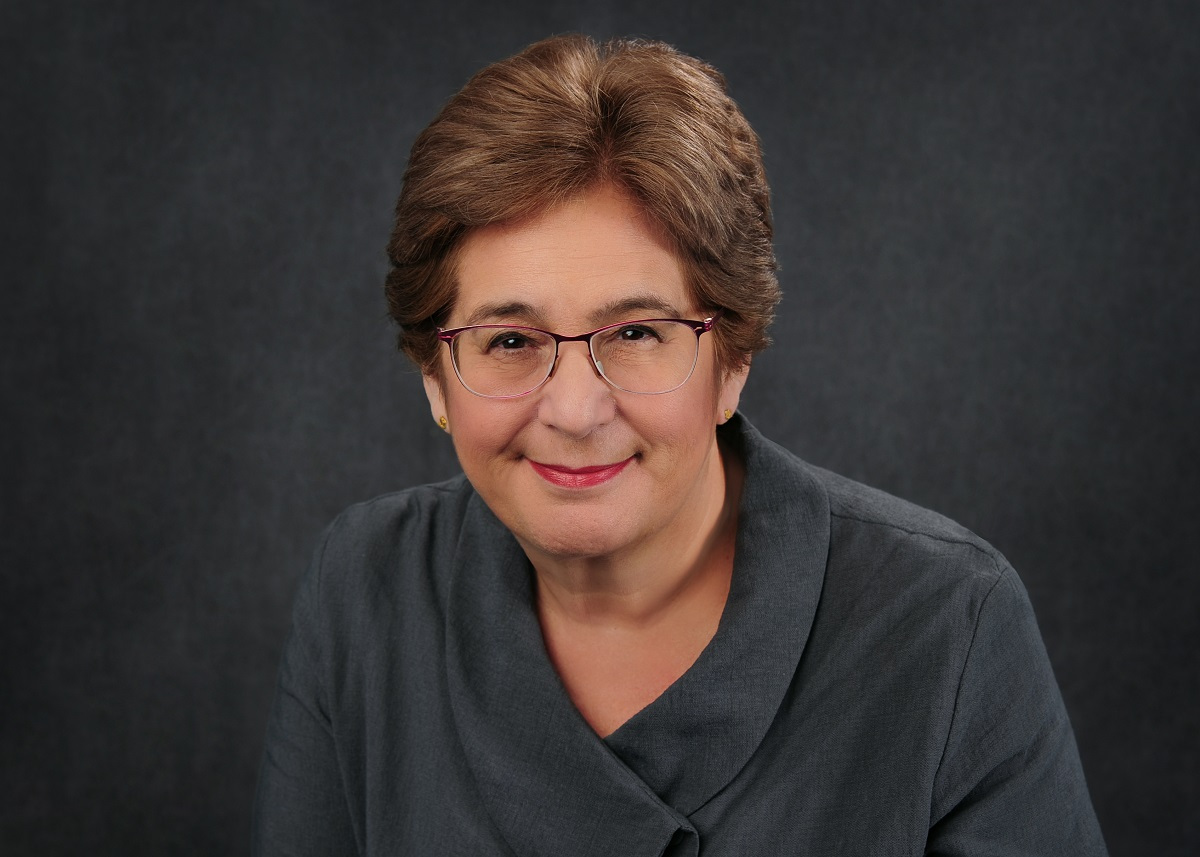
2019 Donald (Don) Bubar
For his contribution to building awareness of Indigenous issues among PDAC members, his support of geoscience education in Canada, and his exploration success
During Don’s 40-year career as a geoscientist he has contributed to successful exploration in Canada, and been a leading advocate for geoscience education. But his most enduring legacy may be his role in forging a better, more productive relationship between Indigenous groups and the minerals industry. As founder and head of the PDAC’s Aboriginal Affairs Committee, Don recognized the urgent need to bring the two groups together in dialogue about how exploration and mine development could support local communities.
During his tenure, PDAC saw tremendous growth in participation by self-identified Aboriginal people at the annual PDAC Convention. Don was instrumental in developing a relationship with the Assembly of First Nations (AFN), which ultimately led to the Memorandum of Understanding between PDAC and AFN, signed March 4, 2008.
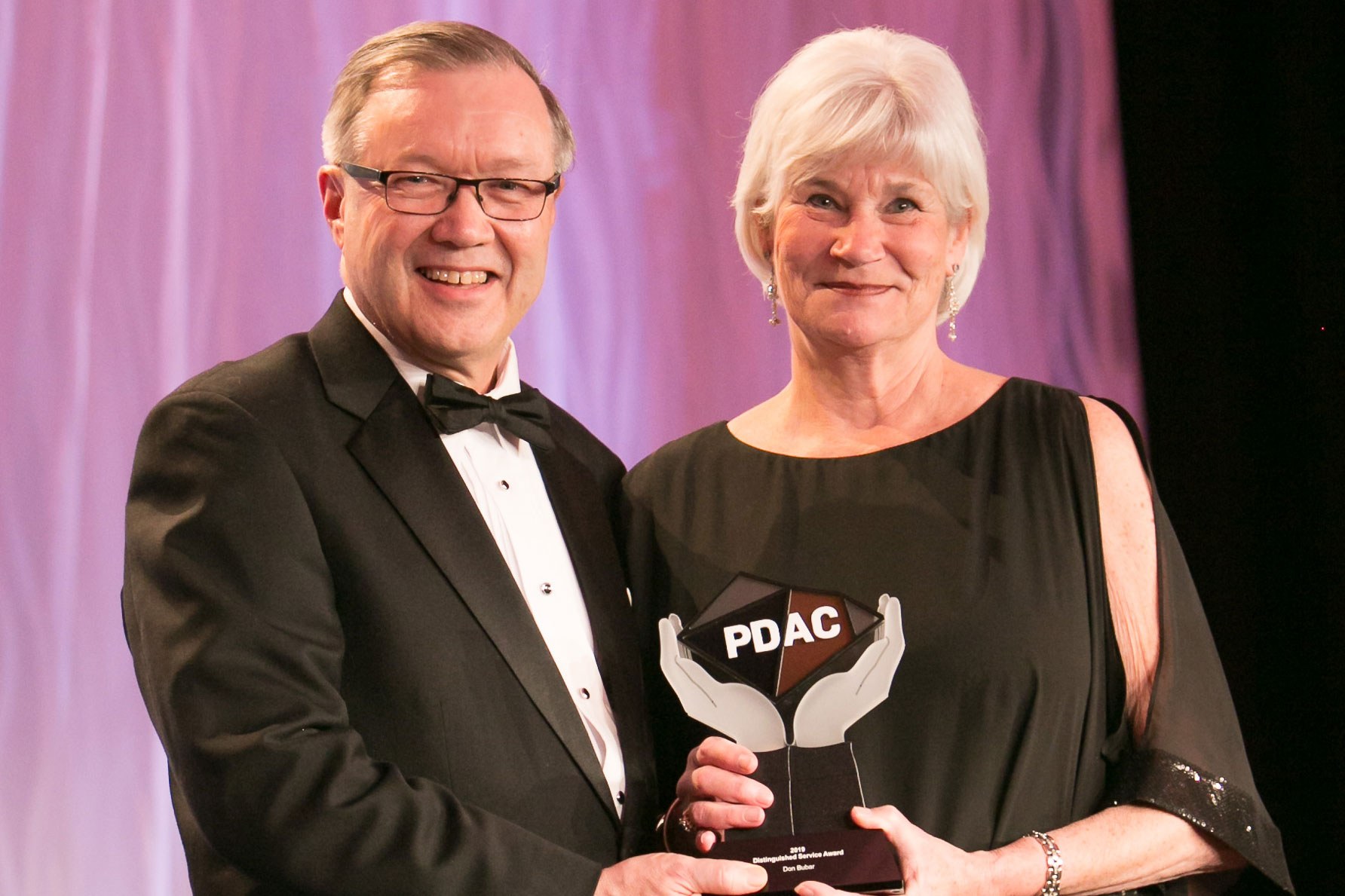
2018 Ted Reeve
For his enduring perseverance as a prospector and the discovery of several precious metal, diamond and rare earth occurrences in northwestern Ontario.
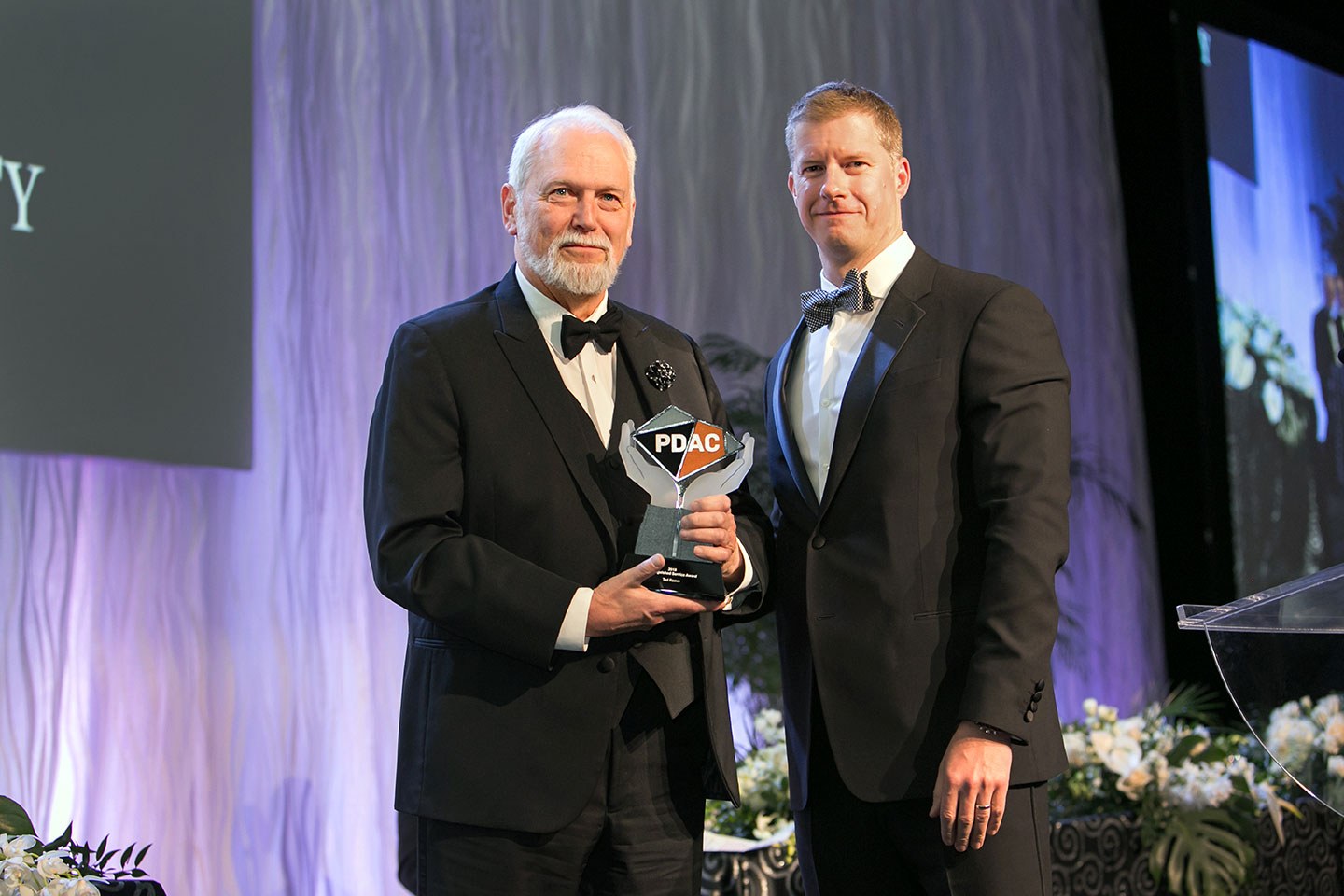
Ted Reeve received a PhD in geology from the University of Toronto (U of T) in 1972. He worked as a geologist in the United States, Chile, Australia and other parts of the world before returning to U of T and completing an MBA in 1979. As a mining analyst in Toronto, he became known internationally for his authoritative reviews of hedging trends in the gold mining industry.
In 2002 Ted founded Haliburton Mineral Services to become an independent researcher and consultant. He served on the Board of Directors of junior mining companies, and began devoting much of his free time to help PDAC draw high-quality speakers and exhibitors to its annual convention—the most well-attended industry event in the world.
From 2002 to 2005 he chaired several sessions, including the keynote session in 2004. He was on the selection committee for the corporate presentation forum from 2006 to 2012 and more recently helped select the convention’s short courses.
2017 Neil Gow
For his enduring perseverance as a prospector and the discovery of several precious metal, diamond and rare earth occurrences in northwestern Ontario.
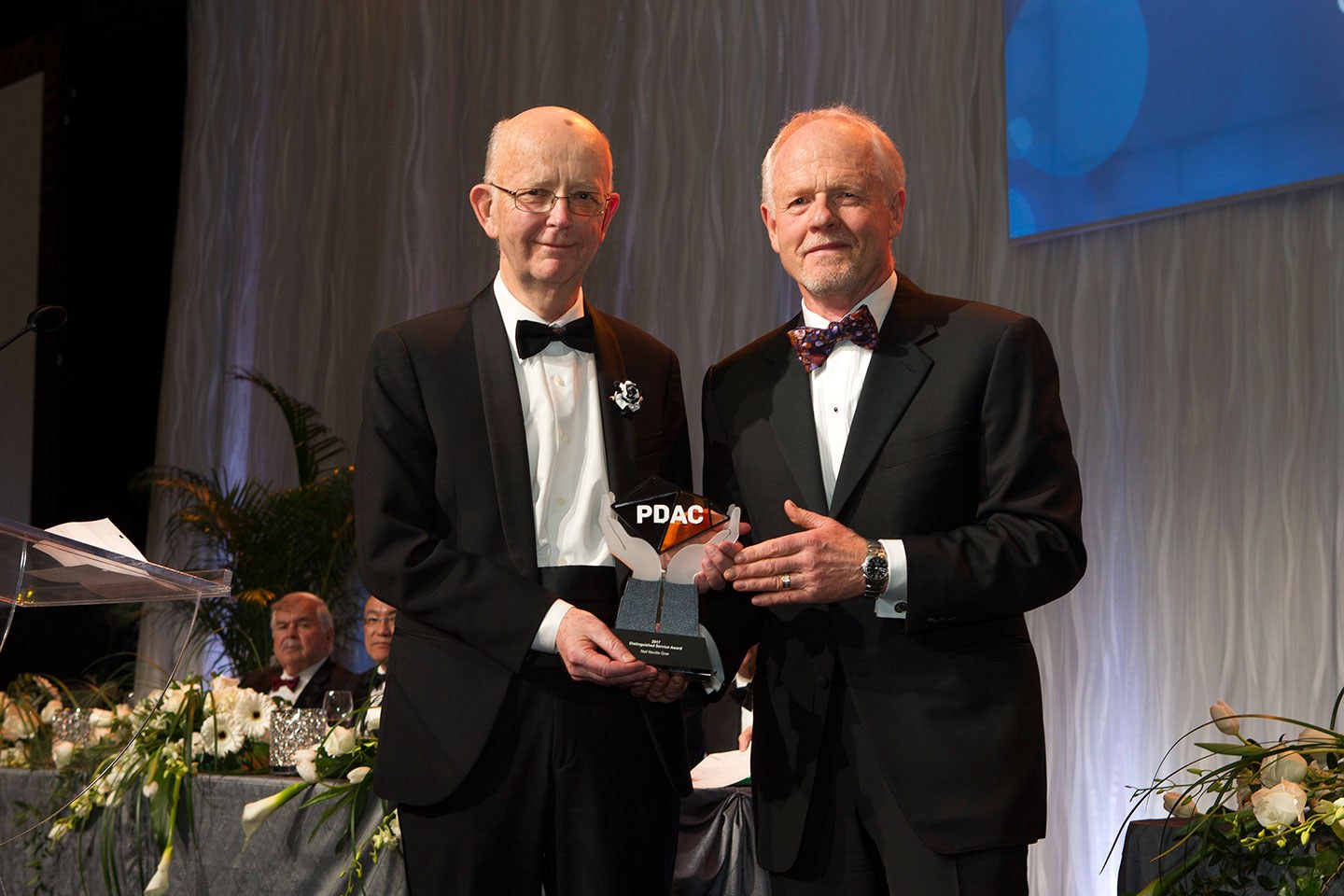
Since making his way from Australia to Canada in 1982, geologist Neil Gow has served the mineral exploration and mining industry in an exemplary fashion. Neil is well-known for his work in lead-zinc, laterite and gold deposits.
Neil is being honoured with the 2017 Distinguished Service Award for his many generous volunteer commitments over the past 30 years, including 12 years with the PDAC Convention Planning Committee which led to him chairing several Technical Sessions at the PDAC Convention. Neil was Secretary-Treasurer of the Toronto Geological Discussion Group for 15 years, served as Chairman of the Mineral Resource and Reserves Committee at the Canadian Institute of Mining, Metallurgy & Petroleum (CIM), and was part of a team in 2003 that wrote the Estimation of Mineral Resources and Mineral Reserves Best Practice Guidelines that helps assist with Mineral Resource and Mineral Reserve (MRMR) estimates.
The extensive volunteer contributions of this one individual are invaluable to the ongoing development of the industry.
2016 Patricia Sheahan
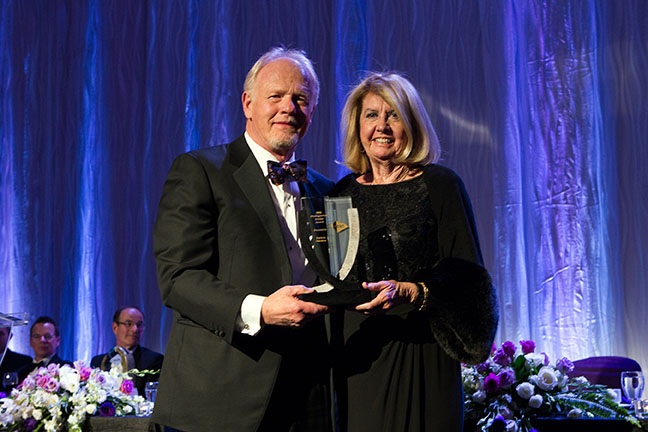
Patricia Sheahan has a long and unique career in the minerals industry. As a leader and entrepreneur, she founded a worldwide technical information service for exploration companies focused on diamonds, base and precious metals. The subscription service, which began in 1972, has been indispensable for those in the field looking to make the next diamond discovery.
Sheahan started her own consulting firm that provided a flow of information about the diamond boom in Canada, which ultimately paved the way for junior mining companies to enter the industry. By 1993, she had organized the PDAC Convention’s first short course on diamonds that attracted more than 400 people. Diamonds have since become a popular annual session at the convention.
Sheahan has been a Director of seven junior companies, served as Chairman on various committees, written five books, and is a long-time volunteer at the PDAC.
2015 Bill Pearson
For his outstanding contribution and dedication to Canada’s mineral and exploration industry.
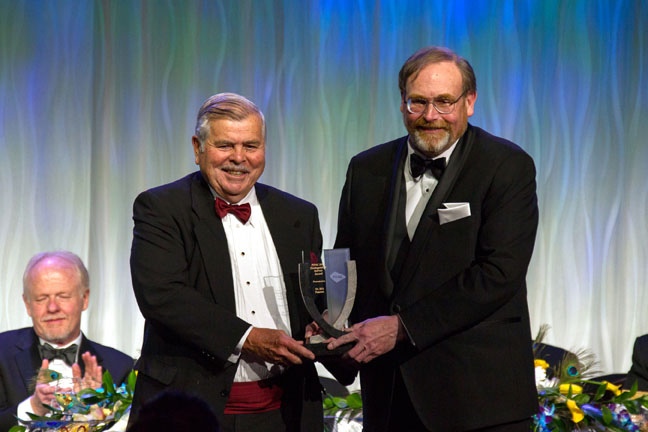
Bill Pearson is the recipient of this year’s Distinguished Service Award. Bill is receiving the award for his outstanding contribution and dedication to Canada’s mineral and exploration industry in which he has worked for over 40 years. He has served as a tireless and dedicated pioneer and leader of his profession at both the provincial and national level.
Bill convened the first meeting of the Committee for the Professional Registration of Geoscientists of Ontario (CPRGO) in March 1989, which he chaired for seven years. He was President of the Association of Geoscientists of Ontario (AGO) from 1996 to 2000 and was the founding President of the Association of Professional Geoscientists of Ontario (APGO) from 2000 to 2003. In addition to his work for the geoscience profession in Ontario, Bill was instrumental in the formation of the Canadian Council of Professional Geoscientists (CCPG now Geoscientists Canada), where he served as one of CCPG's founding directors.
After obtaining a B.Sc. Honours degree in geology from the University of British Columbia in 1974, Dr. Pearson completed an M.Sc. in Economic Geology in 1977 and a Ph.D. from Queen’s University in 1979. He then went on to enjoy a broad and varied professional career as a geoscientist spanning some 35 years of practice, largely in the minerals exploration and mining sector.
2014 Roger Wallis
For his outstanding contribution and dedication to the PDAC over the past 48 years.
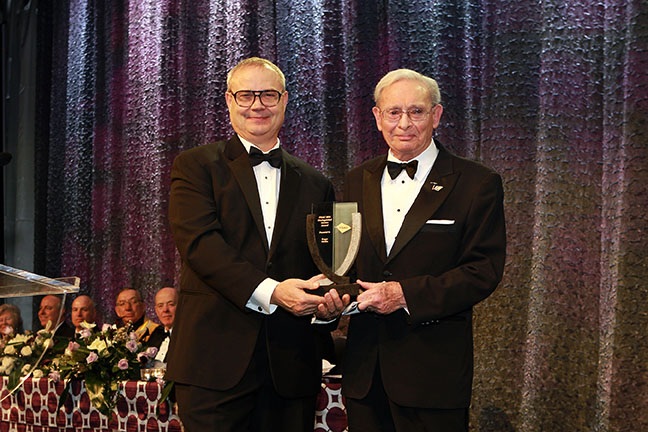
Roger Wallis joined the PDAC in 1967, and has been an active PDAC board and committee member since 1993. He was one of the original “e3” authors. The original e3 program was an environmental toolkit that focused on environmental excellence and included a section on community engagement. It offered an orientation to the processes related to environmental excellence.
The original program was used as the corner stone for today’s e3 Plus. While e3 Plus has grown to include social responsibility; and health and safety toolkits, the original e3 manual has been incorporated as the environmental stewardship component of the Framework for Responsible Exploration.
Serving on a variety of PDAC committees, including Land Access/WMI (1993-2000); Environmental Excellence in Exploration (2000-09); Corporate Society Responsibility (2009 – 2012); Annual Convention Planning Committee (2000-2013); International Geological Congress 2020 Bid Committee (2010-2011), Mr. Wallis has remained a vocal advocate for the industry over the past 20 years.
Mr. Wallis has been a proponent of the PDAC taking a leadership role in becoming more proactive about industry issues, particularly around environmental and corporate responsibility issues. He has participated in various meetings and working groups, and drafted countless briefs, articles and reports to raise awareness of industry concerns and needs with governments, Canadian Stakeholders and NGOs.
Mr. Wallis has been an integral member of the Annual Convention Planning Committee. Serving on the committee for 13 years, Mr. Wallis has organized more than 12 technical sessions, chairing one or more sessions each year, and has been a technical presenter a number of times. A natural leader, Mr. Wallis has worked hard with the committee raising the convention standard year after year.
Throughout his career, Mr. Wallis has participated in various provincial and national industry associations, including Geological Association of Canada; Canadian Institute of Mining; Canadian Geological Council; Canadian Geological Foundation; Ontario Ministry of Economic Development; Ontario Science and Industry Grant Council; Ontario Geological Research Fund Committee; Toronto Geological Discussion Group; and Industry Advisory Board to the Ontario Geological Survey.
2013 Ronald P. Gagel
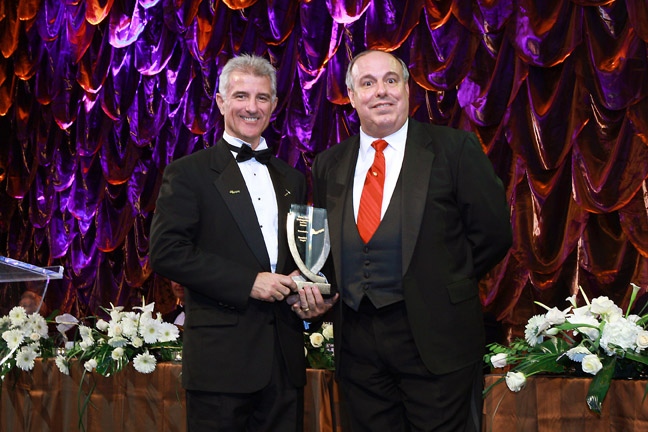
Ronald P. Gagel is the recipient of this year’s Distinguished Service Award. Ron is receiving the award for his outstanding contribution to the mineral industry in the field of finance, and for his contributions to the PDAC.
Ron’s background in mining finance, accounting and taxation has provided outstanding support to the financial activities and affairs of the PDAC, particularly through his work on the Finance and Taxation Committee. Ron was part of the team that successfully lobbied the federal government to implement the Mineral Exploration Tax Credit, and is the Chair of the Mining Industry Task Force on International Financial Reporting Standards.
2012 Deborah McCombe
Deborah McCombe, for her many contributions and distinguished service to the mineral industry and its supporting organizations, including the PDAC. Mrs. McCombe served as a PDAC director from 1996 to 2011.
For much of that period, she chaired the association’s international affairs committee. She was also a member of the convention planning committee and served on the governance and strategic planning committees. Deborah has been an active supporter of the CIM. She served on the Mining Millennium 2000 convention organizing committee and chaired the CIM Toronto branch in 2003. She is a member of the CIM standing committee on mineral resource and mineral reserves and is a Canadian representative of the committee for mineral reserves international reporting standards (CRIRSCO).
Deborah received the CIM Fellowship Award in 2005 and a 2001-2002 Distinguished Lecturer Award for her presentations on National Instrument 43-101 across the country. Deborah has also been a director of Mining Innovation, Rehabilitation and Applied Research Corporation (MIRARCO). She was a member of the APGO council as councilor at large from 2007-2009, and subsequently she served as vice president and then president.
Deborah was president of Watts, Griffis and McOuat before joining the OSC as chief mining consultant in 2000. Currently, she is Executive Vice President, Business Development for Roscoe Postle & Associates.
Past Recipients
| 2011 | Patricia Dillon |
| 2010 | Nicholas Carter |
| 2009 | David A. Barr |
| 2008 | Maureen C. Jensen, Donald K. Mustard |
| 2007 | Canada’s government geoscientists |
| 2006 | C. David Comba, Bill Mercer |
| 2005 | Donald T. Anderson, Robert B. Parsons |
| 2004 | Donald A. Cranstone, Donald Ross |
| 2003 | Stuart A. Averill, Avard D. Hudgins |
| 2002 | Peter M. Brown, W. S. (Steve) Vaughan |
| 2001 | J. Duncan Crone, W. Bruce Dunlop |
| 2000 | Ralph L. Cheesman, Peter M. Dimmell |
| 1999 | Edward G. Thompson |
| 1998 | Tony R. Barringer, A. James Walker |
| 1997 | John S. Cooke, John A. Hansuld |
| 1996 | Women's Association of the Mining Industry of Canada, Toronto, Jean Jacques Martel |
| 1995 | Christopher Jennings, Lionel C. Kilburn |
| 1994 | Walter Edgar Segsworth (1880-1945), C. John Sullivan |
| 1993 | Robert W. Boyle, Jack Patterson |
| 1992 | Walter D. Holyk, John (Jack) H. Kentish |
| 1991 | Vaino Ronka, Donald J. Worth |
| 1990 | Norman B. Keevil, Jr., Harry V. Warren |
| 1989 | Maurice (Mort) Brown, Murray Pezim |
| 1988 | James Geddes, M. E. (Dit) Holt |
| 1987 | André Laurin, Harold O. Seigel |
| 1986 | W. Clarke Campbell, Karl J. Springer |
| 1985 | Murray E. Watts, John Zigarlick, Jr. |
| 1984 | Norman B. Keevil, Arthur White |
| 1983 | Viola R. MacMillan |
| 1982 | Franc R. Joubin |
Skookum Jim Award
2025 David Kritterdlik
For groundbreaking work promoting Inuit values, cultural preservation, and sustainable development.
David Kritterdlik was selected for the 2025 Skookum Jim Award due to his transformative leadership in integrating Inuit Qaujimajatuqangit (IQ) values into the mining industry. As Agnico Eagle’s Inuit Qaujimajatuqangit and Wildlife Advisor, David has played a pivotal role in bridging traditional Inuit knowledge and western science, particularly in his home region of Nunavut.
One of his most significant achievements is the creation of the Kivalliq Elders Advisory Committee (KEAC), a pioneering initiative that unites over 20 elders from seven communities in the Kivalliq region. Under David’s leadership, the Kivalliq Inuit Elders Advisory Committee (KEAC) provides invaluable guidance to the Meliadine and Meadowbank mines on topics such as wildlife, water management, climate change, fish habitat, employment and community wellbeing. His consultative approach ensures that the committee is community-driven and fair, preserving cultural integrity by holding all meetings in Inuktitut with translation support.
David's efforts extend beyond corporate governance. His work was instrumental in the implementation of the $5 million Inunnguiniq Project, fostering partnerships with local organizations to support community well-being through initiatives like breakfast programs and literacy efforts for children. His advocacy has also shaped Agnico Eagle’s regulatory process by bringing the gap between IQ and western science and thus ensuring that mining practices align with Inuit Societal Values and traditional knowledge guiding principles.
David’s influence is further recognized as a model for other resource companies and government bodies. His contributions have inspired similar advisory structures in British Columbia’s regulatory processes and discussions within CIRNAC related to UNDRIP legislation.

For his groundbreaking work in promoting Inuit values, cultural preservation, and sustainable development, David Kritterdlik truly embodies the spirit of the Skookum Jim Award.
David’s influence is further recognized as a model for other resource companies and government bodies. His contributions have inspired similar advisory structures in British Columbia’s regulatory processes and discussions within CIRNAC related to UNDRIP legislation.
For his groundbreaking work in promoting Inuit values, cultural preservation, and sustainable development, David Kritterdlik truly embodies the spirit of the Skookum Jim Award.
2024 Wabun Tribal Council
For developing a consistent process of engagement (The Wabun Model) that reasonably matches lifespan of projects from mineral exploration to development.
The Wabun Tribal Council (WTC) is a non-profit regional Chief’s Council representing, advocating for, and delivering services to six First Nations: Beaverhouse, Brunswick House, Chapleau Ojibwe, Flying Post, Matachewan, and Mattagami. The territories of these First Nations span among the most prolific mining camps in Ontario, and as a result, WTC has developed extensive expertise on engaging the mining industry. Most significantly, WTC pioneered a consistent engagement process – known as the Wabun Model – that aligns with the duration of projects, from mineral exploration to development.
The Wabun Model, illustrating their approach to company-community collaboration on exploration and mining, is acknowledged not just in Ontario but across Canada. This distinctive method offers robust and systematic support to First Nations communities during their negotiations and partnerships with exploration and mining companies. This support extends to mining firms as well, affording them clarity regarding local expectations about their operations, conduct, and economic contributions in the region.
Serving both as a guide and facilitator, WTC ensures an equitable and consistent consultation process. WTC aids their member Nations by orchestrating meetings, steering negotiations, and introducing streamlined processes to unite companies and communities. This model fosters the creation of enduring, mutually advantageous partnerships.
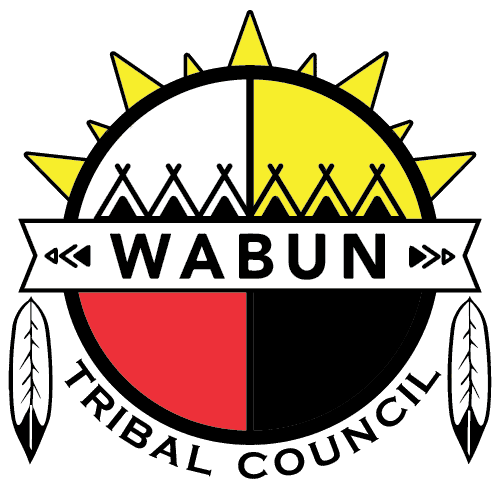
2023 Glenn Nolan
For his leadership in fostering economic opportunities for First Nations on their traditional lands, and for his long history of volunteerism.
Glenn Nolan is receiving the very award he helped create as co-chair of the PDAC's Indigenous Affairs Committee. Glenn was elected as PDAC director in 2005 and went on to serve as the association's first Indigenous president from 2012 to 2014.
Glenn is known as an accomplished bridge builder between Indigenous communities and the mining industry in Ontario. As former Chief of the Missanabie Cree First Nation, he understands the struggles and aspirations of Indigenous peoples. As an executive of Ring of Fire Metals (formerly Noront Resources), he appreciates the challenges exploration companies face as they try to advance mineral projects. Glenn continues to help foster stronger local Indigenous involvement and participation with Ring of Fire Metals.
Following in his father's footsteps, Glenn spent most of his career in the mining sector. He formed his own contracting firm to conduct geophysical surveys, line cutting and claim staking for mineral exploration across Northern Canada before moving on to other business ventures.
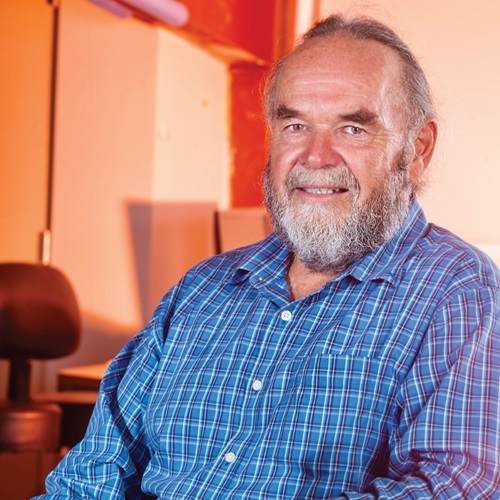
Glenn has supported the development of economic opportunities for Indigenous peoples world-wide. He has supported the government of Canada’s efforts to bring awareness of mining opportunities to Indigenous people throughout the Americas. He continues to support the Shuar people of Ecuador and Peru to help establish better relations with government and the mining sectors and was chair of the Canadian Executive Service Organization (now Catalyste+).
After dedicating his life’s work to meaningful engagement and consultation between industry and Indigenous communities, including countless hours of volunteer work with PDAC, it's Glenn's turn to be recognized by his peers.
2022 Colin Webster
For his ability to engage and establish trust with Indigenous communities on mineral projects.
Colin Webster is known for his dedication to meaningful engagement and consultation between industry and Indigenous communities on exploration and mine development projects.
A proud Algonquin member of Kitigan Zibi Anishinabeg in Quebec, Colin was raised in the small mining community of Kirkland Lake in Northern Ontario. He combines 25+ years of engineering qualifications and environmental management skills with an Indigenous perspective, empowering industry and Indigenous communities to have honest and respectful dialogue founded on transparency and trust. In the Lynn Lake mining camp in Manitoba, for example, Colin built trust with the Marcel Colomb First Nation where there was none. Sensitive to historic mining-industry challenges the community had faced previously, the current vice-president of sustainability and external affairs for Alamos Gold succeeded in communicating the merits of sustainable mining to community members.
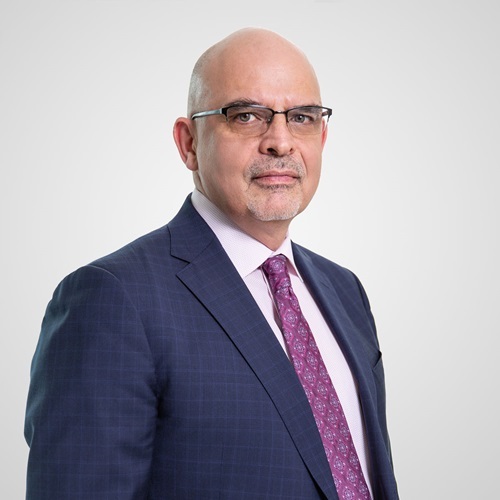
One of Colin’s most rewarding and also challenging roles was vice-president of sustainability for Noront Resources as the junior mining company attempted to negotiate the parameters of mine development in the James Bay Lowlands with surrounding First Nations communities. Colin helped community members better understand the mining cycle and the business opportunities available to them while ensuring their concerns about ongoing exploration and potential development were addressed. To this day the development continues to focus on community empowerment and working together in a meaningful way.
Over the span of his career, Colin has won the respect and appreciation of industry and Indigenous leaders alike with his ability to combine technical knowledge with Indigenous perspective.
2021 Nalaine Morin
For combining Indigenous traditional knowledge with Western science to improve the environmental assessment process for mining projects.
As a nationally recognized environmental assessment consultant, Nalaine Morin is known for her ability to bridge the gap between Indigenous Peoples and the mining industry by combining traditional knowledge with Western science.
A member of the Tahltan First Nation, Nalaine has a deep technical understanding of both mining and environmental assessment. She uses this unique background to assist companies and Indigenous communities navigating the complex waters of technical review, community consultation and permitting in British Columbia (BC). She was instrumental in creating and executing a joint permitting process and agreement for the Red Chris mine, for example, that ensures the Tahltan share in regulatory oversight of the mine.
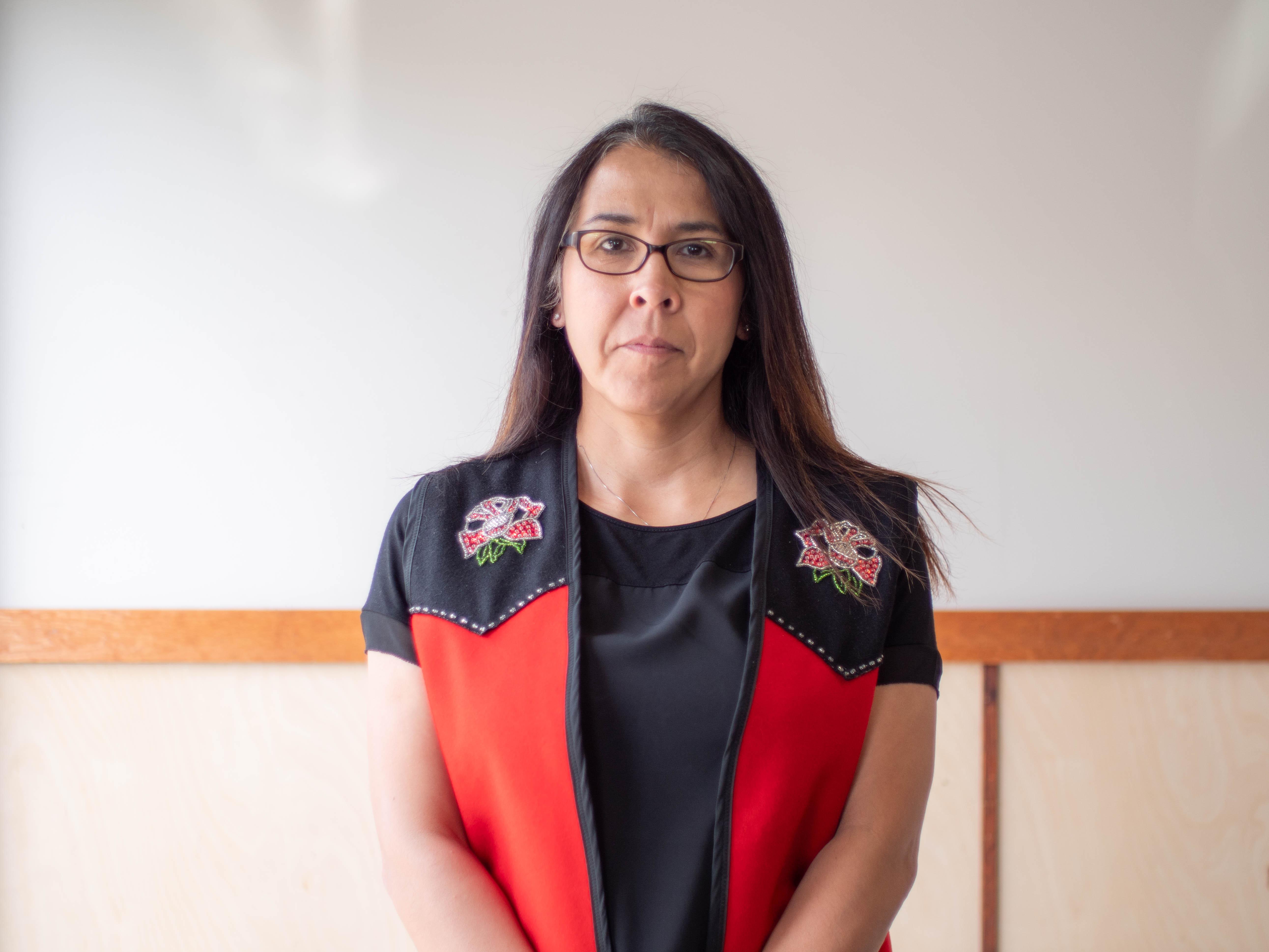
Nalaine, principal of ArrowBlade Consulting Services, is a member of BC’s standing Code Review Committee. As an Indigenous representative, she encouraged the province to revise the Code, making it among the strongest in the world for tailings storage. She served as a panel member for the proposed Prosperity Mine project for the Canadian Environmental Assessment Agency, is the technical advisor for the Citxw Nlaka’pamux Assembly’s traditional stewardship department, is a founder of the Tahltan heritage resource environmental assessment team, and serves as a director on the BC Hydro board and for Geoscience BC.
Nalaine holds a BSc in metals and materials engineering from UBC and a mechanical engineering technology diploma from the BC Institute of Technology. She is a guest lecturer at UBC’s School of Engineering, where she is known for her ability to connect with students and prepare them for work as engineers in a changing regulatory environment.
2020 Hans Matthews
For his contribution to Canada’s mineral exploration and mining sector by building bridges between Indigenous communities and the industry through the Canadian Aboriginal Minerals Association (CAMA).
Hans Matthews is an experienced geologist and member of the Wahnapitae First Nation in Ontario. As a founder and president of the Canadian Aboriginal Minerals Association (CAMA), he has played a key role in the evolution of Indigenous communities as equal partners in the mining industry.
He helped CAMA bring together industry and Indigenous leaders, government representatives and youth in a neutral setting to discuss resource management, youth engagement, and health and environmental protection.
The organization has been pivotal in developing partnerships that provide training, employment, business opportunities, and equity to Indigenous Peoples across Canada. While continuing to lead CAMA, Hans negotiated the participation agreement between the Nickel Rim South mine in Sudbury and the Wahnapitae First Nation, and was elected band councillor in 2012.
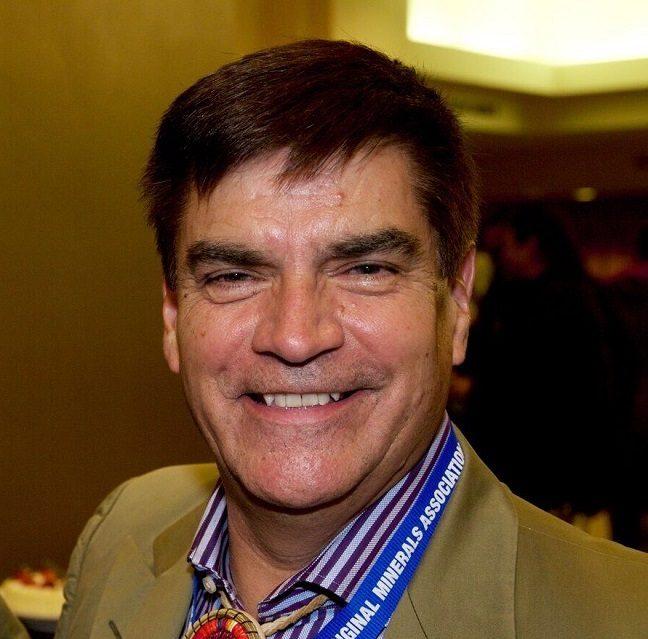
2019 Gordon Maxwell
For his contribution to Canada’s mineral exploration and mining industry by helping to set the bar for drilling safety and community consultation.
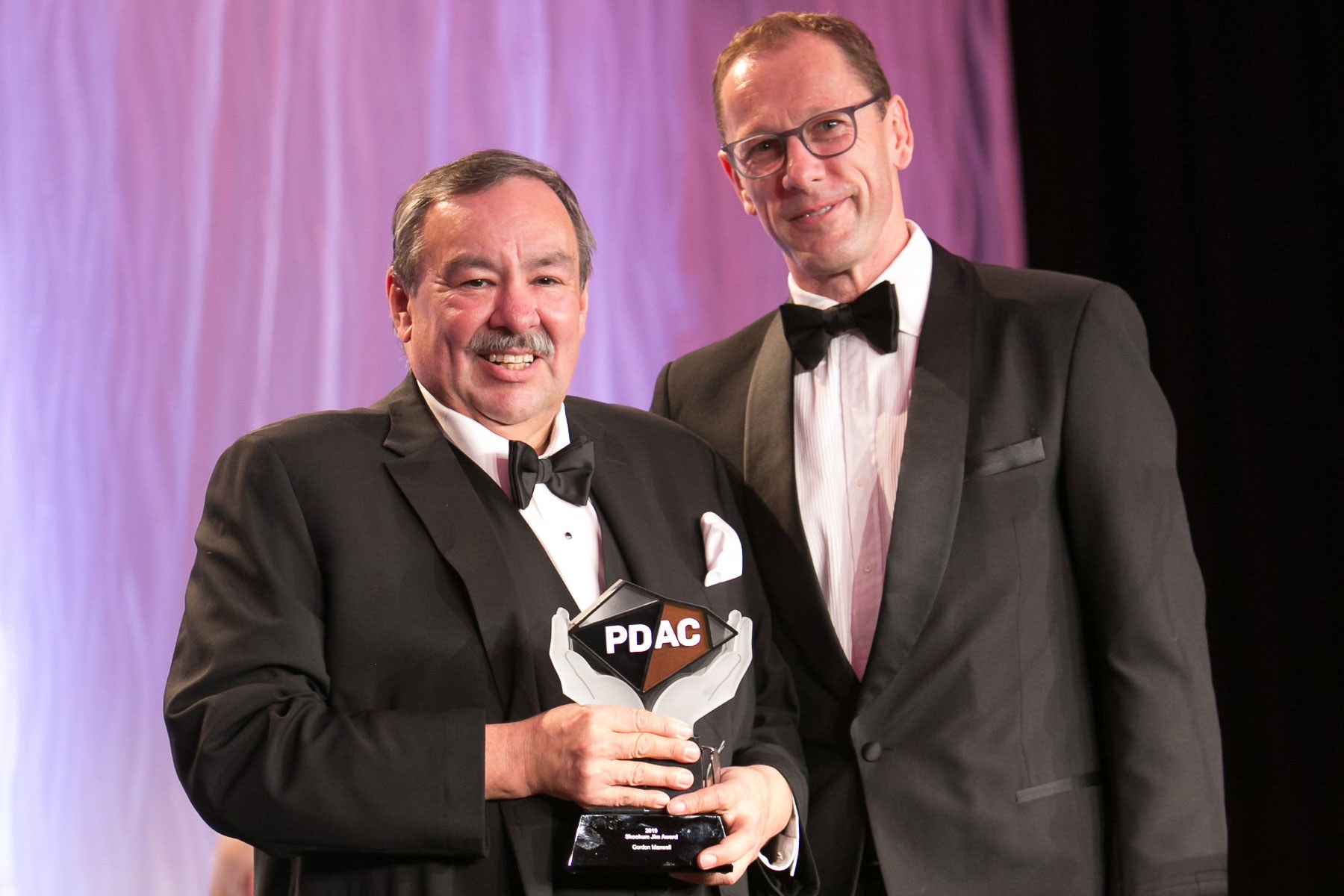
Gordon is a well-respected geologist and member of the Sachigo Lake First Nation in Ontario. He served on the Canadian Diamond Drilling Association’s Western Safety group, and on the committee in charge of developing the Drilling Excellence Certification.
For his contribution to health and safety in the field, Gordon received the 2012 David Barr Award from British Columbia’s Association of Mineral Exploration (AME). Gordon helped to set the bar for industry consultation with communities and Indigenous groups.
When Xstrata was planning exploration around the Kidd Creek Mine in northern Ontario in 2008, Gordon engaged a clear, respectful and honest dialogue with the Wahgoshig First Nation, offering opportunities for community members to participate in the project.
Throughout his domestic and international career, Gordon has demonstrated outstanding technical abilities, professionalism, and a commitment to safe and socially responsible exploration.
2018 Lana Eagle
For her contribution to Canada’s mining industry by working diligently to bridge the divide between Indigenous communities and both junior and major companies.
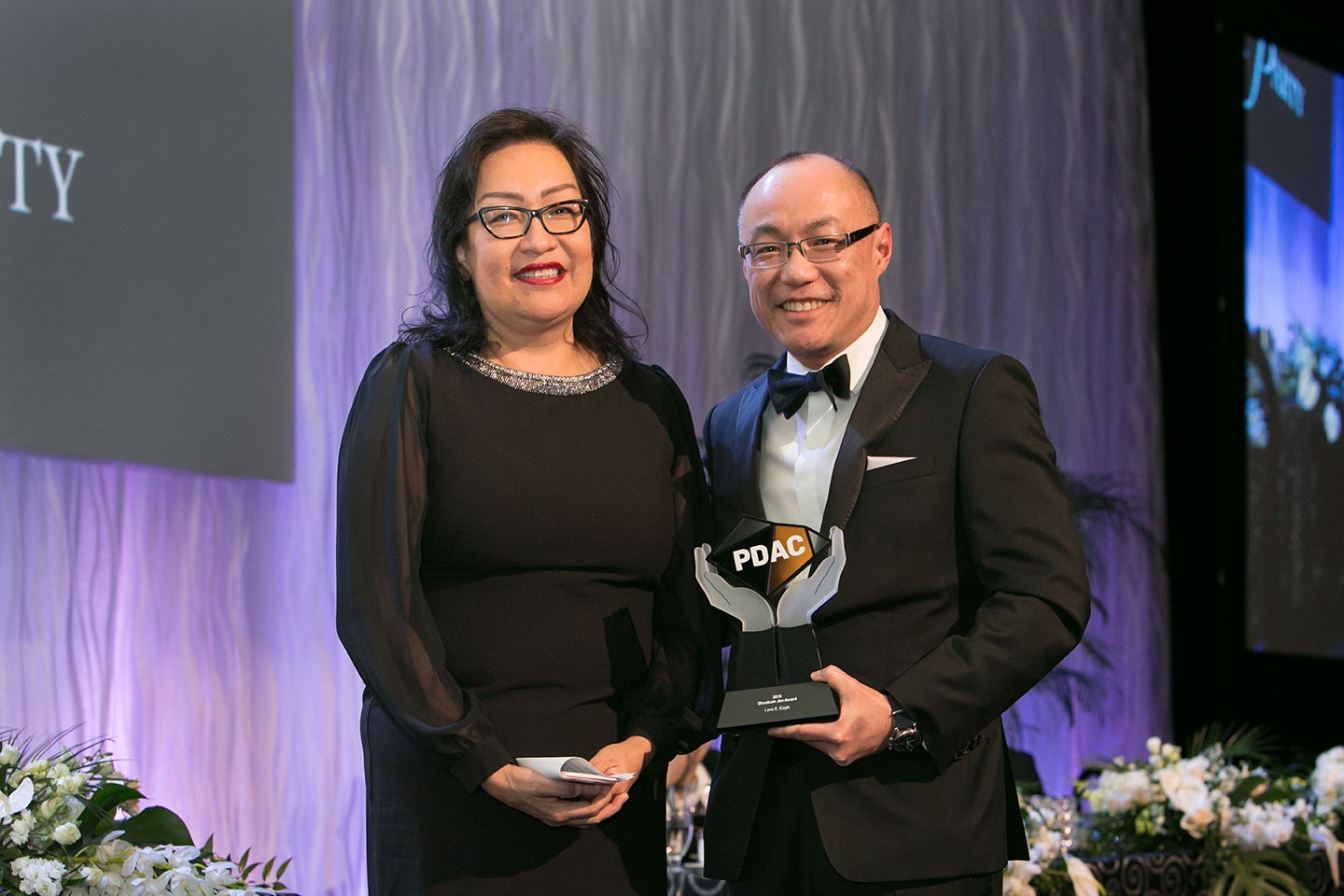
Lana is a member of the Whitecap Dakota Nation in Saskatchewan who has devoted her career to building relationships between the mining industry and Indigenous communities. She is the driving force behind the Association for Mineral Exploration’s (AME) Gathering Place, where industry and Indigenous representatives meet to forge common ground.
Lana developed a profound understanding of the complexities and challenges facing both mining companies and Indigenous people when, as chair of Electra Gold, she negotiated with and gained support from First Nations communities to secure a coal licence on Vancouver Island. She went on to use her gift for constructive dialogue to bring companies and communities together to discuss challenges, share success stories, and develop joint opportunities.
Lana’s serves as chair of AME’s Aboriginal committee, and in 2017 became the first Indigenous woman to be elected to its Board of Directors. She is a program advisor to British Columbia’s Institute of Technology, serves on CIM’s diversity and inclusion advisory committee, and is Vice-President of CIM’s Western district.
2017 Peter Moses
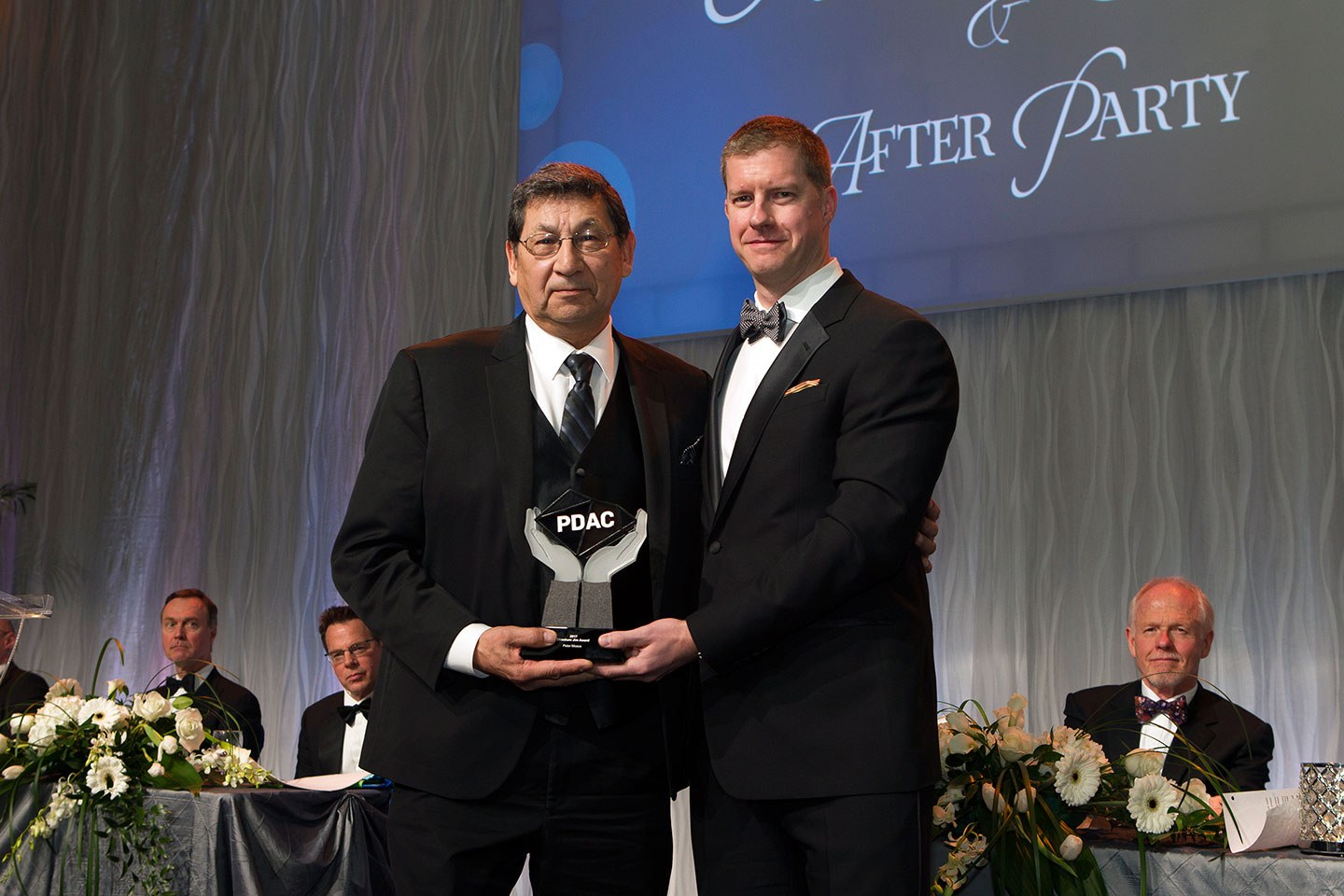
Peter Moses’ outstanding contributions to Aboriginal communities over a 50-year career have earned him the 2017 Skookum Jim Award. Currently the Mineral Development Information Officer for Matawa First Nations Management, Peter continues to provide perspective and advice about mineral development to the nine Matawa First Nation communities in Northern Ontario.
Peter has successfully promoted, negotiated and executed 34 option agreements between his partners and junior and major mining companies throughout Canada and the United States. He has used his knowledge to provide prospector training, staking and geoscience (exploration) information workshops to 123 of the 134 First Nation communities in Ontario, as well as the Métis Nation of Ontario. He developed the entire curriculum with the support of other industry associations.
Peter is credited with fostering positive relationships between industry and Aboriginal communities. His impact transcends provincial boundaries as he networks nationally within the Canadian Aboriginal Minerals Association (CAMA) supporting opportunities for Aboriginal communities to participate in and benefit from the minerals industry.
2016 Darrell Beaulieu
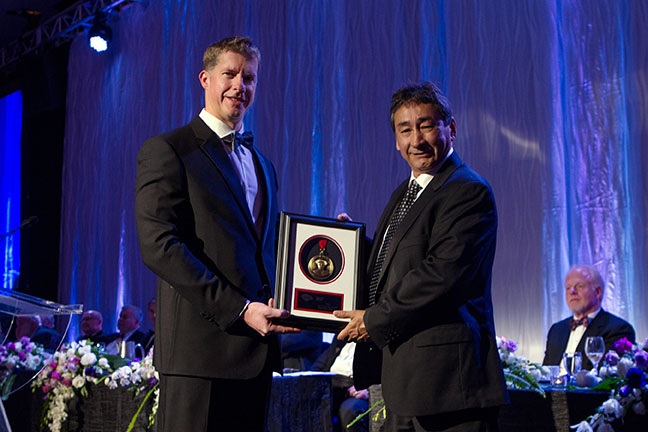
Darrell Beaulieu is the recipient of the 2016 Skookum Jim Award for his innovation, hard work and dedication to the minerals industry in his Yellowknife community. Darrell is a leader and highly-respected member of his community who served three terms as Chief of the Yellowknives Dene First Nation.
Darrell has a keen mind for business and became the first President of Det’on Cho Corporation, the business arm of the Yellowknives Dene First Nation. He served on the Board of Directors for both the NWT Mine Training Society and the NWT & Nunavut Chamber of Mines. In 2005, he assumed the role of President and CEO of Denendeh Investments Incorporated, a Dene corporation established to create long-term economic self-sufficiency for the Dene.
Darrell was a key player in organizing the Northern Aboriginal Business Association. He built the foundations for a new mineral industry enterprise, a 100%-owned Aboriginal exploration and mining company. Denendeh Exploration and Mining Company—officially shortened to DEMCo—was launched in 2013.
2015 Sam Bosum, President, Native Exploration Services
For his strong and continued efforts to encourage and mentor Cree youth to pursue a career in mineral exploration.
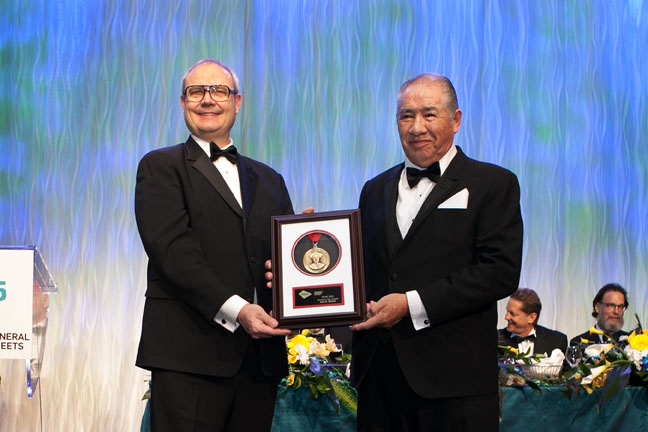
Sam Bosum has been working with mining and exploration companies in the Chibougamau region of Québec for nearly 50 years. He began his career in the area in the 1960s, and has worked as a Director of several mining and exploration companies.
Currently the President of Native Exploration Services, an Aboriginal-owned company founded in 1984, Sam is based in the Oujé-Bougoumou Cree Nation, Québec. Native Exploration Services provides staking, line-cutting, and geophysical services to both the mining and exploration industries, and provides training in the field of basic mineral exploration methodologies (prospecting and sampling). The company offers significant employment and business opportunities in the region, and is considered a major employer in the Oujé-Bougoumou Cree Nation.
Sam has been a member of the Band Council of the Oujé-Bougoumou Cree Nation for the past 38 years and has focused his efforts on advancing the affairs of his community. During this time he has served as Deputy Chief and was elected as Chief in 2001, a position he held for eight years. Sam is still an active member of the Band Council of the Oujé-Bougoumou Cree Nation. He works to inspire and encourage the youth of his community to pursue their education and achieve the goals they set for themselves in their future careers, including that of geologists.
2014 Jim MacLeod
For his strong leadership in the environmental impact of the mining sector and his work advocating for more education and training programs for Aboriginal youth within the industry.
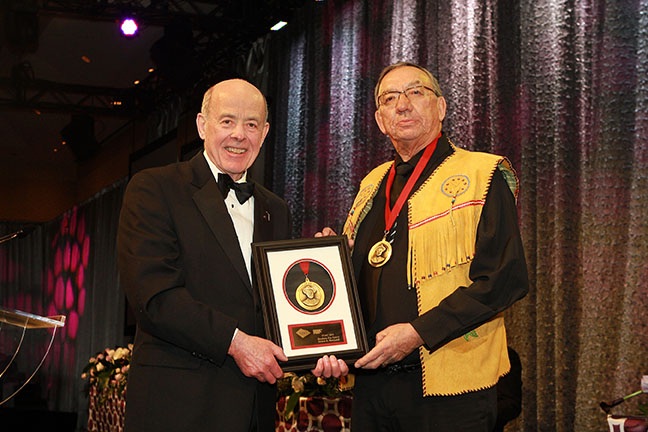
Mr. James MacLeod, a Cree resident of Mistissini, Quebec, is well known and respected in the mineral industry throughout Canada as a mining exploration technologist. Mr. MacLeod is a pioneer in mineral exploration and environmental impact and from the beginning recognized the link between mining and environment, and the importance of managing the relationship.
Mr. MacLeod began his career in mineral exploration as a young man, and founded J.A. MacLeod Exploration in 1987. Focussing his energy, knowledge and expertise on mineral exploration, Mr. Macleod has demonstrated a passion for field work, and built a strong reputation. In 2009, he founded EnviroCree Ltd ., an Aboriginal company specializing in environmental services. Both companies employ a local Aboriginal workforce, providing learning opportunities and training programs for Cree youth.
Mr. MacLeod is a strong advocate of education and advises youth to participate in all forms of training available to them. Over the years, he has given a number of courses in the mineral exploration domain, financially supported by the CHRD (Cree Human Resources Development). In the Spring of 2013, EnviroCree provided 9 Crees of Mistissini and Oujé-Bougoumou with the opportunity to participate in the Building Environmental Aboriginal Human Resources (BEAHR) Training Program, prepared by Eco-Canada.
Founder of the Mistissini Geological Resources Centre, Mr. MacLeod has worked closely with native communities as a consultant on projects and training in mining exploration. He also serves on the Board of Directors of Cree Mineral Exploration Board, and Canadian Aboriginal Minerals Association.
2013 Windigo Catering Limited Partnership

Windigo Catering Limited Partnership is the winner of this year’s Skookum Jim Awardfor Aboriginal achievement in the mineral industry. Windigo Catering is receiving the award for its achievement as a Canadian Aboriginal-run business and its service to the Canadian mining industry. Located in northwestern Ontario, the company is solely owned by Windigo First Nations and boasts an 83% First Nations employment rate.
Windigo specializes in providing catering services to industry, including remote camps, and is currently providing camp management, catering, housekeeping, laundry, and light maintenance services to Goldcorp’s Musselwhite Mine at their remote fly-in camp on Opapimiskan Lake.
2012 Nuna Group of Companies
Nuna Group of Companies, for its role as a premier northern provider of mining and construction services and of opportunities for Aboriginal People. Nuna was formed in 1993 and is 51% Inuit-owned [Nunasi Corporation (25.5%); Kitikmeot Corporation (25.5%); and Nuna Management (49%)].
Services the Nuna Group provides, through a group of seven subsidiary companies and fourteen joint ventures and partnerships, include: construction services, logistics, contract mining, infrastructure planning, earthworks, large diameter drilling, and mining support services and mining products.
Sharing the economic benefits of the business with Inuit, Aboriginal People, and northerners has resulted in the company having, among owners and subcontractors, a very high proportion of northern content on projects. The company, which is dedicated to ongoing employee training, has a work force in excess of 600 people on various projects in northern Canada and sources 66% to 81% of the goods and services it uses from the North.
Nuna was contracted to build the 567-kilometer ice road from Yellowknife to Lupin, Nunavut, and since 1998 the company has operated and maintained this roadway, which provides access to northern mining sites each winter.
Past Recipients
| 2011 | Phillip (Jerry) Asp |
| 2010 | Willie Keatainak |
| 2009 | Tli Cho Logistics |
| 2008 | Athabasca Basin Development Limited Partnership |
Special Achievement Award
2018 Jean Descarreaux (deceased)
For founding the Québec Mineral Exploration Association (AEMQ) and developing the mineral exploration sector in Québec.
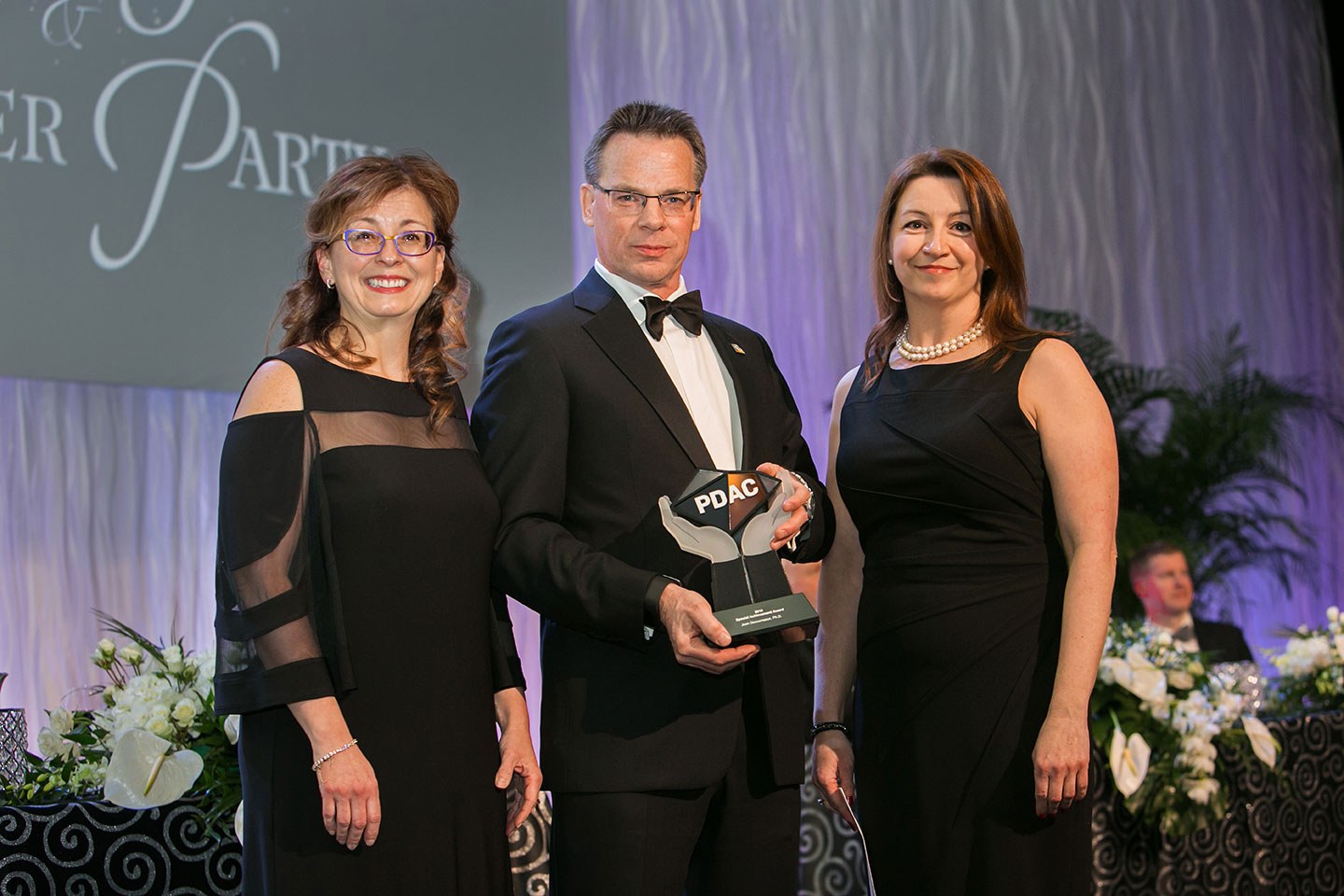
In 1975, Jean co-founded the Québec Prospectors’ Association (now the Québec Mineral Exploration Association, or AEMQ) to promote exploration and entrepreneurship in the province. He spearheaded a successful effort to convince former Premier René Levesque to adopt legislation allowing flow-through shares to be issued in Québec.
Jean became the first French-speaking resident of Québec to obtain a doctorate in geochemistry when he graduated from Laval University in 1973. He pioneered the use of lithogeochemistry as a prospecting tool to outline alteration halos around mineralized zones. He later compiled a massive lithogeochemical database designed to help geoscientists compare rock samples with those found in the vicinity of known orebodies and deposits, and digitized all of Québec’s lake sediment data.
Jean was the founding president of Claude Resources (purchased for C$337 million in 2016), co-founder of Cartier Resources and advisor to several junior companies. In 1986 he was awarded AEMQ’s Discovery of the Year award. Jean died in March 2017 at the age of 76.
2017 Women’s Association of the Mining Industry of Canada
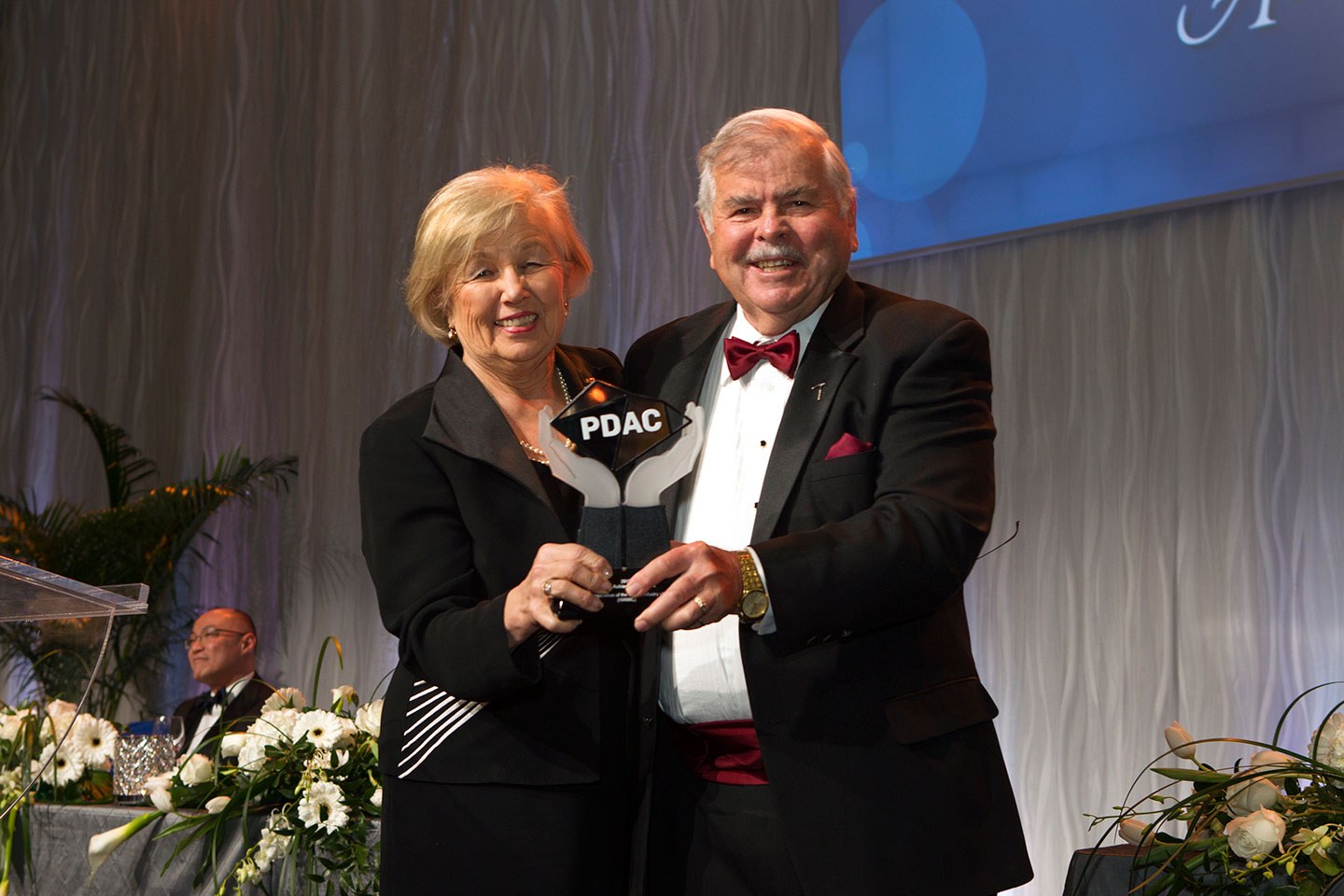
Founded in 1921, the Women’s Association of the Mining Industry of Canada (WAMIC) began as a simple meeting of women connected to the mining industry. Despite a changing world, its legacy continues to assist the next generation of mineral exploration and mining professionals in Canada. PDAC is recognizing their contributions with the 2017 Special Achievement Award.
Over its 95 years, WAMIC members have overseen the distribution of more than $1.8 million, mostly raised directly by their efforts. While the role of the association has evolved, it continues to make a significant impact. WAMIC has provided financial support for hundreds of students undertaking Earth science, mining-related subjects, and programs at colleges and universities across Canada.
WAMIC’s generosity continues to support many good causes. Special emphasis has always been given to those involving education, health, women and children, Aboriginal communities, and museums such as the B.C. Museum of Mining (now the Britannia Mine Museum) and the Royal Ontario Museum.
2016 The Bjorkman Family

The Bjorkman family, of Bjorkman Prospecting, are the recipients of this year’s Special Achievement Award for their multi-generational dedication to geology, prospecting and diversity.
Bjorkman Prospecting is a long-standing Ontario-based prospecting company that has worked in locations all across Canada as well as internationally. Encouraged by his father, Karl Bjorkman started prospecting around 1990 and saw his business grow to include claim staking, exploration project management and technical support. His five daughters, Jessica, Katrina, Ruth, Veronique and Karla, along with one son named Bjorn, inherited his passion for finding gold, making it the third generation to work in the industry. Wife and mother Nikki keeps the books.
The Bjorkman girls are credited for encouraging other women into a predominantly male dominated industry. As volunteers with the charitable organization, PDAC Mining Matters, they have contributed to Mining Rocks Earth Science Camps sharing their knowledge and passion for prospecting and geology with Aboriginal youth in northern Ontario communities.
2012 Yellowknife Mine Training Society (MTS)
Yellowknife Mine Training Society (MTS), for changing the lives of Aboriginal people in the NWT by providing them with the opportunity to develop job skills that can be used in the mining industry and afford them a higher standard of living and also for developing skilled workers for the mining industry.
The MTC is a non-profit society comprising Aboriginal, industry, and government partners. Its objectives are to i) screen, select, train, and place northerners in all areas of mining; and ii) in cooperation with the NWT’s education system and communities, build a legacy of education and awareness about the employee and skill requirements of the mining industry.
MTS works with mining companies and industry service providers to bring training and jobs together, funding up to 50% of eligible costs for training programs. Priority for funding is given to training proposals that are skills based and lead directly to employment. Because the Yellowknife MTS was a pioneer in this area, the awards committee is recommending that it be given the award as a representative of all of the other MTSs across the North.
Since 2004, the Yellowknife MTS and its partners have trained 854 individuals out of a total 1,095 applications, and 600 people have been employed in the mine and mine services sector.
Courses offered include:
- general trades training;
- environmental monitoring;
- first aid first responder;
- driller helper;
- underground mining (heavy equipment operator, etc.);
- and mineral process operation.
Past Recipients
| 2011 | Laurence Golborne, Mining Minister of Chile |
| 2009 | Britannia Beach Historical Society |
| 2007 | Tom Schroeter |
| 2006 | Ian Telfer |
| 2005 | Barry French & Bill Breukelman, Attilio G. Spat |
| 2004 | Roscoe Postle Associates Inc., Mary-Claire Ward |
| 2003 | Owen L. White |
| 2001 | Frank M. Hoey |
| 2000 | Robert E. (Dutch) Van Tassell |
| 1999 | Roy A. Martin, Ross Toms, Watts, Griffis & McOuat Limited |
| 1998 | PDAC Education Committee - MINING MATTERS |
| 1997 | Eileen Wykes |
| 1991 | Michael P. Henrick, George Podolsky |
| 1989 | Régis L. Labeaume, Eveline M. Kasner |
Sustainability Award
2025 Teck Resources and UN Women – Originarias Program
For its transformative impact on Indigenous women in Chile.
The Originarias Program, a partnership between Teck Resources and UN Women, was selected for its transformative impact on Indigenous women in Chile, particularly in the Tarapacá region. This program addresses the intersection of gender, ethnic, and territorial inequalities that Indigenous women face, such as poverty, limited workforce participation, and low political representation.
Since its inception in 2016, the program has empowered over 8,000 people by focusing on leadership, economic autonomy, and community engagement. Highlights include the creation of the Empowerment Centre for Indigenous women in Iquique and the training of over 2,000 Indigenous women to enhance their leadership and advocacy skills.
Additionally, the program has facilitated digital inclusion through platforms like "Trenzando Saberes" and "Conectando Negocios," which help Indigenous women access education and markets. The program’s achievements also include supporting 500 Indigenous women in developing sustainable businesses, with over 300 entrepreneurs featured on the digital platform.
The program’s replicable and sustainable model, combined with its focus on human rights, gender equality, and cultural preservation, positions it as a significant contribution to sustainability efforts worldwide.

2024 O3 Mining
For exceptional Environmental, Social and Governance (ESG) performance including the achievement of ECOLOGO Certification.
Since its inception in 2019, O3 Mining has continually enhanced its environmental, social, and governance (ESG) practices. In 2022 alone, the company invested $2.3 million towards implementing best practices that exceed regulatory mandates. Showcasing its commitment to responsible project development, O3 Mining became one of the first exploration companies certified by Underwriters Laboratories of Canada (UL 2723 ECOLOGO Certification Program for Mineral Exploration Companies).

O3 Mining's approach transcends both standard regulations and ECOLOGO certification criteria. For instance, it provides superior protection to water banks beyond regulatory standards and mandates the use of biodegradable oils in all heavy machinery on sites, not just drilling equipment as stipulated by the certification. Recognizing the critical role of social acceptability in project advancement, the company embraces a participatory strategy that employs various tools to foster open dialogue and feedback from all stakeholders, ensuring a cohesive coexistence.
To underscore its commitment to responsible exploration, O3 Mining created a dedicated sustainable development department. This proactive team's primary role is to ensure the consistent application of ESG best practices across the company. Additionally, there's a Sustainable Development Committee within the Board of Directors to aid the Board in overseeing matters related to health and safety, environment, community interactions, and human resources.
2023 The Lundin Foundation
For creating an organization funded by mining revenue with the sole purpose of providing lasting benefits for communities surrounding Lundin Group companies operations.
The first question country leaders often ask when a company wishes to develop a mine within their borders is how communities will benefit from the development. The Lundin Group of companies, consist of 11 publicly traded companies operating in over 20 countries, can provide concrete examples of how the Lundin Foundation leverages resource development to provide local economic opportunities.
In 2021 alone, the Foundation supported 650 small businesses that generated $42 million in revenues and provided 2,000 well-paying jobs. The Foundation helped 79 start-ups launch solutions to climate change, attracting $30 million in third party funding to bring those solutions to market.
To encourage career development in Ecuador, the Foundation developed and delivered a training program for community members with no previous experience to become best-in-class process plant and mine operators at the Fruta del Norte gold mine, Ecuador's first large-scale underground mine. At the start of the program, 50% of the 315 trainees were either unemployed or underemployed. One year after completing the program, 80% of the trainees - including women - were employed as operators, bringing home a cumulative US$3.2 million in wages.
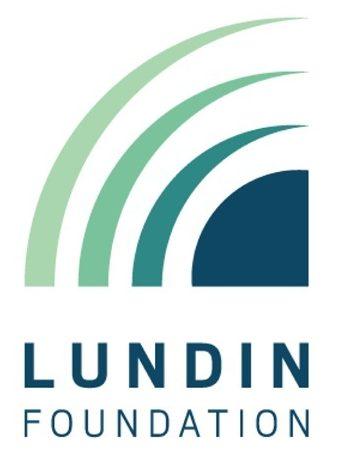
In the communities surrounding the mine, the Foundation provided technical and financial support a local agricultural cooperative, to establish organic farm management practices and achieve organic certification. As a result, the cooperative's 180 producers, whose products include coffee, cocoa, yuca and plantain, now export to Europe, North America and other South American countries.
These are just two examples of how the foundation is improving the lives of people near the Lundin Group of companies' operations. Given the quantities of metals and minerals required to meet future generations' needs, coupled with the complexities of securing and maintaining a social licence to operate, the Lundin Foundation provides a model for the industry on how mining can foster a more sustainable future.
2022 Sabina Gold & Silver Corp.
For state-of-the-art caribou protection and social initiatives at the Back River gold project in the Kitikmeot region of southwest Nunavut.
In 2015 Sabina presented a case for the development of the Back River Project to the Nunavut Impact Review Board. Following a lengthy process, Sabina had met most of the requirements for permitting the project, but the board had concerns over how the company would protect caribou herds in the region. They rejected the initial application. Sabina asked the government, community and other stakeholders for help to devise a better plan.
The collaborative process enabled Sabina to create one of the most stringent caribou protection plans in the North. The initiative starts with Inuit monitors who continuously scout the region for caribou. At the first sign of activity, and depending on how vulnerable the herd is, the operation slows down or comes to a standstill. Blasting stops. If activity is detected along the 170-kilometre winter road leading from the mine to the port facility at Bathurst Inlet, trucks halt until caribou have cleared the area. The winter road is constructed with flattened banks and vehicle speeds are limited to ease migration should caribou pass through the area.
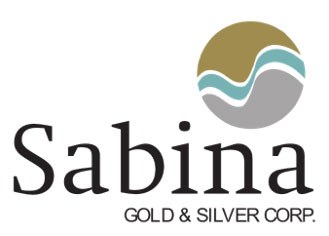
The caribou protection plan is just one of several initiatives designed to support sustainability in the region, including: investigating a hybrid energy system to offset diesel power generation with wind energy; funding the restoration of the creek leading into Bernard Harbour to create an unobstructed path for char to travel to spawning grounds and back out to the ocean; establishing a wealth creation fund with a $4 million initial investment to create long-term employment opportunities outside of the mining industry in Kitikmeot communities; donating 80 Leitz microscopes to regional schools to promote STEM learning; and a food security program that was created when the Covid-19 pandemic limited personnel from working on site.
As a result of these and other efforts, Sabina received its social license including a Nunvut Impact Review Board Project Certificate in 2017 and a Nunavut Water Board License in 2018. The company has also entered into a renewable 20-year benefit and land tenure agreement with the Kitikmeot Inuit Association (KIA) representing more than 6000 Inuit. “In Sabina, we have found a partner that shares our vision of sustainability,” according to KIA President Stanley Anablak.
2021 B2Gold
For exemplary resettlement and community development work with the village of Fadougou at the Fekola gold mine in Mali.
When B2Gold, an operator of several mines and development projects worldwide, acquired the Fekola Project in Mali in 2014, the village of Fadougou was located near the perimeter of the proposed open pit. Although relocating the residents wasn’t a condition of the mine permit, it soon became obvious that building a new village was an opportunity to invest in the long-term social and economic development of the villagers.
Resettlement is a disruptive, stressful process. So it was only after extensive engagement with the government and community members that B2Gold devised a resettlement plan to account for risks such as loss of homes, loss of livelihoods and access to land, and social disorganization.
The collaborative effort went beyond managing these risks. It improved living conditions in Fadougou by providing services, education and training, building new infrastructure and diversifying the economy. The resettlement project employed 400 members of the community during construction. It gave traditionally marginalized women a role in the planning and execution of the resettlement. And, most importantly, the process positioned the whole region for social and economic growth beyond the life of the Fekola Mine.
A cornerstone of the process was a training program called AFECK sponsored by B2Gold and the Canadian government. The four-year program provided trade skills such as carpentry, concrete finishing and solar panel installation to community members so they could participate in village construction. AFECK also offered training and support to local entrepreneurs, resulting in several new businesses. A permanent vocational centre was established to train youth in locally relevant skills such as masonry, catering and auto mechanics.
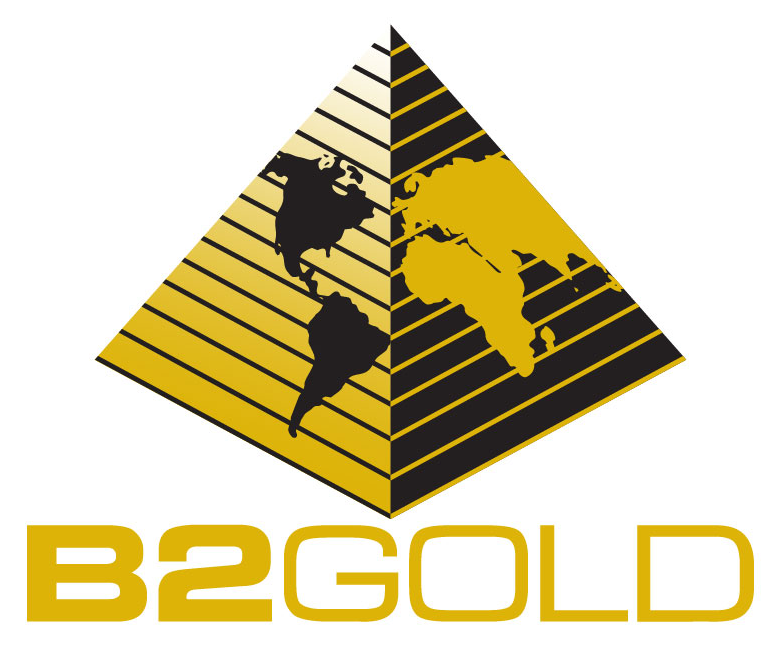
Another critical component was a grievance mechanism that allowed people affected by the resettlement to formally express their concerns and complaints. If complainants disagreed with the proposed resolution, they could appeal to a Community Resettlement Committee composed of village members, women, youth, in-migrants and local authorities.
The Fekola Mine reached commercial production in 2017 and the village construction began later that year. The first residents moved to New Fadougou in April 2019, and since then 912 households representing 3,241 people have completed the move. B2Gold continues to invest in the village of New Fadougou to ensure their long-term success. In 2018, a three-year Community Development Plan (CDP) was developed with surrounding communities, setting mid-term and long-term objectives for their own development. Current projects include improved access to potable water infrastructure, construction of primary and secondary schools, equipment and capacity building on advanced agricultural techniques.
B2Gold believes that it has a responsibility to share benefits and leave a positive legacy with communities that will last beyond the life of its mines and seeks to build a trust-based relationship with local stakeholders. The resettlement and development of the village of Fadougou by its Fekola Gold Mine demonstrates this commitment to responsible mining and to international best practice in community relations and development.
2020 Agnico Eagle Mines Limited’s Nunavut Community Relations, Education & People Development Team
For developing a strong Inuit workforce and supporting the Kivalliq region of Nunavut with training, education and community-led projects that benefit everyone.
Agnico Eagle is setting an example for the Canadian mining industry at its operations in Nunavut. The company has invested extraordinary energy and resources to developing its Inuit workforce and providing support for local communities.
Agnico Eagle's goal is to reach 100% Inuit employment at its Nunavut gold mines, including Meadowbank, Meliadine and Amaruq. To get there, the company offers training, education and skills development. Since Meadowbank opened in 2010, the company has provided 36,000 training hours to Inuit employees, including work readiness programs, summer employment for students, and individual career development.
A pool of donated funds ranging from $10,000 to $25,000 annually supports community-specific projects such as a summer camp for children, removing and transporting hazardous material from landfill sites, and repairing baseball fields.

2019 NexGen Energy Ltd.
For employing the latest technologies to reduce exploration’s environmental footprint and for fostering economic and social development in neighbouring communities through a variety of initiatives.
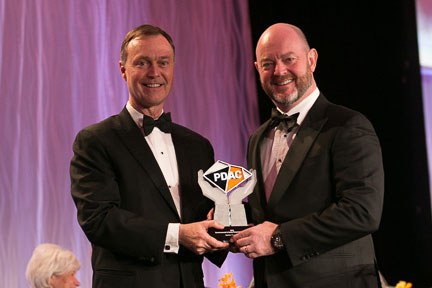
NexGen Energy has expanded its pursuit of excellence into the realm of environmental and social responsibility as its Arrow uranium deposit advances towards development and production. On the environmental front, the company is overhauling dated practices and implementing new technology to minimize its footprint.
Directional drilling is testing several targets from a single location, significantly reducing the land disturbed by conventional drilling. Extensive studies are characterizing the existing environment to inform future planning, disturbed areas are being re-vegetated, and plans are underway to install a solar energy pilot project and construct energy efficient buildings.
NexGen is also leading the way in community engagement in northern Saskatchewan by introducing several initiatives designed to improve economic development, health and community well-being through sports and recreation.
2018 Golden Star Resources Ltd.
For exceptional community relations, commitment to sustainable development, and support for employees and local businesses at its two producing gold mines in Ghana.
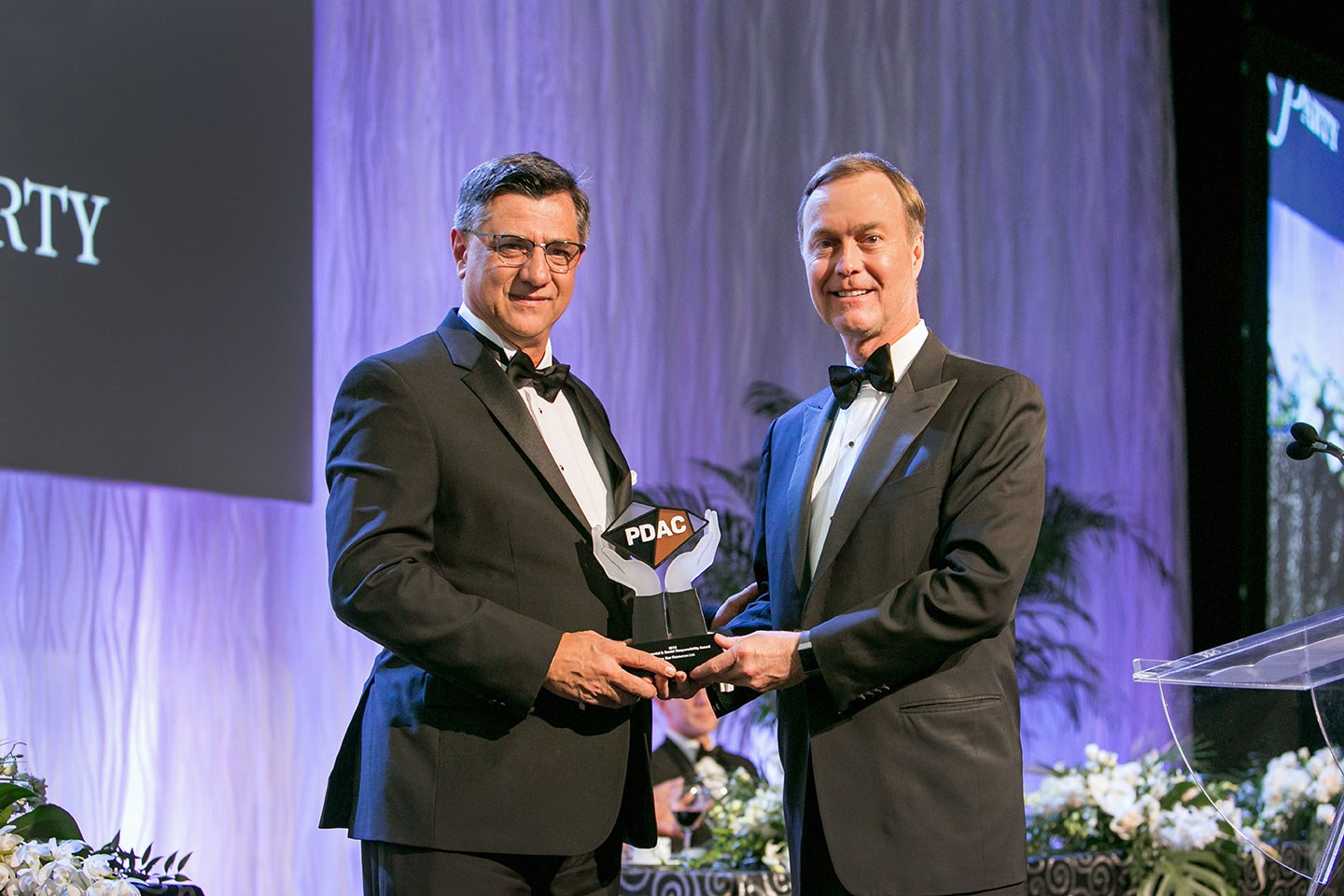
Toronto-based Golden Star is committed to minimizing its environmental footprint at its Wassa and Prestea mines on the Ashanti gold belt in Ghana. Since 1999, the company has installed more than 200 clean water supply systems to serve local communities, doubling the proportion of households with access to clean, pipe-borne water.
Two of its open pits were integrated into the local hydrology to act like natural lakes that fill and drain after rainfall. The lakes are stocked with fish the community can raise and harvest long after mine closure.
The Golden Star Development Foundation launched in 2006 donates US$1 for every ounce of gold produced and 0.1% of pre-tax profits to fund development projects selected by the community. The 2,500-strong workforce is 99% Ghanaian, and women are represented strongly on both its Board of Directors and management team. The company’s breast cancer awareness program, now in its fourth year, has screened more than 10,000 women and girls in the country.
2017 Teranga Gold Corporation
For being a leader in community relations and responsible mining practices.
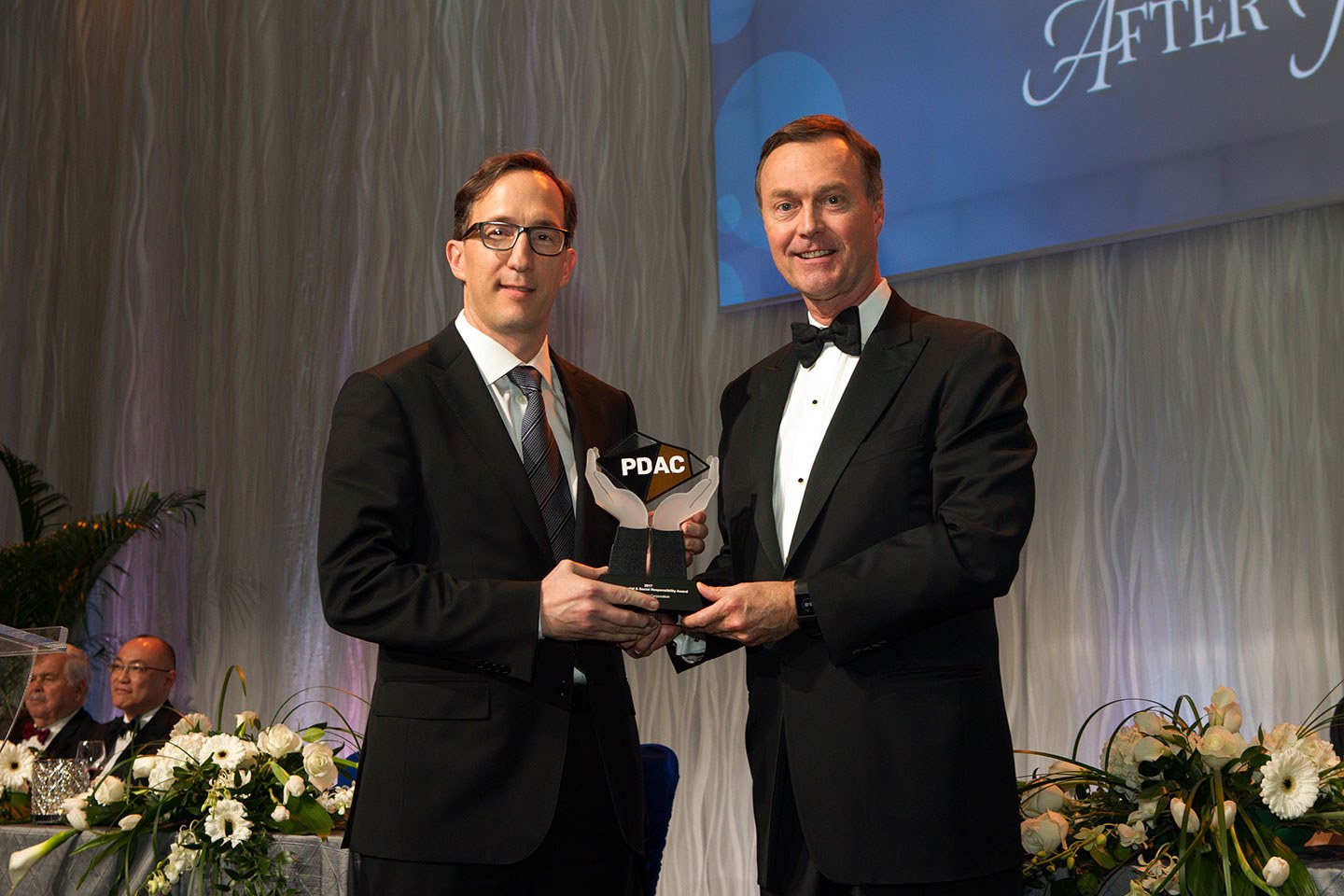
The Sabodala Gold Mine is the first and only gold industrial mine in Senegal, West Africa. Teranga Gold Corporation (Teranga) has operated the mine since 2009 and is the recipient of the 2017 Environmental & Corporate Social Responsibility Award for being a leader in community relations and responsible mining practices.
Teranga employs more than 1,000 people from Senegal, and delivers more than 40 training programs to develop employee skills, literacy and numeracy. Women comprise 9% of the workforce at the mine, and are represented across all departments. The company launched initiatives aimed at the growth of small businesses and service providers to feed its local supply chain, and proactively sought partnerships with government, international and local NGOs, as well as other organizations interested in supporting the long-term, socio-economic development of the region.
Teranga is working closely with the Government of Senegal as it introduces its Emerging Senegal Plan, which includes implementing the Extractive Industries Transparency Initiative.
2016 Lucara Diamond Corp.
For their stakeholder initiatives, community engagement, and focus on sustainable practices and long-term benefits at their Karawoe mine in Botswana.
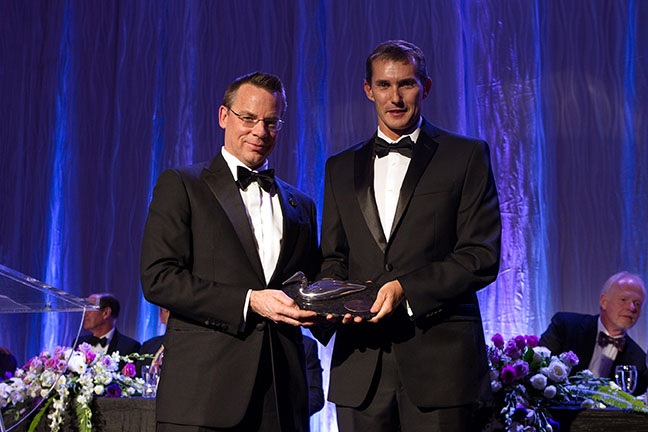
Lucara Diamond Corp., which recently discovered the second largest diamond ever on record, is the recipient of this year’s Environmental & Social Responsibility Award for their stakeholder initiatives, community engagement, and focus on sustainable practices and long-term benefits at their Karawoe mine in Botswana.
The diamond producer embarked upon an intensive stakeholder mapping and engagement exercise to ensure community members had a voice in each phase of asset development, including its name which resulted from a competition at a local school. The workforce at Karowe is comprised of 96 per cent Botswana nationals. Lucara Diamond aims to continue building strong ties with local communities and government authorities to strengthen and expand its innovative partnerships for a positive and lasting legacy.
From the perspective of the Karowe community, Lucara Diamond’s multi-faceted, nuanced approach to responsible mining has made a lasting contribution to improving quality of life, creating economic opportunities and contributing to sustainable development.
2015 Noront Resources Ltd.
For its accomplishments and commitment to social initiatives in Northern Ontario.
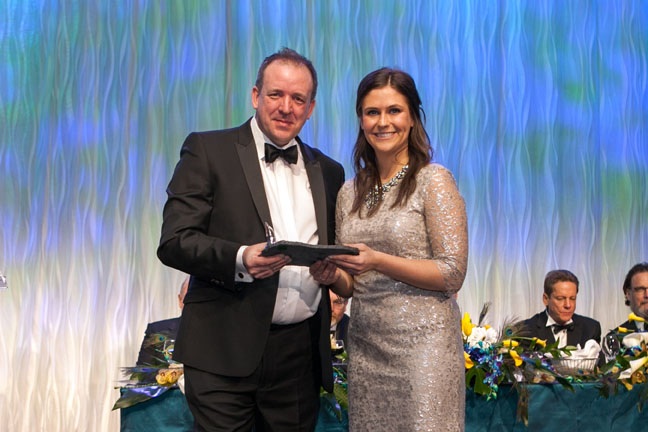
Noront Resources Ltd. is the recipient of this year’s Environmental and Social Responsibility Award. The company is receiving the award for its accomplishments and commitment to social initiatives in Northern Ontario. The company prides itself on having an open and honest dialogue with all stakeholders, especially the First Nations that surround the company’s Eagle’s Nest Project in the James Bay lowlands of northern Ontario.
Over the years, Noront has expanded its community engagement program to include education, skills training, youth programming and economic development in the area. The company has built a partnership with Matawa’s Kiikenomaga Kikenjigewen Employment and Training Services (KKETS) and Confederation College in Thunder Bay to create the Ring of Fire Aboriginal Training Alliance (ROFATA).
The company supports a number of educational programs aimed at overcoming barriers to higher education among Aboriginal communities, including Noront Mikawaa Scholarship Program, Schulich School of Business, Global Mining Management MBA Program, Capstone Project and Webequie First Nation’s Grade 11 Mining Curriculum Program.
Noront also invests in community development by sponsoring programs like Mining Matters, an organization that educates students about Canada’s geology and mineral resources, and DAREarts, a movie-making youth camp that helps students better understand mining and a donations and sponsorship program.
The company has worked hard to build initiatives it believes will provide long-term benefits to its shareholders and the communities in the region where they operate.
2014 Teck Resources Limited
For its outstanding accomplishments and commitment to sustainability, environmental and social initiatives.
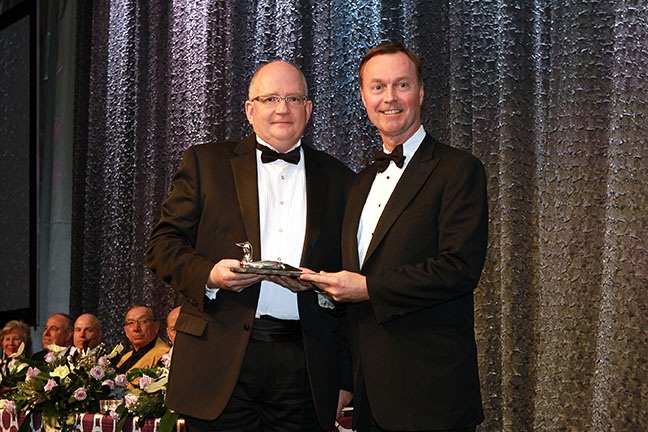
Teck is Canada's largest diversified mining company, with assets in Canada, the USA, Chile and Peru. The company has learned over its 100-year history that responsible mining and mineral development are fundamental to long-term success. Teck’s approach to business is guided by its pursuit of sustainability.
In 2011, Teck developed a comprehensive sustainability strategy, focusing on long and short term goals that will achieve the company’s vision for sustainability. The sustainability strategy supports six key areas that represent the biggest challenges and opportunities for the mining sector: community, our people, water, biodiversity, energy, and materials stewardship.
Teck is committed to investing in environmental and social initiatives with communities and organizations that align with the company’s business objectives and sustainability efforts both locally and globally. Dedicated to building value through partnerships, Teck aims to address local and global sustainability issues.
Teck’s sustainability, environmental and social initiative achievements to date include:
- implementing over 50 energy efficiency projects reducing over 200 terajoules in operations; contributing over $23 million to more than 1,000 charitable organizations;
- investing $19 million to purchase 7,150 hectares in British Columbia’s Elk Valley and Flathead River Valley;
- donating $2 million to the Nature Conservatory of Canada to help conserve Lot 48 on Columbia Lake in southeastern British Columbia, investing $12.5 million to support the expansion of the Vancouver Aquarium;
- National Partner of the Canada Games, beginning with the 2013 Games in Sherbrooke;
- partnering with the Canadian Olympic Committee to develop the Teck Coaching Series;
- investing $1 million to support the completion of the Trans Canada Trail;
- supporting the Royal BC Museum as the Lead Partner in Biodiversity; sponsoring the Earth Rangers School Outreach Program;
- donating $7.5 million to create the Norman B. Keevil Institute of Mining Engineering at UBC and $5 million towards the new UBC Earth Sciences building;
- named to the 2013 Dow Jones Sustainability World Index, four years running;
- top ranked Canadian company and top ranked mining company worldwide on Corporate Knights’ 2013 Global 100 Most Sustainable Corporations;
- recognized as one of Sustainalytics’ Top 50 Socially Responsible Corporations in Canada in 2013.
2013 Cameco Corporation
For its outstanding accomplishments in establishing good community relations to support its exploration and mining operations.
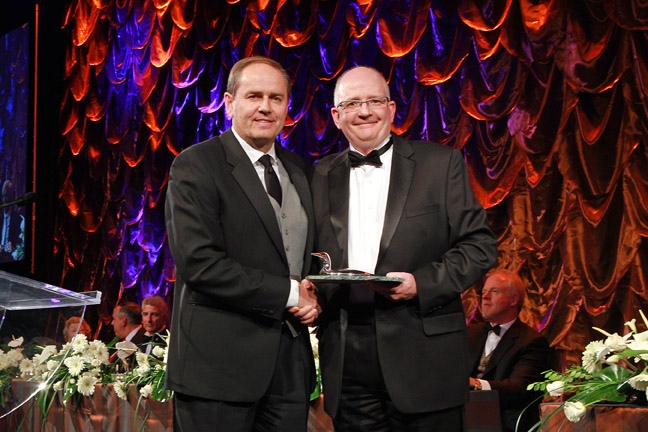
Cameco Corporation is the recipient of this year’s Environmental and Social Responsibility Award. Cameco is receiving the award for its outstanding accomplishments in establishing good community relations to support its exploration and mining operations. Cameco’s five-pillar Corporate Social Responsibility (CSR) model is designed to ensure local community support and proactive environmental stewardship, and has led to recognition of Cameco as an industry leader in CSR by Aboriginal associations and industry rankings.
2012 Towards Sustainable Mining (TSM)
Towards Sustainable Mining (TSM), a stewardship program developed by the Mining Association of Canada (MAC)that aims to improve the mining industry’s overall performance by aligning its actions with the priorities and values of Canadians.
The program was created in 2004 to help mining companies evaluate the quality, comprehensiveness, and robustness of their management systems under several performance elements (tailings management; energy use and greenhouse gas emissions management; aboriginal and community outreach; crisis management planning; biodiversity conservation management; and safety and health).
Participation in TSM is a condition of membership in MAC. It requires members to subscribe to a set of guiding principles that are backed by specific performance indicators against which member companies must report annually. These reported results are externally verified every three years. A community of interest advisory panel provides feedback to MAC on the implementation, reception, and use of TSM performance indicators.
TSM has been recognized as one of the best industry association sustainability initiatives in the world, receiving the Globe Award for Environmental Excellence in 2005. Since that time, independent studies by Five Winds (2008) and the Canadian Business for Social Responsibility (2009) have both ranked TSM as ‘best in class.’
Past Recipients
| 2011 | IAMGOLD Corporation |
| 2010 | De Beers Canada, Avalon Rare Metals Inc. |
| 2009 | BioteQ Environmental Technologies Inc. |
| 2008 | Fonds Restor-Action Nunavik (FRAN) |
| 2007 | Gabriel Resources Ltd., Polaris Minerals Corporation |
| 2006 | Greystar Resources Ltd. |
| 2005 | Diavik Diamond Mines Inc., Beth Clemson |
| 2004 | Wallbridge Mining Company Limited, Christine Kaszycki |
| 2003 | Falconbridge Limited |
| 2002 | Echo Bay Mines Ltd. |
| 2001 | Cominco Ltd. |
| 2000 | Noranda Inc., Richmont Mines Inc. |
| 1999 | C. Henry Brehaut, Timginn Prospecting Syndicate & Bradley Bros. Limited |
| 1997 | BHP Minerals Island Copper Mine |
| 1996 | Denison Mines Limited, Rio Algom Limited |
| 1995 | Westmin Resources Limited |
| 1994 | Aur Resources |
| 1993 | Hudson Bay Mining and Smelting Company Ltd. |
| 1992 | Viceroy Resource Corp., Vancouver |
| 1991 | Inco Ltd., Toronto |
| 1990 | Queenstake Resources |
Thayer Lindsley Award
2025 Onto Discovery Team
For the discovery of the Onto copper-gold deposit in Sumbawa, Indonesia.
The Onto Discovery Team was selected for the 2025 Thayer Lindsley Award for their outstanding discovery of the Onto copper-gold deposit in the Hu'u project, Sumbawa, Indonesia. This discovery is considered one of the most significant copper-gold discoveries globally in the past decade, notable for its sheer size, grade, and the challenging exploration conditions. The Onto deposit is a Tier-1, world-class copper-gold deposit containing approximately 2.1 billion tonnes of mineralization with an average grade of 0.86% copper and 0.48 grams per tonne of gold. This indicated and inferred resource contains 17.6 million tonnes of copper and 32 million ounces of gold.
Members of the Onto Discovery Team at the time worked for Vale Exploration Pty Ltd, PT Vale Eksplorasi Indonesia or PT Sumbawa Timur Mining. PT Sumbawa Timur Mining is an Indonesian joint venture company owned by Eastern Star Resources Pty Ltd (80%), a 100% owned subsidiary of Vale International, and PT Aneka Tambang Tbk (20%).
In 2006, Vale Exploration Pty Ltd decided on a porphyry exploration strategy to identify areas of advanced argillic alteration in lithocap environments that typically occur above porphyry systems, and test for concealed porphyry mineralization. One of the first areas identified and visited in 2008 was the Hu’u Project Contract of Work (CoW). An option agreement was signed, and exploration commenced in 2010. The first drill hole intersected a small porphyry deposit in a small diorite stock with chalcopyrite-pyrite ± bornite in biotite-magnetite alteration and a quartz vein stockwork that was drilled in 20 holes. Subsequent exploration advanced to the southwest looking for similar targets. In June 2013, VHD034 was drilled at Onto testing a weak geochemistry anomaly and magnetic high and intersected 287 meters of copper and gold mineralization dominated by pyrite and covellite; a totally new style of mineralization for this region.

The discovery was made in dense, mountainous terrain without any surface mineralization, with deep drilling (800m holes), following mapping, stream sediment and soil sampling and airborne geophysical surveys (Lidar, magnetics and radiometrics. The deposit occurs 500 meters below the surface, hidden under unmineralized volcanic rocks, making it a remarkable "blind" discovery.
The economic significance of the Onto deposit, combined with the technical challenges and innovative exploration methods employed, earned the team recognition for their contribution to the global mining industry.
2024 The Lundin Group Vicuña Exploration Team
For the discovery of the Vicuña district in the Central Andean copper province in Argentina and Chile.

The Lundin Group Vicuña Exploration Team, including Wojtek Wodzicki, Bob Carmichael, Diego Charchaflie, Patricio Jones, Martin Rode, and Alfredo Vitaller, have achieved groundbreaking discoveries over the span of more than two decades. Their feats don't just encompass the identification of three copper-gold porphyry deposits but the establishment of a new mineral district astride the Argentina-Chile border. This success, a first in the Central Andean copper province for several decades, is attributed to a science-driven approach, technical excellence, entrepreneurial spirit, and perseverance.
In the 1990s, the Lundin Group initiated geological and geochemical studies in the Vicuña belt, an area of the Andes that had, up until that point, remained relatively underexplored. Positioned between the renowned Maricunga and El Indio gold-silver belts, this region posed formidable challenges due to its high-altitude conditions ranging from 4500 to 5500 meters above sea level. However, undeterred, their continuous endeavors unveiled a series of copper-gold porphyry systems. These include the Filo del Sol's shallow oxide mineralization found in 2001, the Josemaría deposit in 2004, the Los Helados deposit in 2008, the deeper Aurora zone at Filo del Sol uncovered in 2020, and most recently, the initial stages of Lunahuasi (formerly known as Potro Cliffs) in 2023.
At present, Josemaría is navigating its way from engineering evaluations towards obtaining permits and, eventually, entering production. Meanwhile, the Los Helados resource's growth trajectory has been upward both in terms of size and grade, thanks to the 2022 discovery of hidden copper-rich breccias. The Aurora zone, with its remarkable high-grade drill intercepts, has garnered significant attention. Evidence of this is a notable intercept measuring 858 meters with 0.86% Cu, 0.7 g/t Au, and 48.1 g/t Ag, leading to 1.8% CuEq in FSDH41. Aurora's high-grade finds persist, with extensions northward in the pipeline, and Lunahuasi's preliminary outcomes promise high yields, as demonstrated by a 60 m intercept with 7.52% CuEq, of which 10 m boasts an impressive 18.00% CuEq in DPDH002. Collectively, the resources from Josemaría, Los Helados, and Filo del Sol amount to 38 billion lbCu, 28 million oz Au, and 356 million oz Ag, with a definite potential for expansion.
Given the immense findings and potential, the Vicuña district is poised to ascend as a pivotal global hub for copper, gold, and silver production — a milestone of paramount importance for both Argentina and Chile. This remarkable achievement has been predicated on traditional, tried-and-tested field methods, emphasising detailed outcrop and drill-core observation and state-of-the-art interpretation using the latest geological concepts and models.
2023 Chalice Mining's Kevin Frost & Morgan Fréjabise
For the Julimar Nickel-Copper-PGE discovery under cover near Perth, Australia in 2020.
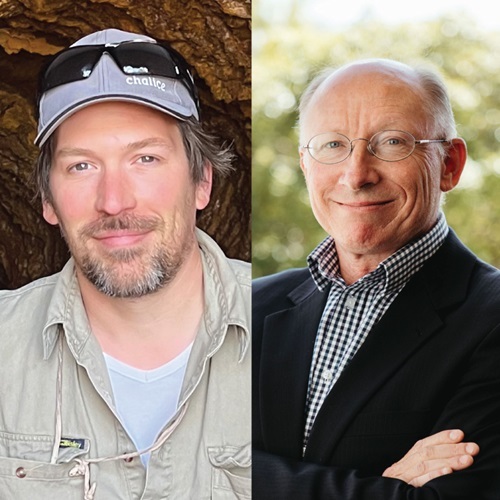
.
The Julimar discovery is an extraordinary development given how close the nickel-copper-PGE deposit is to Perth (~70 km), the capital of Western Australia, a well-established mining jurisdictions that has been explored extensively.
Previous explorers were blind to the deposit because it underlies extensive regolith cover that obscures the region's geology. But when the Chalice Mining team of Kevin Frost and Morgan Fréjabise studied publicly available airborne magnetic surveys supported by other regional geoscience datasets, they saw the hallmarks of an ultramafic-mafic intrusive complex hidden beneath the cover. By later applying electromagnetics on the ground and multi-element soil geochemistry, they were able to hone in on the rich deposit of metals now known as the Gonneville deposit.
The Chalice team spent a very modest ~A$50,000 at the project to define a drill-ready target and in early 2020, the maiden drill hole intersected a remarkable 19 metres grading 2.6% nickel, 1.0% copper, 0.14% cobalt, 8.4 grams per tonne (g/t) palladium and 1.1g/t platinum at a shallow depth of about 40 metres. The drill hole uncovered one of the most significant nickel sulphide discoveries in recent global history, and the largest PGE discovery ever in Australia.
The Gonneville deposit is particularly significant because of the range of valuable metals it contains, its scale and its shallow starting depth. Palladium, platinum, nickel, copper and cobalt are all critical to decarbonisation and green technologies. The discovery has established a new mineral province along the western edge of the Yilgarn Craton (the West Yilgarn Province) with over a thousand kilometres of unexplored potential.
In July 2022, Chalice released an updated Mineral Resource Estimate for Gonneville of 350 million tonnes grading 0.58% nickel equivalent (NiEq) or 1.8 g/t palladium equivalent (PdEq), containing 11 million ounces of PGEs and gold, 560 thousand tonnes of nickel, 360 thousand tonnes of copper and 54 thousand tonnes of cobalt. The deposit remains open beyond a depth of ~700m and open to the north along strike, which is quite remarkable when considering over 275km of drilling has been completed to date.
2022 Rio Tinto Exploration
For the 2017 discovery of the Winu copper-gold deposit in the Paterson Province of Western Australia.
A modern theme of mineral exploration is that the next generation of mines will be found by geoscientists who can effectively explore for mineralization under a cover of rocks or sediments. In late 2017, the Rio Tinto exploration team did just that, intersecting significant copper-gold mineralization on the first pass of the Winu property. By mid-2020, Rio Tinto had established an inferred resource of 503 million tonnes grading 0.45% copper equivalent for Winu. Rio Tinto continues to actively engage with the Traditional Owners at Winu and there has been progress towards securing consent to the Project Agreement in advance of submitting the necessary environmental and regulatory approvals.
The Paterson Province of Western Australia is gold country, but geologists Helke Dalstra and Jennifer Maguire and exploration manager Mawson Croaker estimated deep-seated porphyry deposits could be associated with the area’s buried granites. On the basis of structural and stratigraphic setting, proximity to a granitoid and the aeromagnetic character of the district, they identified several targets. When they followed up with airborne geophysical surveys, they found a shallow EM conductor coincident with one of their targets.
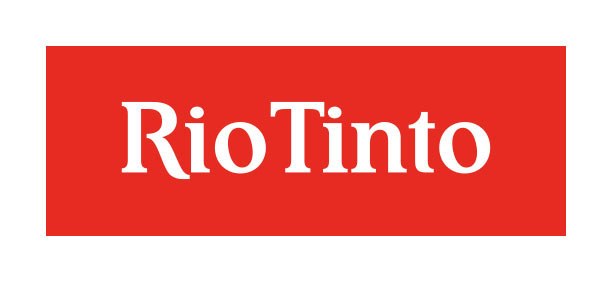
Then came the hard part: accessing the region for drilling. Battling lengthy travel times to the remote area and temperatures exceeding 45°C, the team set up a reverse circulation drill to test the target under a cover of younger sediments. Rio Tinto discovered near-surface copper-gold mineralization in the first hole.
Subsequent drilling under inhospitable conditions including wildfires and cyclones expanded the mineralization, enough to support the development of an open pit mine. The Winu deposit remains open at depth and along strike and Rio Tinto continues to find new zones of mineralization on the large land package, suggesting there may be more to come.
2021 K92 Mining
For the 2017 discovery of the Kora North deposit at the Kainantu mine in Papua New Guinea.
When K92 Mining acquired the Kainantu gold mine in Papua New Guinea from Barrick Gold in 2015, the operation had been mothballed for several years. By questioning the geological model and acting on the reinterpretation, the K92 exploration team transformed the previously struggling mine into a highly profitable and rapidly expanding gold producer.
The breakthrough came in 2017, when K92 tested the theory that two of the mine’s deposits, Kora and Eutompi, were in fact the same deposit. The team modified the development design to access the untested area 500 metres to the north of Kora and 400 metres below Eutompi. The first drill hole intersected 5.4 metres grading 11.68 grams per tonne gold and 1.33% copper about 500 metres north of the Kora deposit.
Since then, the combined Kora North, Kora and Eutompi measured, indicated and inferred resource has grown to almost 5 million ounces AuEq at a discovery cost of less than US$5 per ounce. The exceptional characteristics of the Kora North discovery have allowed Kainantu to operate at head grade of more than 18 grams gold per tonne, placing the mine among the highest-grade operators in the world. An operation that was struggling to achieve 50,000 ounces annual production is now on track to produce more than 300,000 ounces gold per year upon completion of its Stage 3 expansion, due to come on line by late 2023.
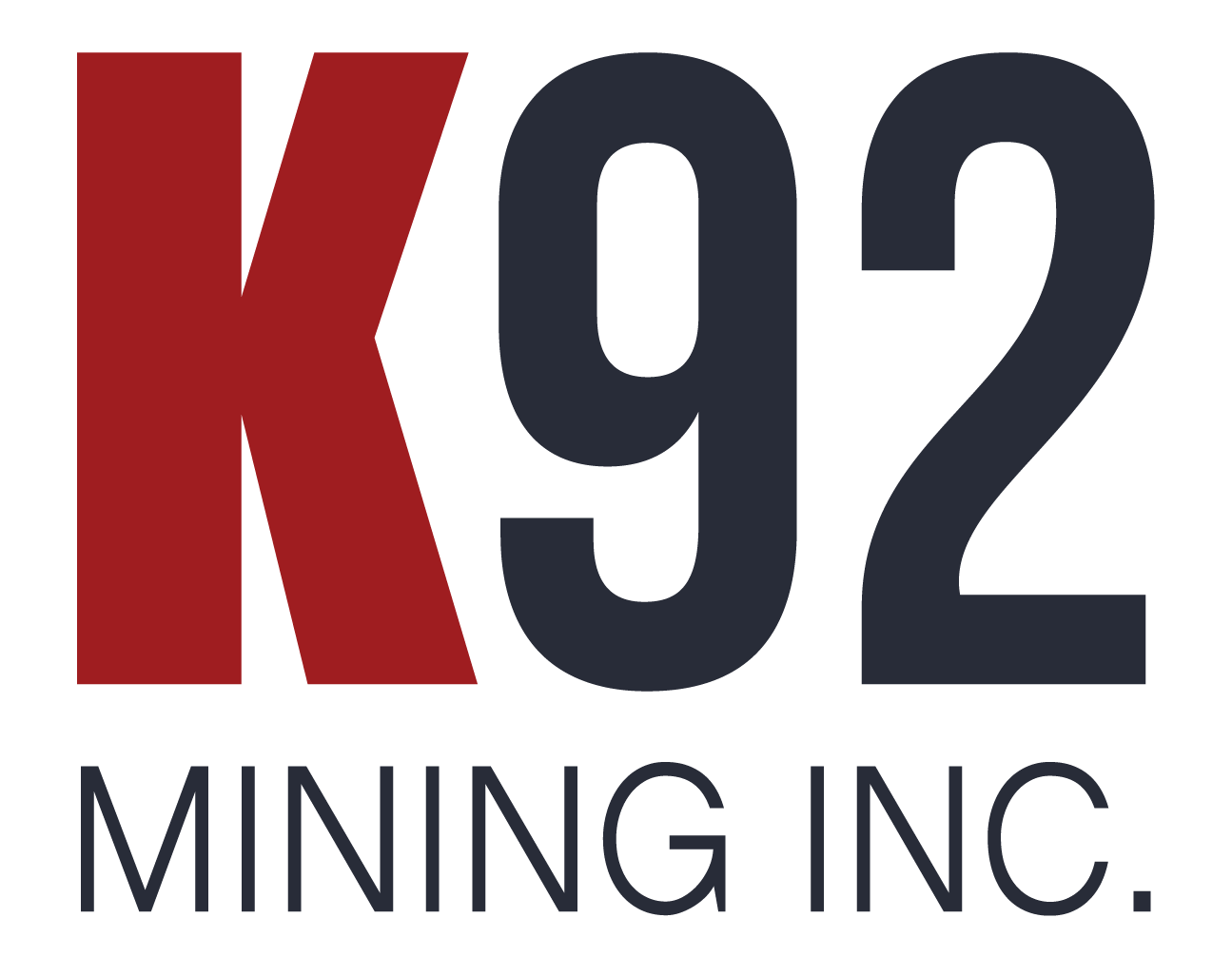
In September 2020, K92 completed the commissioning of a process plant expansion, doubling throughput to 400,000 tonnes per year and increasing annual production to 120,000 ounces. The next phase of expansion will more than double throughput again, to one million tonnes per year.
A preliminary economic assessment (PEA) calls for production of 318,000 ounces AuEq annually at all-in sustaining costs of US$489 per AuEq beginning in 2023 and running until 2033. At a gold price of US$1,500 per ounce, the after-tax NPV is US$1.5 billion.
In addition, there are several high priority targets close to current mining operations at Kainantu that promise to rapidly boost existing resources through both underground and surface drilling.
2020 Firuz Alizade and the Lidya-Hod Maden Exploration Team
For the 2015 discovery of the Hod Maden gold-copper deposit in eastern Turkey.
The gold-copper potential of the Hod Maden property in northeastern Turkey was recognized before Lidya Madencilik arrived on the scene. But it wasn't until prolific mine finder Firuz Alizade took an interest in the project that drilling proceeded. The discovery of a 103-metre intersection of massive sulphide mineralization, grading 9.0 grams per tonne gold and 2.2% copper, including 33.4 metres grading 18.3 grams per tonne gold and 3.3% copper, was made in 2015. Under Firuz's leadership, the Hod Maden project progressed from discovery to pre-feasibility in 40 months.
The study envisions an underground mine with an 11-year life processing 900,000 tonnes per year. Capital costs are estimated at $272 million and all-in sustaining costs at $374 per ounce for an extraordinary 50% internal rate of return.

2019 Cardinal Resources Limited, Namdini Gold Project
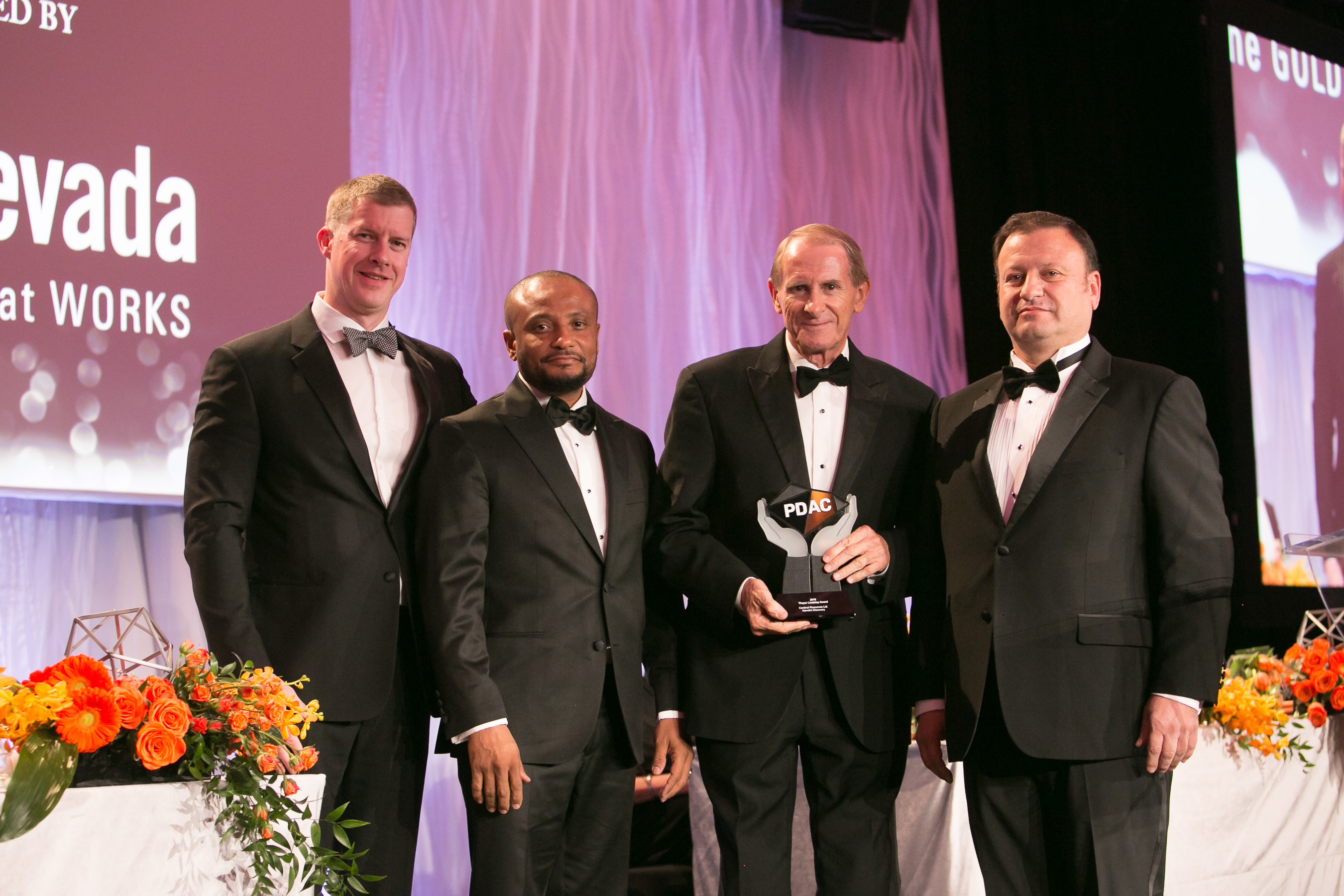
The Nangodi greenstone belt in northeastern Ghana was largely unexplored when Cardinal Resources, led by Archie Koimtsidis, decided to have a look. The Perth-based company optioned the Namdini project within the belt in mid-2014 and immediately launched a small reverse circulation drilling program.
A 2018 preliminary feasibility study (PFS) indicates probable reserves of 4.76 million ounces of gold in 130 million tonnes grading 1.14 grams per tonne gold, plus another 6.5 million ounces of indicated resources. The deposit would support an open pit operation producing 361,000 ounces per year for 14 years at an all-in sustaining cost of US$769 per oz. Namdini boasts an NPV of US$586 million and IRR of 38%, both after tax.
Today, Namdini is considered one of the most significant gold discoveries in West Africa so far this century.
2018 Don Taylor, Arizona Mining Inc.
For the 2014 discovery of the Taylor lead-zinc-silver deposit in Arizona, United States.
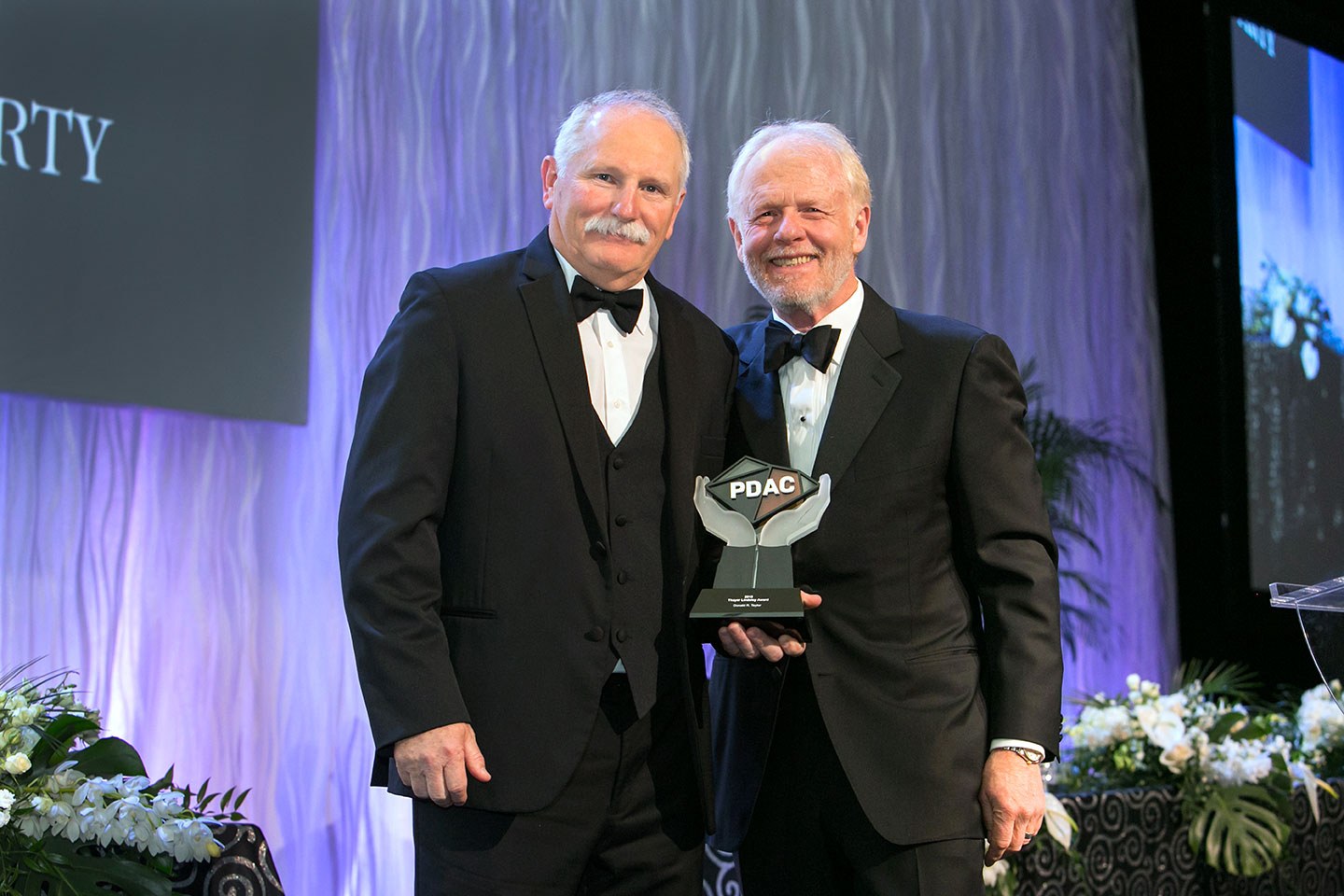
When geologist Don Taylor joined Arizona Mining (then Wildcat Silver) in 2010 his main task was to move the company’s silver-manganese project in southern Arizona through advanced exploration to development. The surface oxide deposit posed a metallurgical challenge and Don was eager to test the potential for sulphide mineralization at depth.
Don compiled the historical exploration data and flew an airborne survey in 2011. Using this information to develop a new geological model, he launched a drilling campaign down dip of the silver-manganese oxide zone. In 2014 Arizona Mining discovered the Taylor deposit, a carbonate replacement deposit containing lead, zinc and silver sulphide mineralization in altered limestone.
By early 2016, Arizona released a maiden resource of 39.4 million inferred tonnes grading 11% zinc equivalent based on 25 holes. In 2017 the preliminary economic assessment confirmed Taylor as a world-class base metal deposit with further potential to grow. Based on the conservative resource estimate of 61 million tonnes of ore, the project has a net present value of US$1.26 billion. The mine is expected to begin production in 2020.
2017 Peter Megaw, MAG Silver Corp
For his blind discovery of the Juanicipio silver deposit, containing more than 200 million ounces silver.
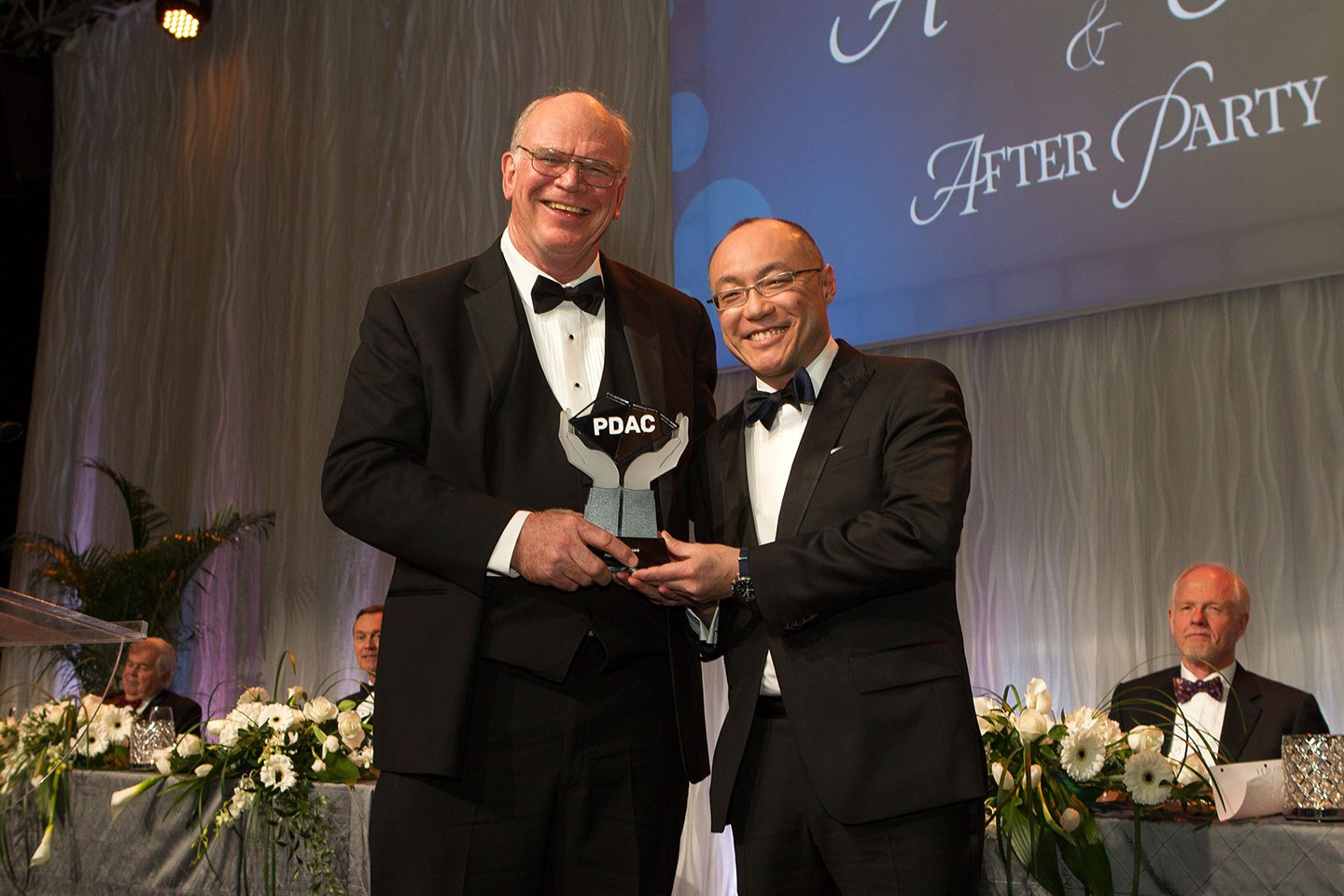
The 2017 Thayer Lindsley Award goes to Peter Megaw, Professional Geologist and co-founder of MAG Silver Corp, for his blind discovery of the Juanicipio silver deposit, containing more than 200 million ounces silver. The discovery resulted from an understanding of complex structural controls and mineral zoning patterns of epithermal vein systems found in the region.
The Juanicipio silver deposit was discovered in the 500 kilometre Fresnillo epithermal belt in Mexico, which extends from the Guanajuato district (1.3 billion ounces silver) through Zacatecas (1.0 billion oz Ag) and Fresnillo (1.2 billion ounces silver) to the San Martin-Sabinas district (800 million ounces silver). The belt overlies a regional structural zone and is the most productive silver deposit trend in the world, yielding more than 10% of the silver mined in human history.
Peter’s Juanicipio discovery renewed exploration in the area and led to new veins being identified with a further 600 million ounces defined and successfully development into mines. Juanacipio mine itself should start production in 2018.
2016 Cukaru Peki Discovery Team, Reservoir Minerals Inc. & Freeport McMoRan Inc.
For the discovery of high-grade copper-gold deposits in Serbia that may prompt explorers to look for a new class of mineral deposit.

The Cukaru Peki discovery team from Reservoir Minerals Inc. and Freeport-McMoRan Inc. are the recipients of this year’s Thayer Lindsley Award for the discovery of high-grade copper-gold deposits in Serbia that may prompt explorers to look for a new class of mineral deposit.
In July 2012, the joint venture announced the discovery of a copper-gold deposit in the heart of Serbia’s Bor mining camp, which has been operating for more than 100 years.
In January 2014, the team reported inferred resources at Cukaru Peki, compliant with NI 43-101, of 65.3 million tonnes grading 2.6% copper and 1.5 g/t gold. This included 4.5 million tonnes grading 11.2% copper and 7.4 g/t of gold. Some observers speculate that the deposit could contain over a billion tonnes of mineralization grading over 1.2% copper equivalent.
The mineralization at Cukaru Peki does not fit well with porphyry copper, VMS, or epithermal models. It could result in the establishment of a new geological model, providing targets for future explorers to seek.
2015 Kamoa Discovery Team, Ivanhoe Mines
For the team’s discovery of the Kamoa Copper Deposit, Central African Copperbelt, Democratic Republic of Congo (DRC).
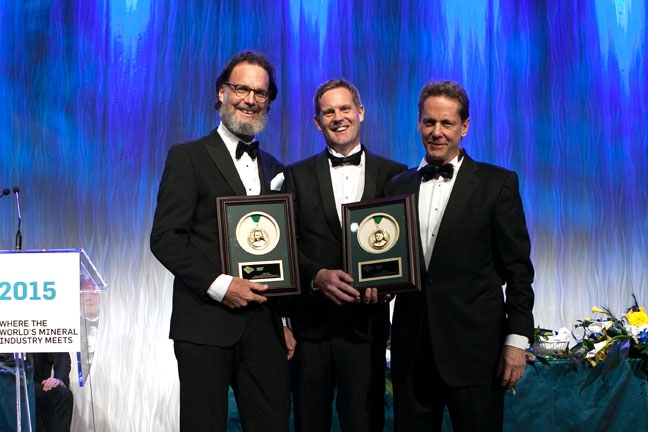
The Ivanhoe Mines Kamoa Discovery Team is the recipient of this year’s Thayer Lindsley Award for international mineral discoveries. The team is receiving the award for discovery of the Kamoa Copper Deposit in the Democratic Republic of Congo (DRC).
The deposit is located in the Central African Copperbelt on the western edge of the Katangan basin, approximately 25 km west of the Kolwezi district. The deposit is a new and blind grassroots discovery in an area previously written off by other explorers because of its lack of Mines Series rocks, as well as of surface mineralization.
In January 2013, a new independent mineral resource estimate was prepared for the Kamoa Copper Discovery by AMEC E&C Services of Reno, Nevada. The new estimate ranks Kamoa as Africa's largest high-grade copper discovery and the world's largest undeveloped high-grade copper discovery.
As of January 2013, Ivanhoe Mines had discovered indicated mineral resources of 739 million tonnes grading 2.67% copper, containing 43.5 billion pounds of copper, and inferred mineral resources of 227 million tonnes grading 1.96% copper, containing 9.8 billion pounds of copper. A 1% copper cut-off grade and a minimum vertical mining thickness of three metres was applied in each classification.
The Kamoa Discovery Team was led by Dr. David Broughton, Executive Vice President of Exploration at Ivanhoe Mines, and Thomas Rogers, Director of Exploration, African Mining Consultants. In addition, the team included David Edwards, Geology Manager, Kamoa Project, Ivanhoe Mines; Dr. Douglas Haynes, Director, Douglas Haynes Discovery Pty. Ltd.; Dr. Ross McGowan, formerly of African Mining Consultants and currently CEO, Armada Exploration Ltd.; and Steven McMullan, P. Geo., Site Manager at Ivanhoe Mines’ Kipushi Project, and Principal Geoscientist, African Mining Consultants.
2014 Goldrush Discovery Team, Barrick Gold Corporation
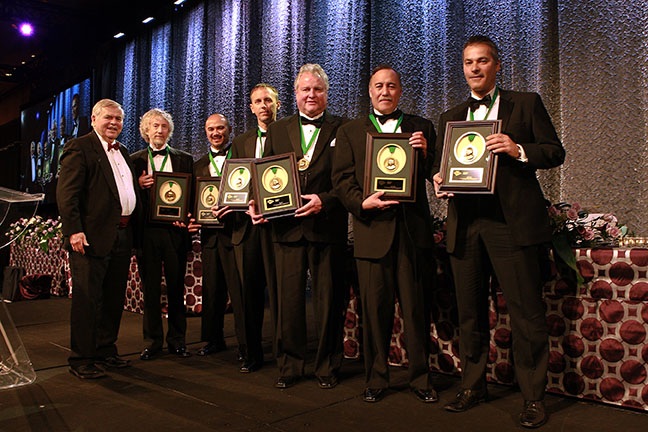
In September 2011, Barrick announced its Goldrush discovery in Cortez District, Nevada.
The deposit, located in the eastern portion of the Cortez mining district, 6 km southeast of Cortex Hills, potentially represents the largest Carlin-style discovery in Nevada since Cortez Hills over 10 years ago.
The Cortez District has had a long discovery history and is challenged by concealed mineralization. Using an integrated exploration program based on understanding of deposit model and local stratigraphy, the discovery team used improved geologic interpretations and exploration techniques to discover and delineate the concealed deposit.
The Goldrush deposit has the third highest grade and is one of just +10 million ounce gold discoveries since 2001. Through aggressive exploration, the initial resource discovered at Goldrush has grown from 3.5 million to 14.1 million ounces, and now has a strike length of +7 km. A scoping study of the site has recently been completed and a prefeasibility study is underway while exploration work and technical studies continue. A number of development options are currently being considered, including open pit mining, underground mining, or a combination of both.
The 25 person Goldrush Discovery Team was led by Rob Krcmarov, Senior Vice President, Global Exploration (Toronto), François Robert, Vice President and Chief Geologist (Toronto), Ed Cope, Vice President, Exploration North America (Elko, Nevada), Kevin Creel (Chief Exploration Geologist), Mark Bradley (District Geologist) and Alejandro Ly (Project Geologist). The team’s knowledge and expertise of Carlin deposits and Nevada geology was instrumental in the discovery of Goldrush.
2013 Daniel G. Wood
For his leadership of exploration teams responsible for numerous discoveries of mineral deposits in a variety of geologic settings, with an aggregate gross value in excess of $100 billion.

Daniel G. Wood is the recipient of this year’s Thayer Lindsley Award for international mineral discoveries.
Daniel is receiving the award for his leadership of exploration teams responsible for numerous discoveries of mineral deposits in a variety of geologic settings, with an aggregate gross value in excess of $100 billion. Daniel retired from mineral exploration in late 2008 after 24 years with BHP and almost 18 years with Newcrest Mining Limited, leading teams exploring for a range of mineral resources in Australia, SE Asia/SW Pacific and the Americas.
Their efforts produced coal, gold, gold-copper and copper-molybdenum discoveries in Australia, Indonesia and Peru, including the large Cadia gold-copper deposits in NSW.
2012 David Giles
David Giles for heading the Peñoles and Fresnillo plc exploration teams that have seen considerable success in the number of their new economic gold and silver deposit finds in Mexico and Latin America.
Most notable of these was the discovery of a new vein system in the Fresnillo district, leading to the opening of the Saucito mine in 2011 and consolidating Fresnillo as the largest silver district in the world.
Other principal finds included the San Julian silver-gold and Orisyvo gold deposits in Mexico, both now under development, and the discovery and geological reinterpretation of the Francisco I. Madero SEDEX deposit that led to the opening of an important new mine in 2002.
Past Recipients
| 2011 | Anglo American Chilean exploration team |
| 2010 | Perry Durning and Bud Hillemeyer |
| 2009 | Richard Garnett and NovaGold Resources Inc. |
| 2008 | Aurelian Resources Inc. |
| 2007 | Northern Dynasty Minerals Ltd. |
| 2006 | Larry J. Buchanan, Apex Silver Mines Corporation |
| 2005 | Cortez Geology Team, Placer Dome Inc. |
| 2004 | Ivanhoe Mines Ltd. geologists Douglas J. Kirwin, Charles N. Forster, and D. Garamjav |
Viola R. MacMillan Award
2025 John Robins
For lifetime leadership and significant contributions to the mining and exploration industry.
John Robins was selected for the 2025 Viola R. MacMillan Award for his lifetime leadership and significant contributions to the mining and exploration industry. Over his 35-year career, John has been instrumental in multiple mineral discoveries and the creation of highly successful companies, including Kaminak Gold, Northern Empire, and Stornoway Diamond. His work has driven over $3 billion in mergers and acquisitions, alongside more than $1 billion in mineral exploration expenditures across various regions, such as Canada, Latin America, and Australia.
A highly respected entrepreneur and geologist, John has consistently demonstrated an exceptional ability to identify opportunities, assemble expert teams, and attract the necessary capital to advance exploration projects. His notable successes include the sales of Great Bear Resources to Kinross for $1.8 billion, Kaminak Gold to Goldcorp for over $500 million, and Great Bear Royalties Corp. to Royal Gold Inc. for $200 million.
John’s efforts have had a lasting impact on the industry through the Discovery Group, an alliance of companies that he founded and continues to lead.

The group has been pivotal in advancing numerous mineral exploration projects globally, covering a range of commodities, from gold to diamonds and uranium. His strong leadership, ethical practice, and commitment to fostering innovation have earned him recognition as one of the most influential figures in the junior mining sector, making him a deserving recipient of this prestigious award.
2024 John McConnell and the Victoria Gold Team
For innovative financing of the Eagle Gold Mine development and production in Yukon.
John McConnell and the Victoria Gold Team surmounted substantial hurdles to fund the Eagle Gold Mine. Despite the challenges of a global downturn in precious metals equities in 2018 and the severe repercussions of the COVID-19 pandemic, they secured the necessary financing.
Despite facing skepticism from some shareholders about the project's feasibility and the team's capabilities, McConnell and Victoria Gold Corp. managed to secure over $500 million for its construction and development. They achieved this by creating royalties, collaborating with private equity firms, and accessing the equity markets, attracting investors who were aware of the project's critics.
Upon the mine's completion, the team adeptly lowered their capital costs. They transitioned from high-cost private loans to conventional bank financing, shifted from private equity to a broader shareholder base, and adeptly managed a strategic investor who initially supported but later departed from the company. Through all the challenges, McConnell and his team stayed resolutely committed to establishing a prosperous and safe mine, benefiting all stakeholders in the Yukon and beyond.
2023 Alamos Gold’s John A. McCluskey
For showing leadership and a willingness to take risks in the acquisition and development of the Island Gold mine in Northern Ontario.
Based on a thorough analysis of geological data, President and CEO John McCluskey and the senior management team of Alamos Gold were confident the Island Gold deposit owned by Richmont Mines was larger and richer than the published mineral reserves and resources would suggest. However, shareholders balked at the acquisition price paid with Alamos’ share price plummeting by 17% on the date of announcement of the acquisition in September 2017.
But McCluskey and the Alamos team were right to bet on the exploration potential of the Island Gold. Since acquisition, Island Gold has grown dramatically: reserves and resources have almost tripled to 5.1 million ounces from 1.8 million ounces in 2017; the mine life has more than doubled to 18 years at higher production rates; and the exploration potential has expanded through the acquisition of a substantial land package surrounding the mine.

By taking a calculated risk, McCluskey realized his 20-year dream of building a leading intermediate gold producer. Five years after the transaction, Island Gold is valued at nearly three times its acquisition price and the operation continues to grow through a self-financed expansion that will transform Island Gold into one of the largest and most profitable gold mines in Canada. Once unappreciated and misunderstood, the mine and its expansion are helping support and sustain local communities in Northern Ontario.
The Island Gold acquisition and development is the latest in a string of strategically driven acquisitions for Alamos, from the Mulatos mine in Mexico in 2003 to the Young-Davidson operation in northern Ontario in 2015. Island Gold may well turn out to be the company's best acquisition reflecting McCluskey’s vision, strategy and perseverance.
2022 Lundin Gold Inc.
For financing and developing Fruta del Norte, one of the first large scale mining projects in Ecuador.
In 2013 Ecuador was in the midst of drafting a new mining code to encourage investment in the sector. But it was too late for Kinross Gold, which had spent $1.2 billion in 2008 to acquire the Fruta del Norte deposit and five years trying to develop it. The company walked away from the 10-million ounce gold-silver resource when negotiations with the Ecuadorian government failed.
The Lundin family saw an opportunity. In late 2014 a Lundin company took Fruta del Norte off Kinross’s hands in a cash-and-share deal worth US$240 million. After detailed talks with the Ecuadorian government, Lundin Gold reached an agreement to enshrine legal and tax assurances for the mine and pave the way for project financing. The negotiations helped shape Ecuador’s new mining law.

The next challenge was to raise the $1 billion required to construct an underground mine in a jurisdiction that had little experience with large-scale mine projects. Lundin used a creative combination of debt, streaming and equity financing to achieve this goal, including a $250 million equity investment by Australia’s Newcrest Mining.
The company was successful in fundraising partly because of an ability to mitigate environmental and social impacts and win community support for the project in an impoverished region of southeast Ecuador.
Fruta del Note reached commercial production in February 2020 and is expected to produce at least 4.7 million ounces of gold over a 14 year mine life.
2021 Mark O'Dea
For building and financing several international mining companies, taking them from exploration and discovery to development and operations.
Since winning second place in the Goldcorp Challenge in 2001, Mark O’Dea has built and financed several mining companies with worldwide operations.
Great projects in good places. This statement acts as Mark’s keel and compass to building a portfolio of quality mining companies that have crystallized C$3 billion in shareholder value.
Mark launched his first company, Fronteer Gold in 2001. A decade later, at the top of the last mining cycle, the young geologist sold Fronteer and its flagship Long Canyon gold project in Nevada to Newmont Mining for US$2.3 billion. He had vended Fronteer’s uranium assets in Labrador a year earlier for C$260 million.
Mark then scaled up his business platform by founding Oxygen Capital, to structure, finance, build and manage mining companies.
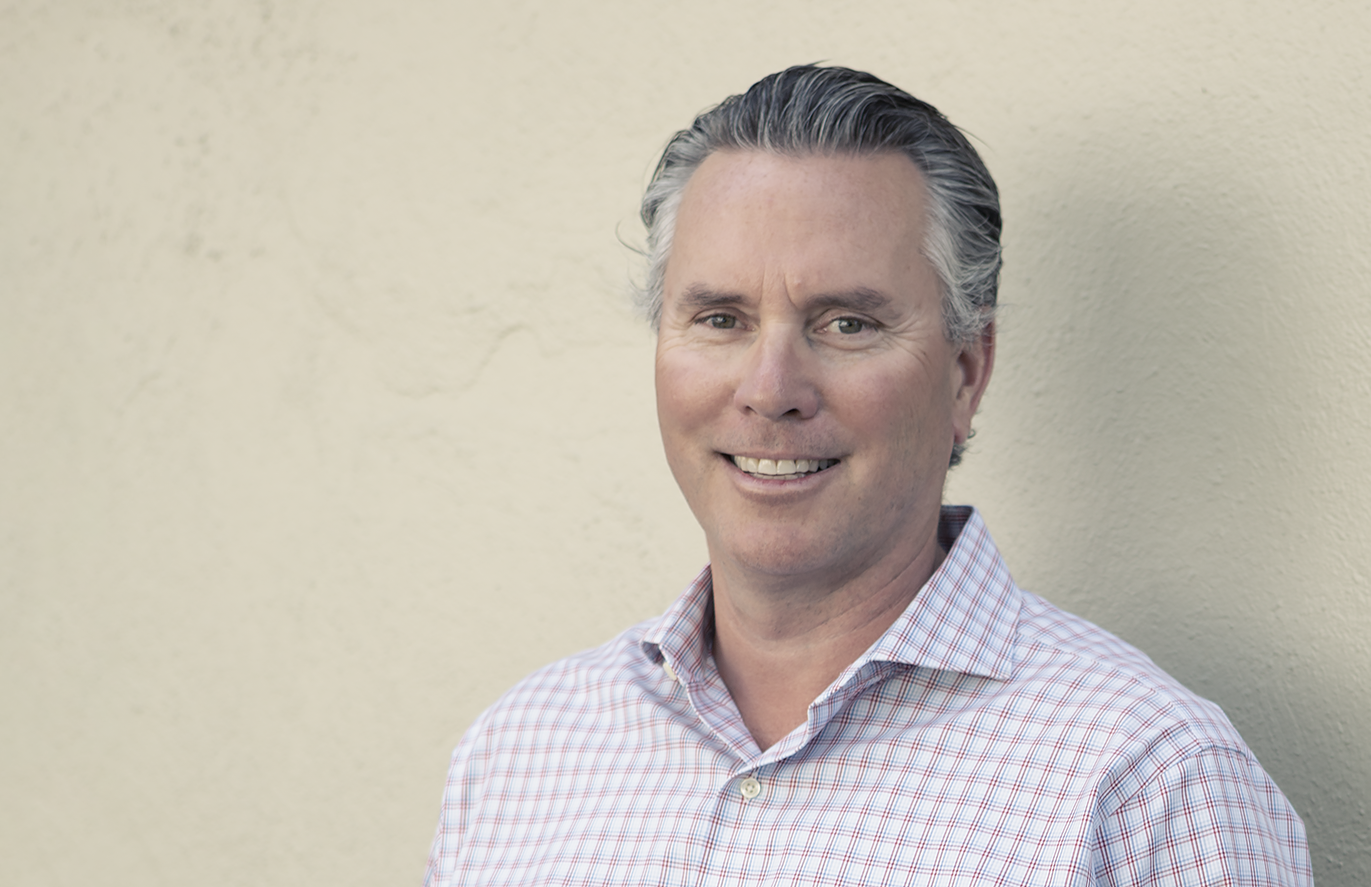
True Gold Mining is just one example of this, putting the Karma gold mine in Burkina Faso into production. With traditional bank financing unavailable for gold projects in West Africa, Mark tapped into existing corporate relationships and private equity to raise C$33.5 million at a low point in the mining cycle. He and his team were later able to convince Franco-Nevada and Sandstorm to provide a syndicated gold loan and streaming package worth C$120 million, the first partnership of its kind for a single asset developer. Endeavour Mining purchased True Gold for C$240 million in 2016.
Pure Gold Mining is another example. Securing support from large corporates and mining titans, the PureGold Mine in Red Lake Ontario is scheduled to complete its first gold pour in December 2020, becoming Canada’s newest high-grade gold mine.
Mark has guided his companies by an ethos developed at the outset of his career: The Science of Discovery. Every company and project he worked on was science-driven, identified undervalued assets, defined team culture, while simultaneously leveraging existing and new financing avenues to advance projects to commercial status.
Mark has shown an intrinsic knack for bringing together and motivating top-tier talent, allowing him to build teams bound for success. Creativity and resourcefulness are some of the core traits he seeks in every team member, and he attributes his success to those he has worked with over the past 20 years.
Today, Mark remains actively involved with his Oxygen portfolio companies and continues to be committed to a strong mining industry that balances responsible environmental stewardship, community benefits and sound financial returns.
2020 Touquoy/Moose River Mine Development Team – Wally Bucknell, Steven Dean, Ronald Hawkes, Bruce Hudgins, John Wightman
For developing the Touquoy open pit mine and consolidating other gold deposits near Moose River in Nova Scotia after the gold potential of the area had been unrecognized for decades.
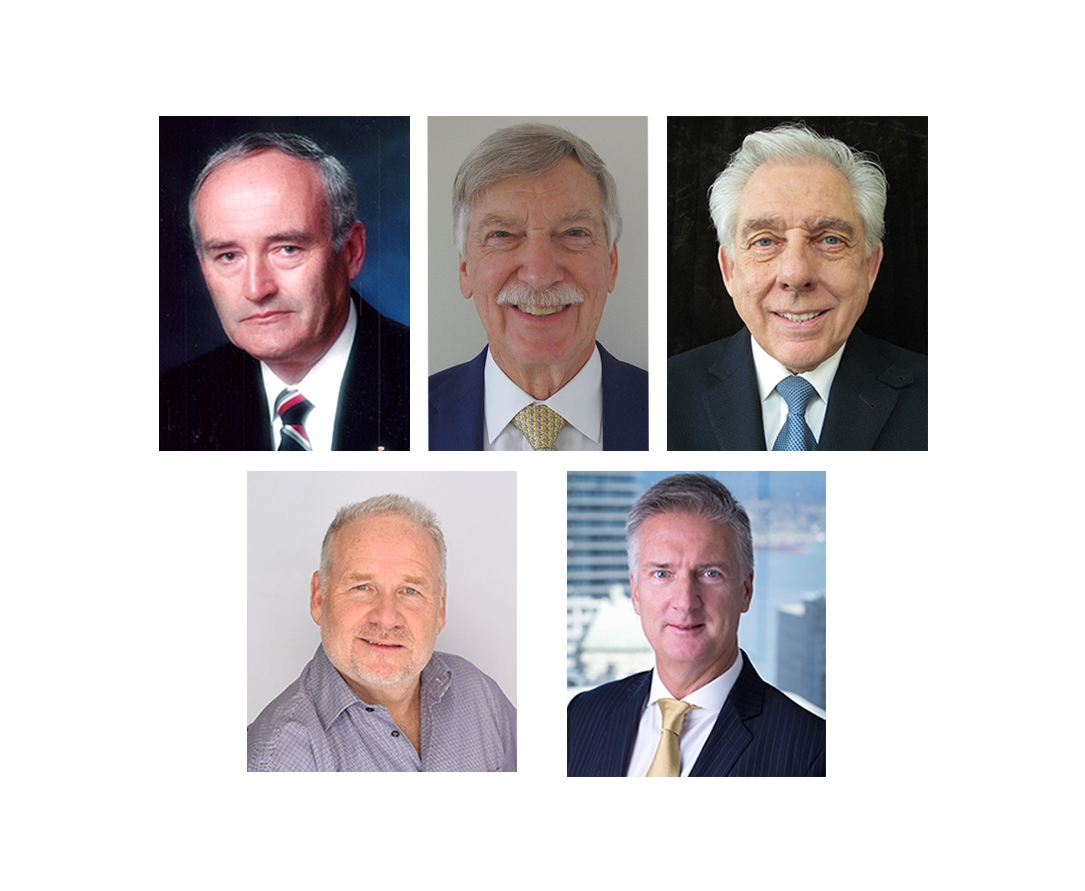
Until the Touqouy/Moose River Exploration and Development Team recognized the potential of the disseminated mineralization surrounding the high-grade quartz veins, the exploration industry had generally avoided the Meguma Terrane.
The success of Atlantic Gold, through the efforts of Bruce Hudgins, John Wightman, Ronald Hawkes, Wally Bucknell and Steven Dean, has revitalized gold exploration in the area. The increased interest has also rekindled exploration in other parts of the province resulting in discoveries of epithermal gold mineralization in previously unrecognized areas.
The Touquoy mine reached commercial production in March 2018. In July 2019, St Barbara Limited purchased Atlantic Gold for $722 million. The Australian gold miner expects to produce 95,000-105,000 ounces of gold in fiscal 2020, at a cost of less than US$955 per ounce.
2019 Nemaska Lithium Inc.
For demonstrating leadership in transforming a grassroots exploration property into a vertically integrated lithium operation in Quebec that will provide a new source of supply for the surging lithium battery market.
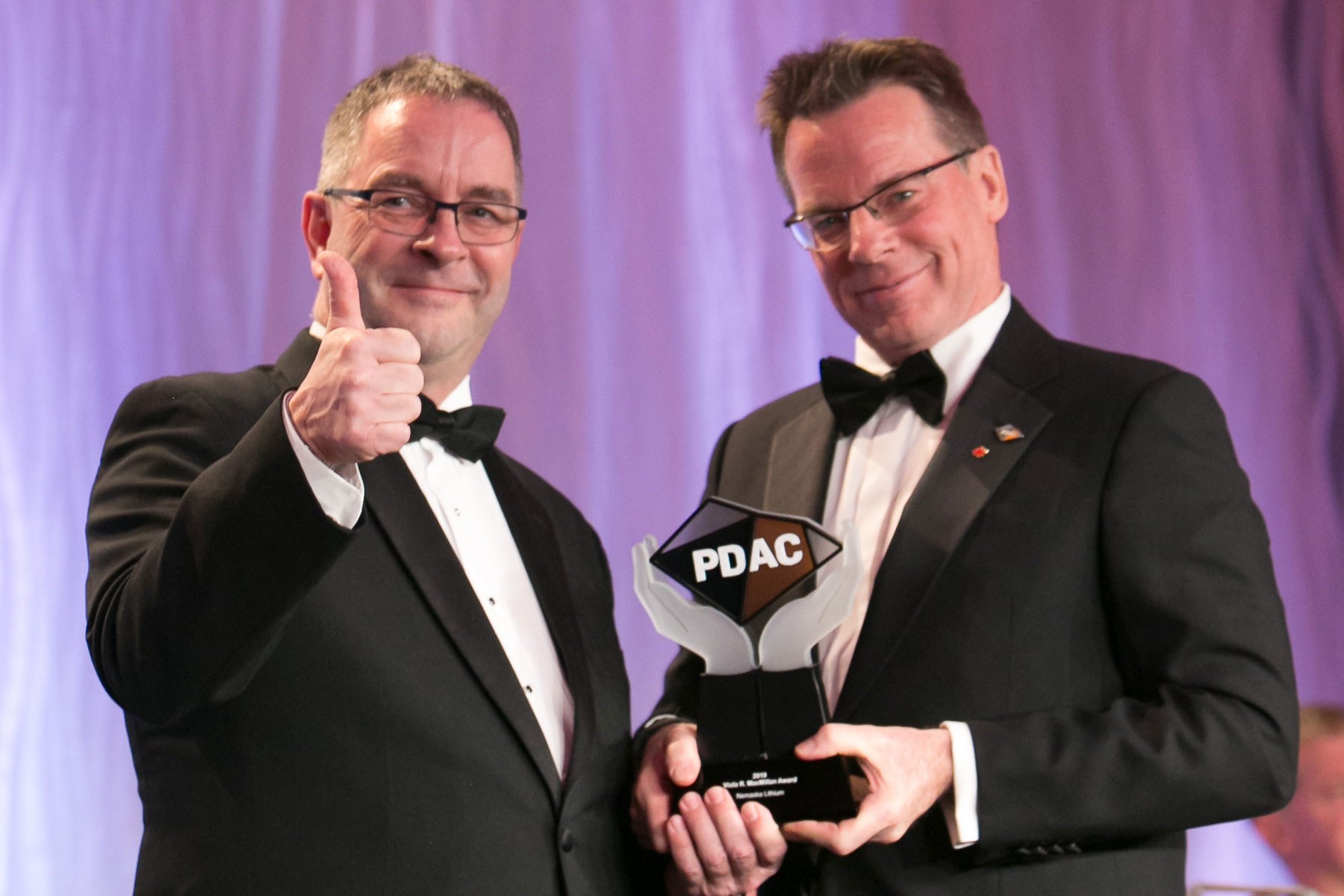
Nemaska is well underway on construction of a vertically integrated lithium operation, having raised $1.1 billion through a combination of a bond offering ($455 million) a streaming agreement ($195 million) and a $454 million share issue partly taken up by the Quebec government.
The Whabouchi property is located in northwestern Quebec, about 300 km north of Chibougamau near the Cree community of Namascau. The mine is expected to produce 213,000 tonnes of 6.25% Li2O concentrate annually that will be shipped to and processed at an electrochemical plant in Shawinigan to produce high-purity lithium hydroxide and lithium carbonate.
The Whabouchi mine is expected to begin production in the second half of 2019, and the Shawinigan plant will come online a year later. Nemaska has signed an agreement with the Cree covering training, employment and revenue sharing and Nemascau has a significant equity stake in the junior.
Based on a 2018 feasibility study, Whabouchi has an after-tax NPV of $2.2 billion and an IRR of 56.0%. Reserves of 37 million tonnes grading 1.4% Li2O will support a mine life of 33 years.
2018 IAMGOLD Corporation and Sumitomo Metal Mining Co., Ltd.
For demonstrating leadership in the financing and management of one of Canada’s largest undeveloped gold projects.
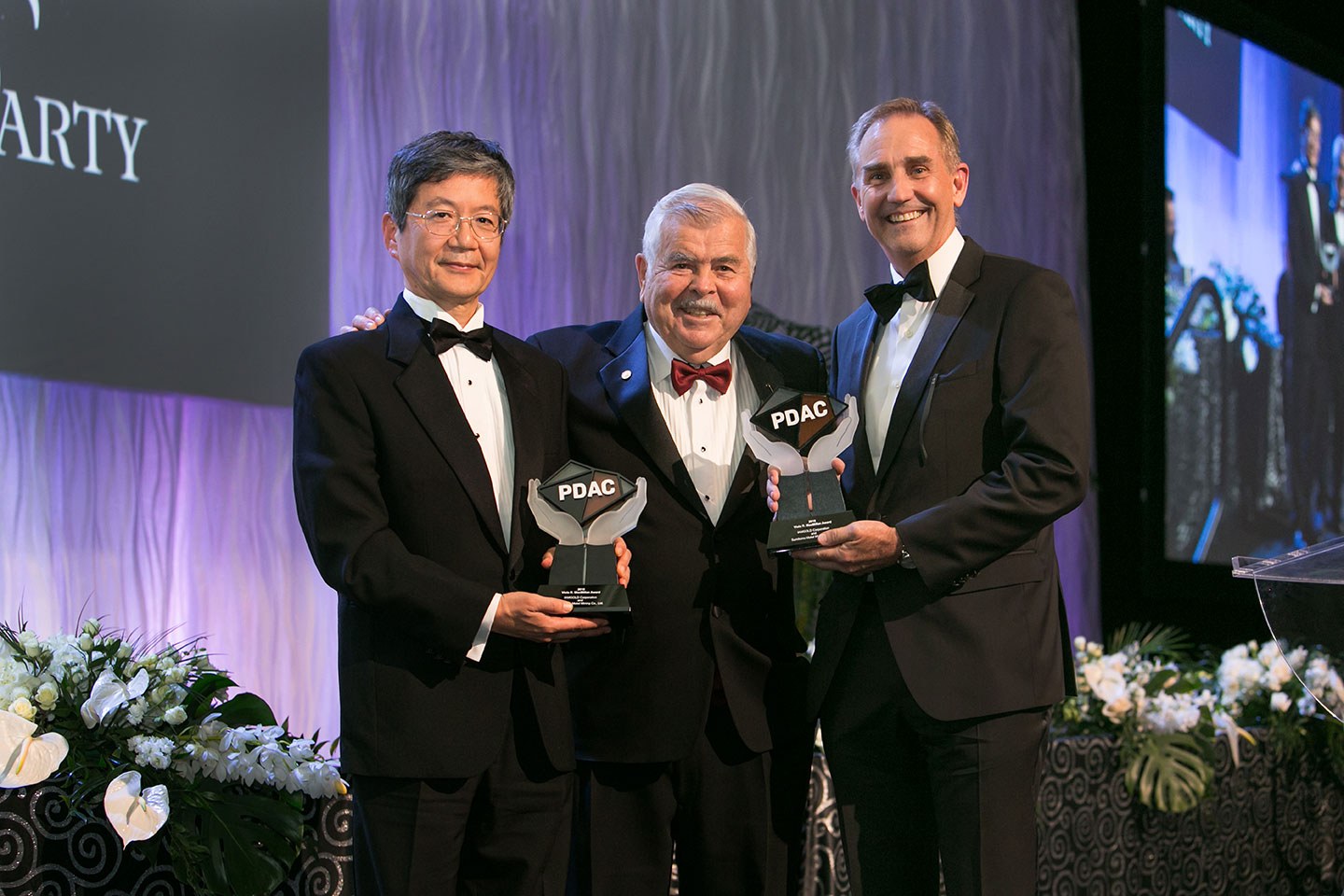
In June 2017 Sumitomo Metal Mining purchased a 30% interest in the Côté Gold project in northeastern Ontario from IAMGOLD for US$195 million. The investment and subsequent 70-30 joint venture agreement allowed IAMGOLD to proceed with the development of a major gold project.
Côté Gold is the first new gold mine developed in northern Ontario in over five years and is expected to produce an average of 320,000 ounces of gold per year over a 17-year life span when it enters production in 2021. The project offers an estimated 19 years of employment through construction, operation and closure.
With proven and probable reserves of 5.9 million ounces, the project has an after-tax net asset value of US$703 million, an internal rate of return of 14% and a payback period of 4.5 years. The mine will become one of IAMGOLD's most productive assets and boost Sumitomo’s annual gold output to nearly 18 tonnes from 15 tonnes.
2017 Gahcho Kué Diamond Mine, De Beers Group of Companies and Mountain Province Diamonds
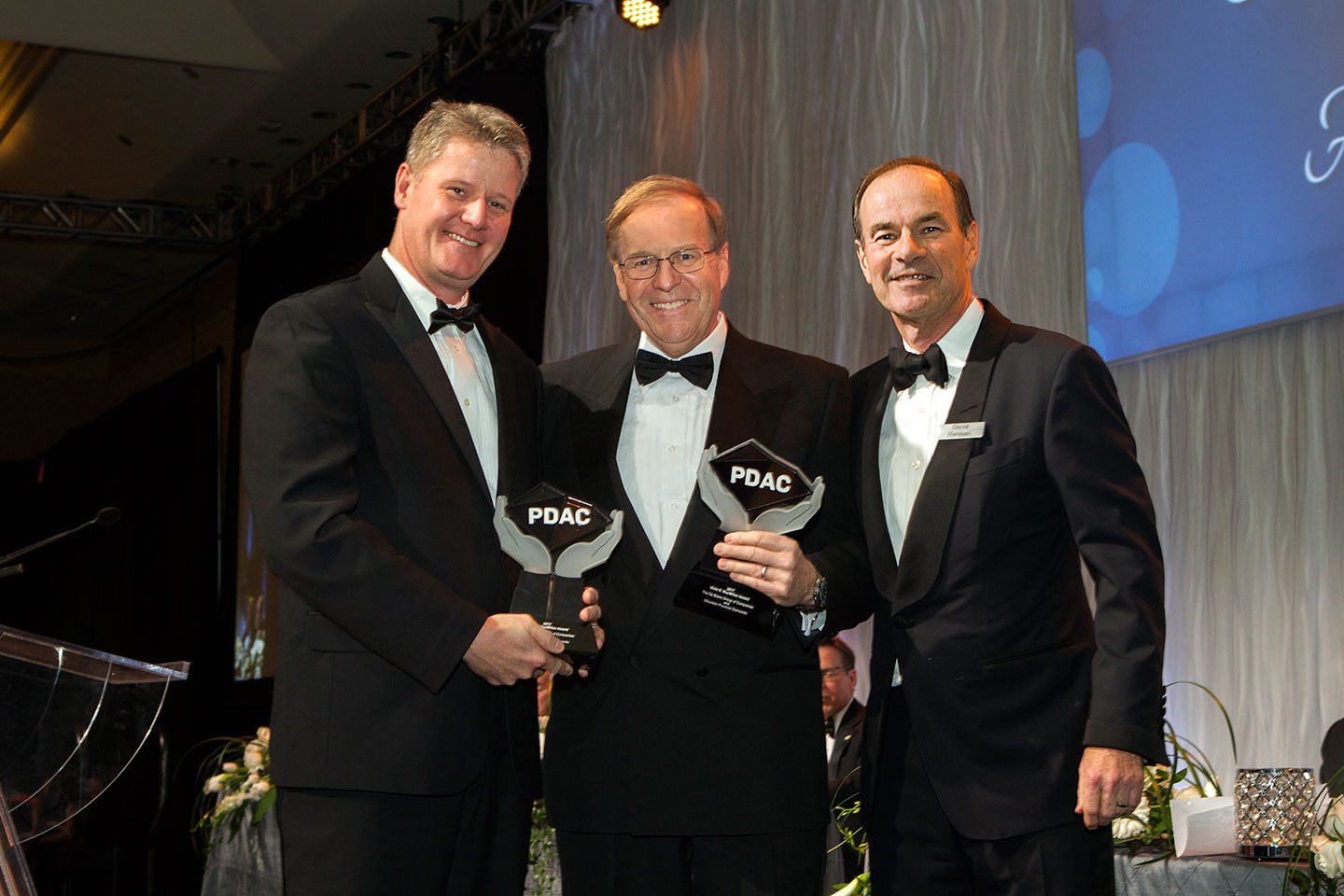
Gahcho Kué Diamond Mine in Canada’s Northwest Territories (NWT) officially opened in September 2016. It is the world’s largest new diamond mine in 13 years and is expected to produce approximately 54 million carats of rough diamonds during its initial 12-year lifecycle. This joint venture between the De Beers Group of Companies (De Beers) and Mountain Province Diamonds (Mountain Province) is the 2017 Viola R. MacMillan Award recipient.
Canada is the world’s third largest diamond producer, and Gahcho Kué is the sixth commercial diamond mine in the country. It will account for 3% of the world's changing diamond market. Gahcho Kué is De Beers largest ever mine outside of southern Africa and is Mountain Province Diamonds’ first ever mine.
The mine employs 530 full-time positions. During its construction between 2006 and 2015, the mine injected $440 million to the NWT economy, and a further $350 million elsewhere in Canada. At October 2016, the workforce at Gahcho Kué was already comprised of 46% NWT-resident employees, 20% self-identified Indigenous employees, and 14% female employees.
2016 Silver Wheaton Corp.
For developing new and innovative business strategies.
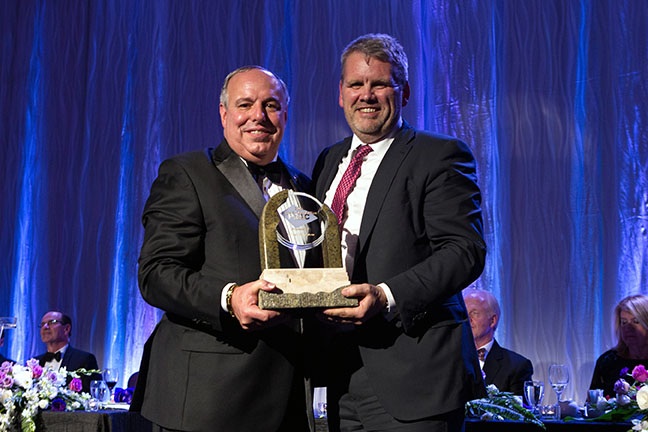
Silver Wheaton Corp. is the recipient of this year’s Viola R. MacMillan Award for developing new and innovative business strategies. Their business strategy portrays characteristics of a metal producer, a royalty owner, and has features of a corporate finance group. This structure allows Silver Wheaton direct ownership of metal in the ground, receipt of that metal upon production, and the ability to sell it to generate cash flow, all the while minimizing corporate overhead costs and maintaining a streamlined management structure. Similar companies have since started to follow this example.
Since 2004, Silver Wheaton has built a strong brand and set an example of how to make their business strategy one of the preferred methods for the junior sector to finance a mine. Creating a metal production stream has provided funds to under-capitalized companies while minimizing shareholder dilution, an important factor in times when share price is depressed due to market conditions.
Silver Wheaton is now positioned as the largest precious metal streaming company in the world.
2015 Matt Manson, Stornoway Diamond Corporation
For leading Stornoway’s team in the continuing development of the company’s Renard Project located in the James Bay region of Québec.
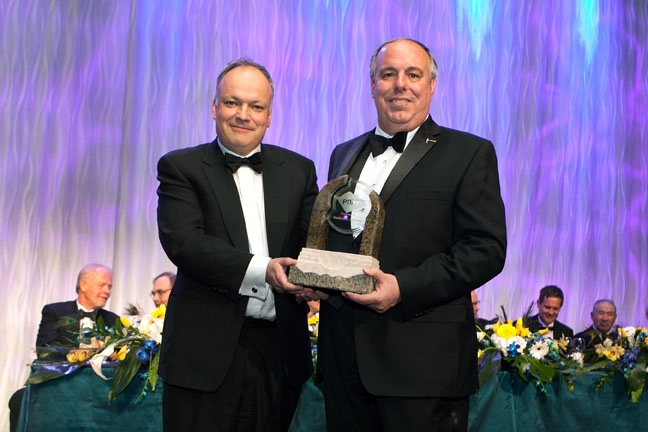
Matt Manson, President and Chief Executive Officer of Stornoway Diamond Corporation, is the recipient of this year’s Viola R. MacMillan Award for company or mine development. He is receiving the award for leading Stornoway’s team in the continuing development of the company’s Renard Project located in the James Bay region of Québec. The team completed its $946 million project financing package this past July, more than 13 years after the project’s initial discovery.
In the early 2000s, Matt, then President and CEO of Contact Diamond Corporation, was looking for growth opportunity and concluded that Ashton Mining of Canada’s 50 per cent interest in the Renard Property was Canada’s best undeveloped diamond asset at the time. He knew that Contact Diamond would not be able to acquire Ashton Mining alone, and approached Stornoway Diamond Corporation to propose a merger, which was completed in September 2006. In April 2011, Stornoway acquired the remaining 50 per cent of the Renard Property from Diaquem, Soquem, and Investissement Quebec.
Matt took the Renard Project through its various phases of development, modifying and adjusting plans to ensure development. Over this period, he has also built up strong relationships with the Québec Government and the Cree Nation and has made them active partners with Stornoway. Most impressively he has put in place the financing necessary to construct the Renard Mine, despite extremely difficult markets.
2014 Capstone Mining Corp.
For demonstrating leadership and management in the successful development of the Minto and Cozamin copper mines and in its acquisition of Pinto Valley Copper Mine, transforming it into an intermediate copper producer.
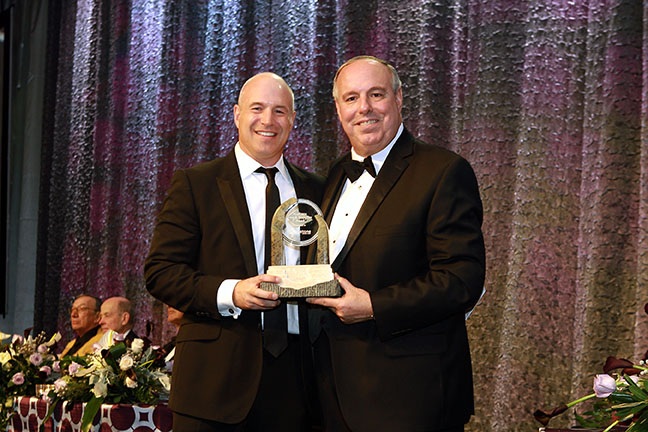
Capstone Resources Corp., a Canadian base metals mining company, headquartered in Vancouver, purchased BHP Billiton’s Pinto Valley copper mining operation in Arizona, USA, in April 2013.
The Pinto Valley mine is the company’s third copper producing mine. Capstone Resources Corp. currently operates Minto Mine, an open pit copper-gold-silver mine in the Yukon, and Cozamin Mine, a copper-silver-zinc-lead underground mine in Zacatecas, Mexico. The annual production of both mines is approximately 85 million pounds of copper.
Located in the Globe-Miami mining district in Arizona, the Pinto Valley site is expected to produce 130 – 150 million pounds of copper in concentrate and approximately 10 million pounds of copper cathode annually, and by-product molybdenum and silver. The site’s estimated cash cost, for the first five years of production, is approximately $1.80 per pound (net of by-product credits).
The Pinto Valley acquisition transformed Capstone Resources Corp. from a mid-tier to an intermediate copper producer. The company’s annual copper production is projected to increase by more than 160%, from 85 M lbs Cu to 235 M lbs Cu, with the new Arizona mine.
The financing structure and purchase price of Pinto Valley allows Capstone Resources Corp. to maintain financial flexibility and retain $135 million cash providing them the necessary financial resources to continue funding development projects and avoid shareholder dilution.
The purchase of Pinto Valley allows Capstone Resources Corp. to further diversify its assets into Arizona, USA, one of the world’s most favourable mining jurisdictions.
2013 New Gold Inc.
For demonstrating leadership in management and excellence in best practices in bringing the New Afton mine to production.
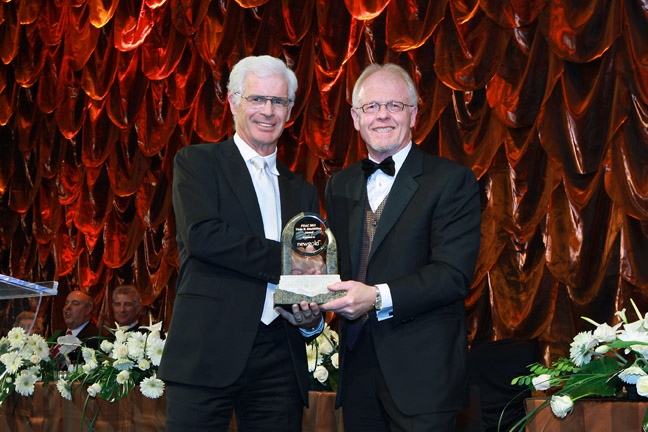
New Gold Inc. is the recipient of this year’s Viola R. MacMillan Award for company or mine development. New Gold is receiving the award for demonstrating leadership in management and excellence in best practices in bringing the New Afton mine to production.
The New Afton copper-gold mine, located in Kamloops, British Columbia, is a large underground copper-gold deposit which is expected to produce, on average, 85,000 ounces of gold and 75 million pounds of copper per year over a 12-year mine life.
The New Afton Participation Agreement with local First Nations is considered a best practice in Canada.
2012 Osisko Mining Corp.
Osisko Mining Corp., for successfully developing and bringing into production its Canadian Malartic gold property in Quebec’s Abitibi gold belt. In November 2004, Osisko acquired the property, which had produced some 5 million ounces of gold from 1935 to 1983 from four mines (Canadian Malartic, Barnat, Sladen and East Malartic).
A detailed compilation of the extensive historical database was followed by the start of a major drilling program in March 2005. The mine began commercial production on May 19, 2011, and currently has an estimated 10.71 million ounces in proven and probable reserves.
The company has been exemplary in its attention to community concerns and involvement throughout the development of the open pit mine (which included the resettlement of more than 150 homes and the construction of five institutional buildings) and acknowledges that the collaboration of residents and the town council has been crucial to the success of the project.
Past Recipients
| 2010 | Agnico-Eagle Mines Limited |
| 2009 | Ross J. Beaty |
| 2008 | Goldcorp Inc. |
| 2007 | Lukas H. Lundin, Lundin Mining Corporation |
| 2006 | James Gill |
| 2005 | Michael Kenyon, Roman Shklanka |
| 2004 | Clive Johnson, Terry MacGibbon |
| 2003 | David Thompson |
| 2002 | BHP Billiton Diamonds Inc. |
| 2001 | Robert R. McEwen |
| 2000 | Ebe Scherkus |
| 1999 | Thomas F. Pugsley & the Falconbridge Ltd. Development Team |
| 1998 | Pierre Lassonde & Seymour Schulich |
| 1997 | Norman B. Keevil |
| 1996 | Peter Munk |
| 1995 | Robert M. Friedland |
| 1994 | Placer Dome Inc. |
| 1993 | Margaret (Peggy) K. Witte |
| 1992 | Louis Gignac |
| 1991 | Robert M. Smith |
| 1990 | Robert A. Dickinson and Robert G. Hunter |
| 1989 | Ned Goodman |
| 1988 | John Hansuld, Mike Muzylowski |
| 1987 | J. Terrence Flanagan and John McAdam |
| 1986 | Richard Hughes and Frank Lang |
| 1985 | Paul Penna |